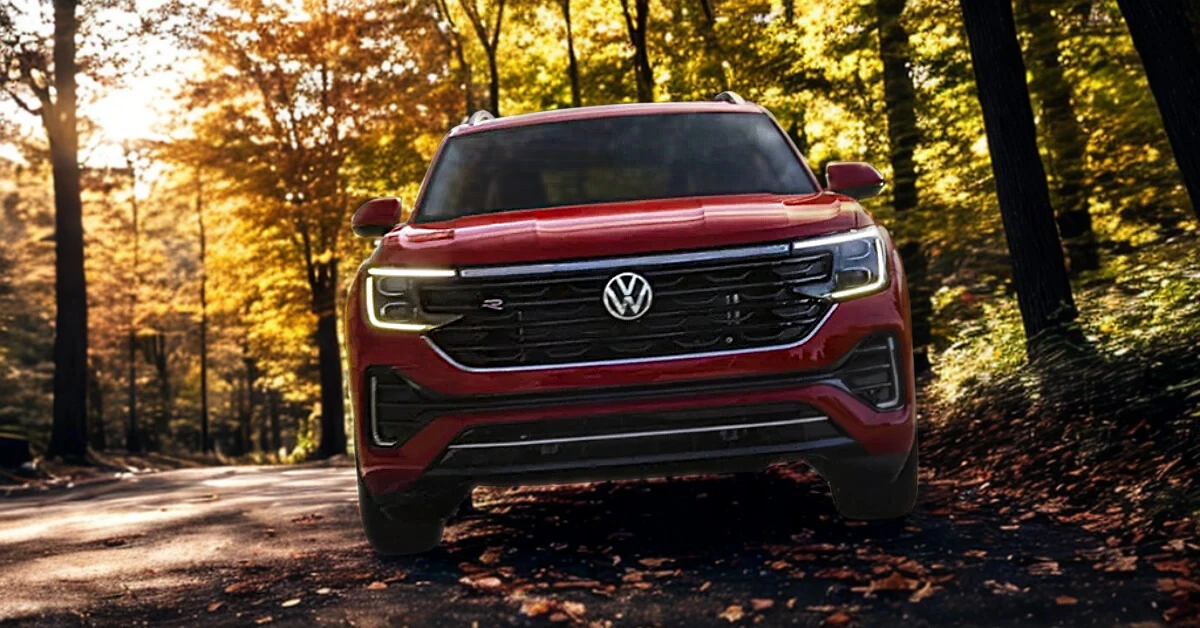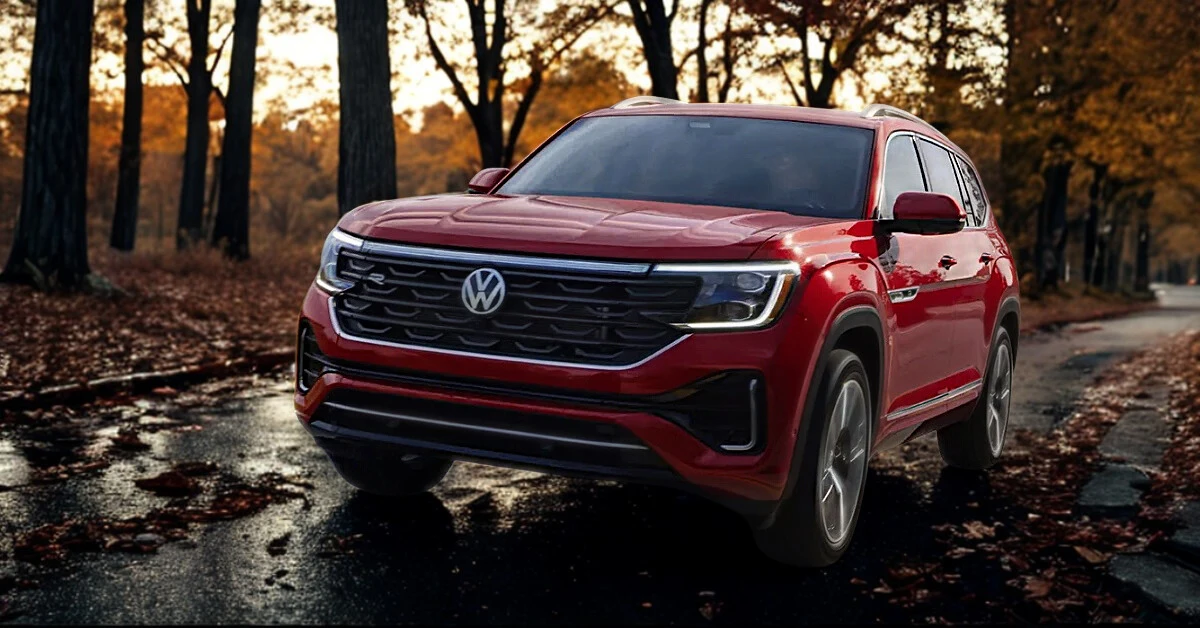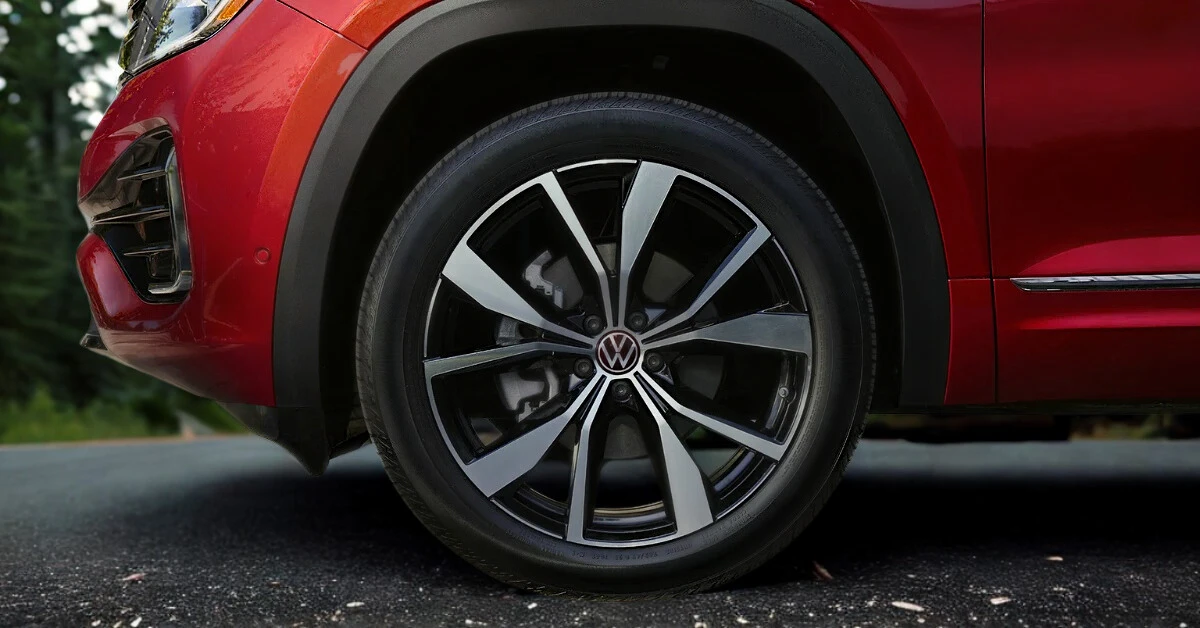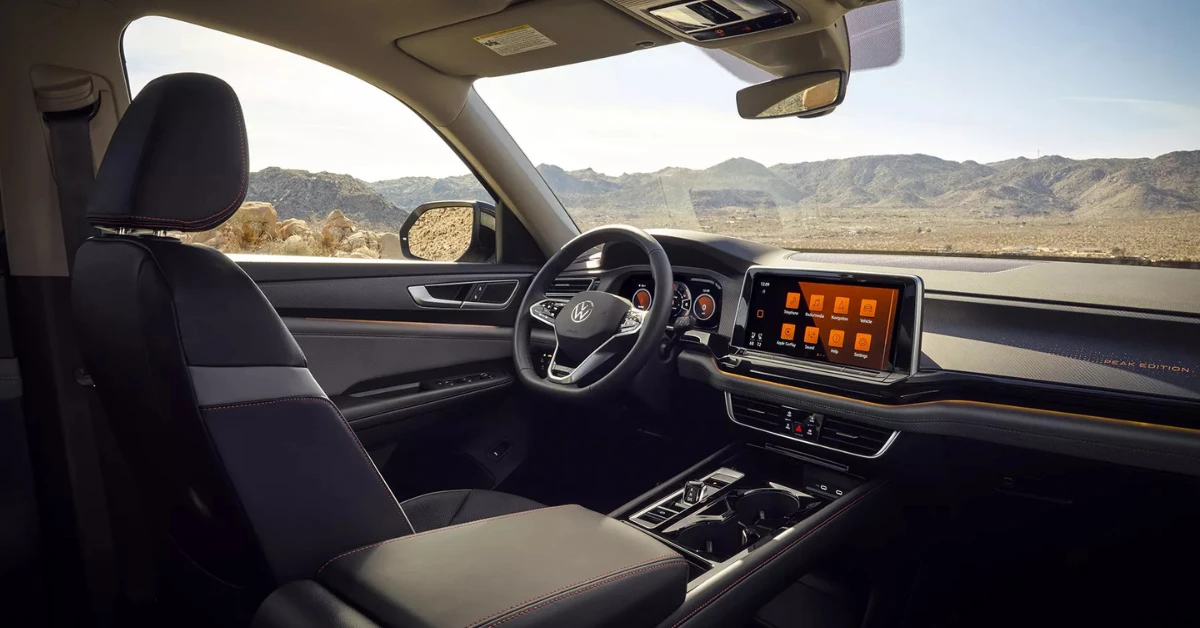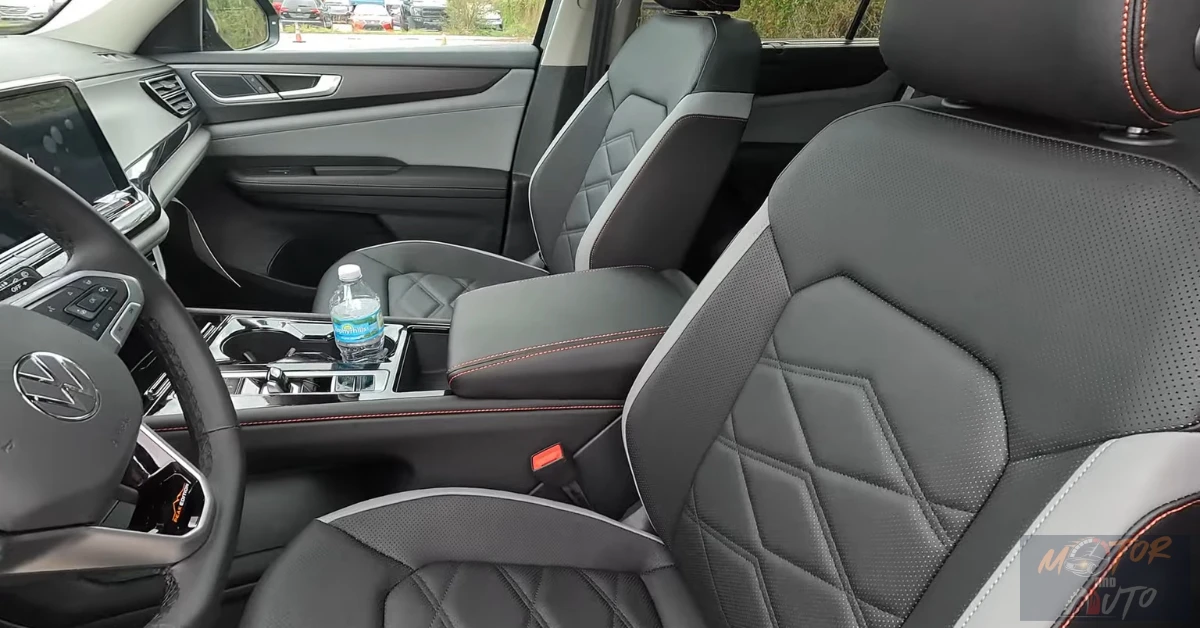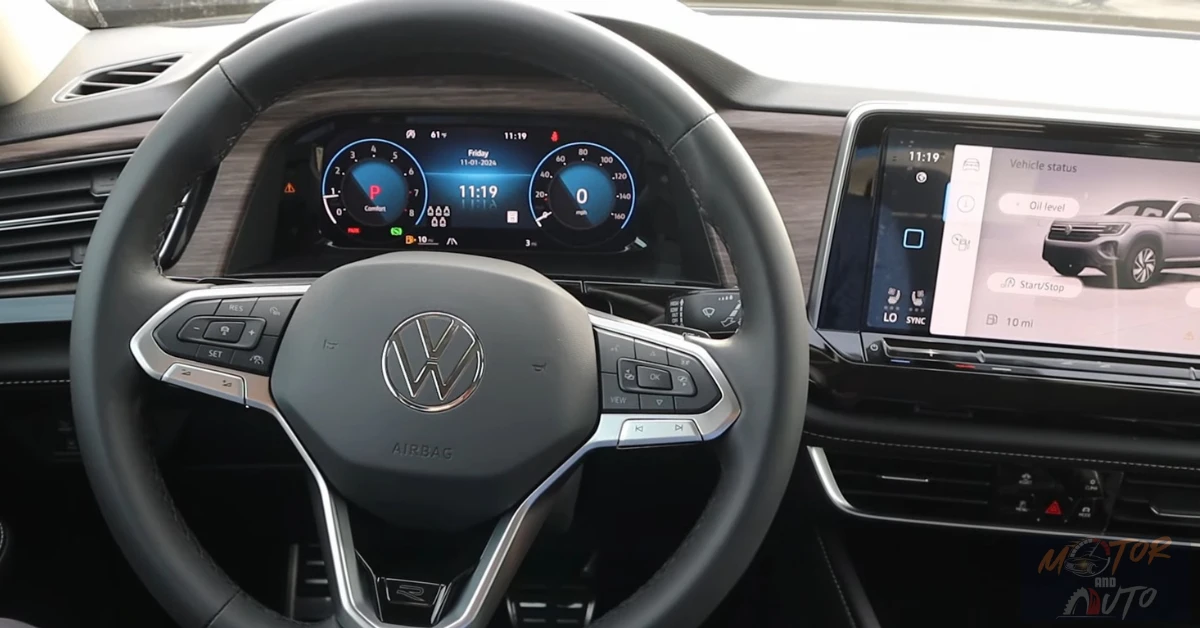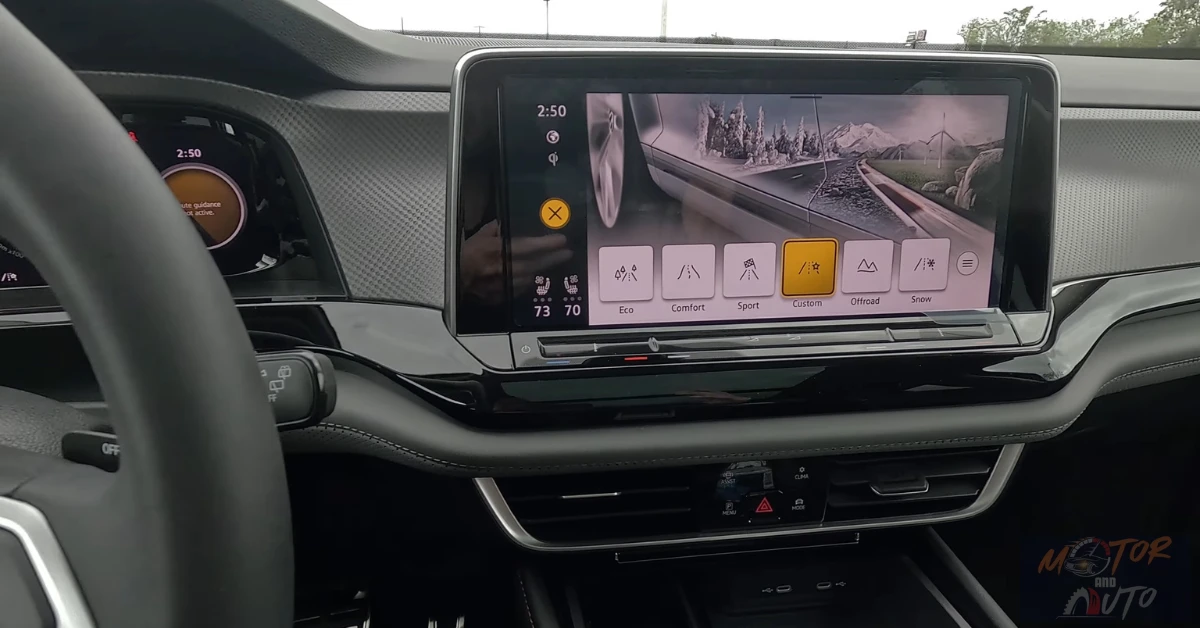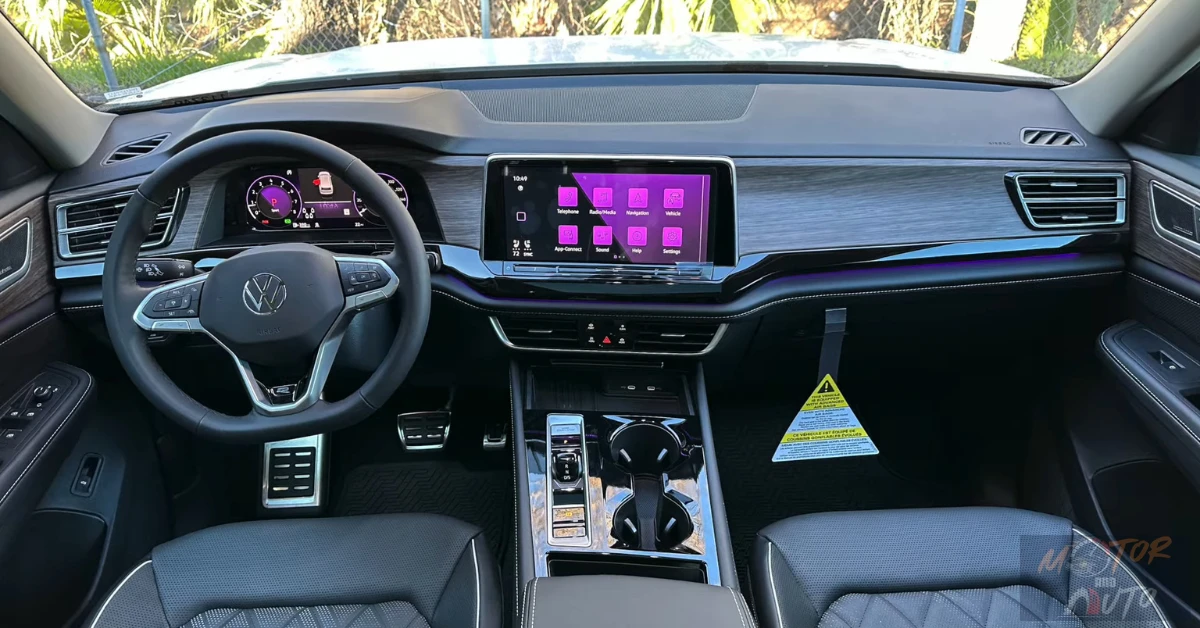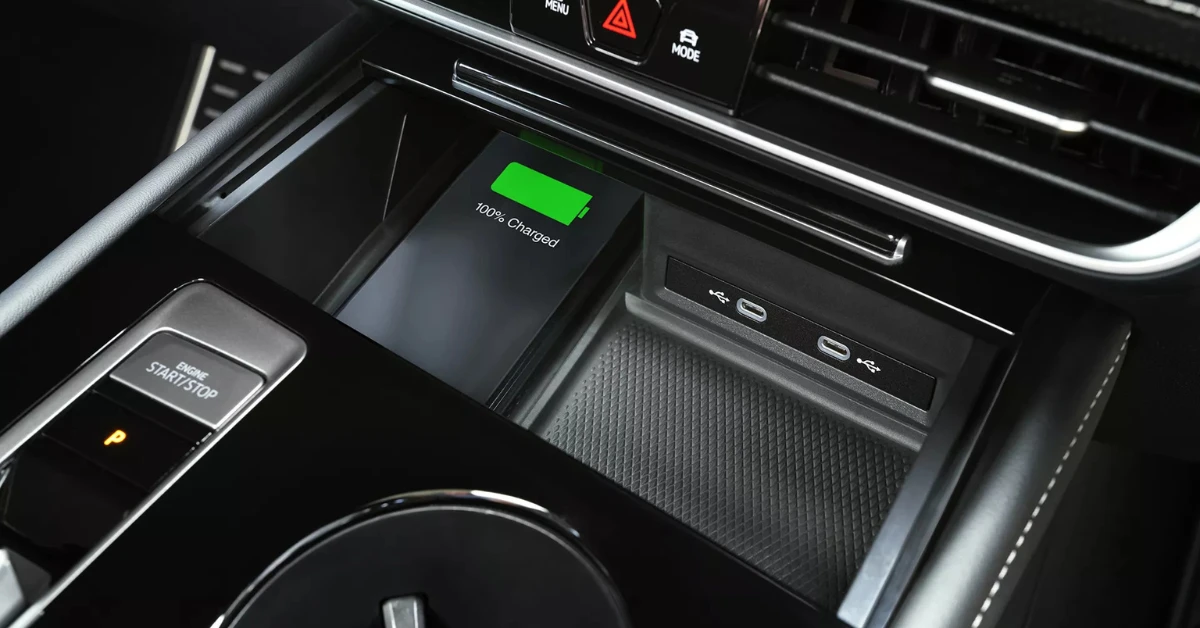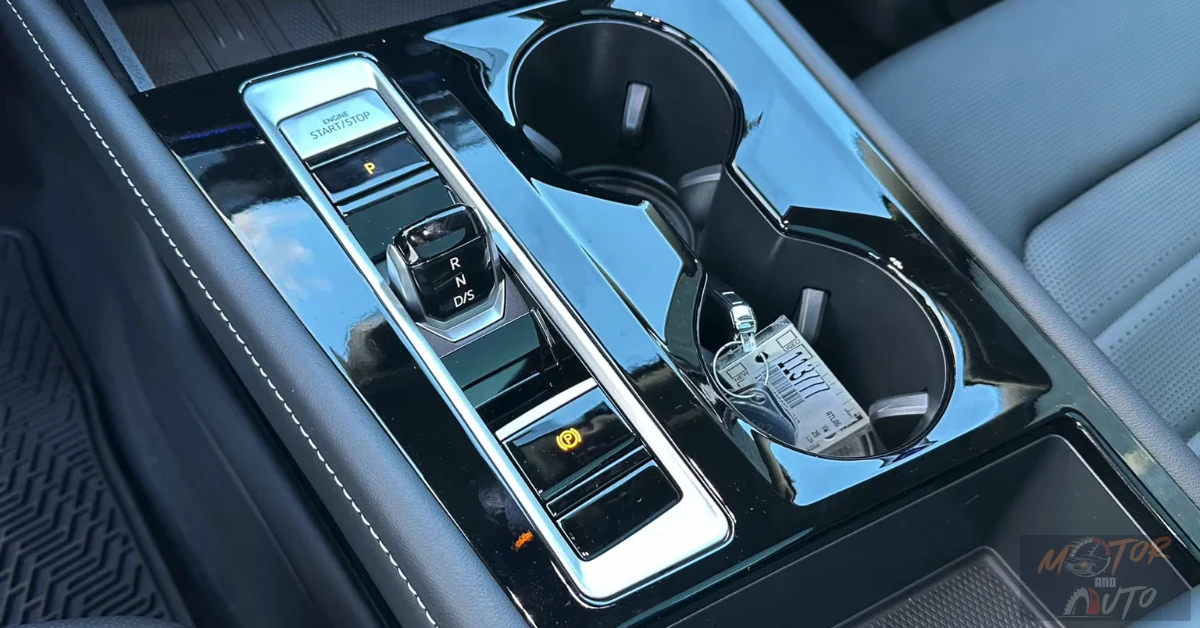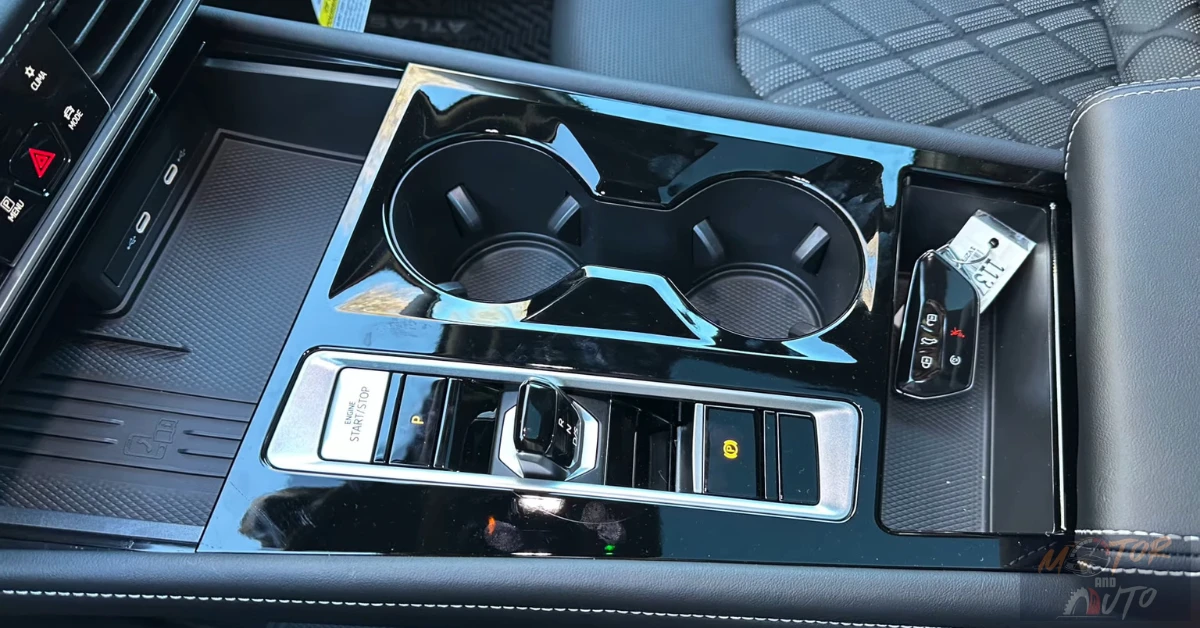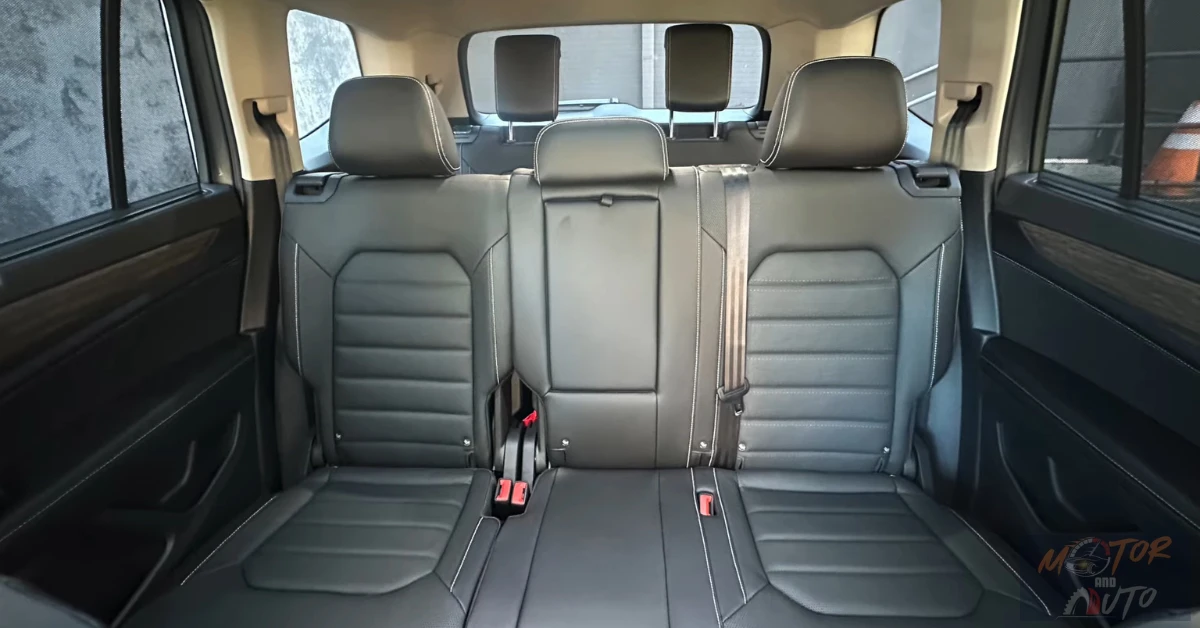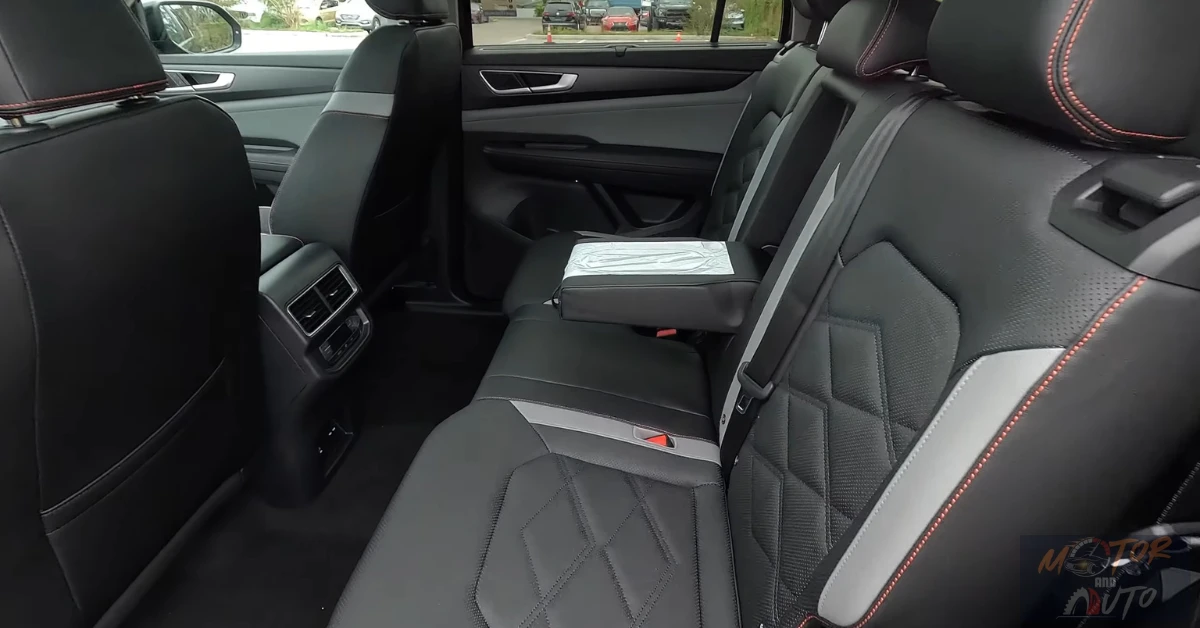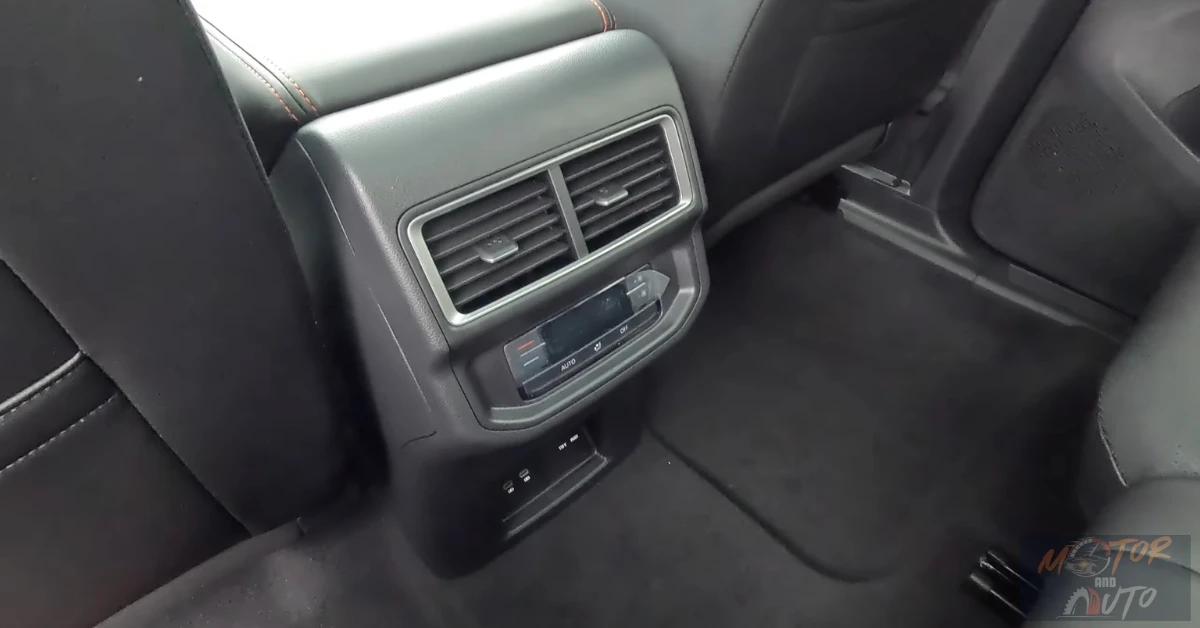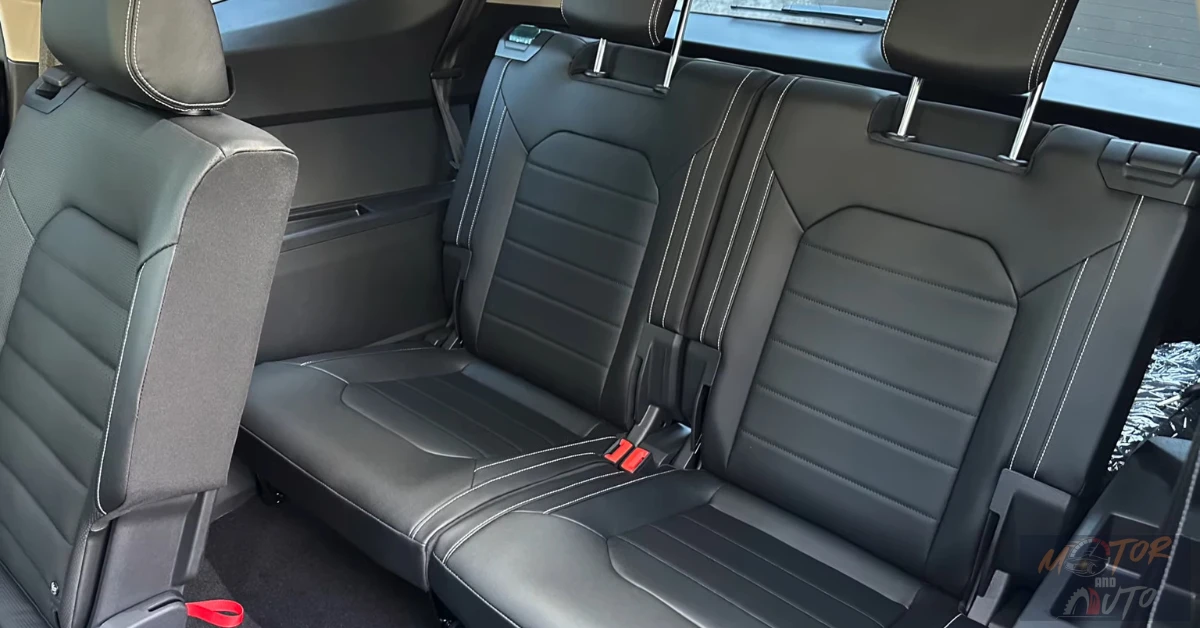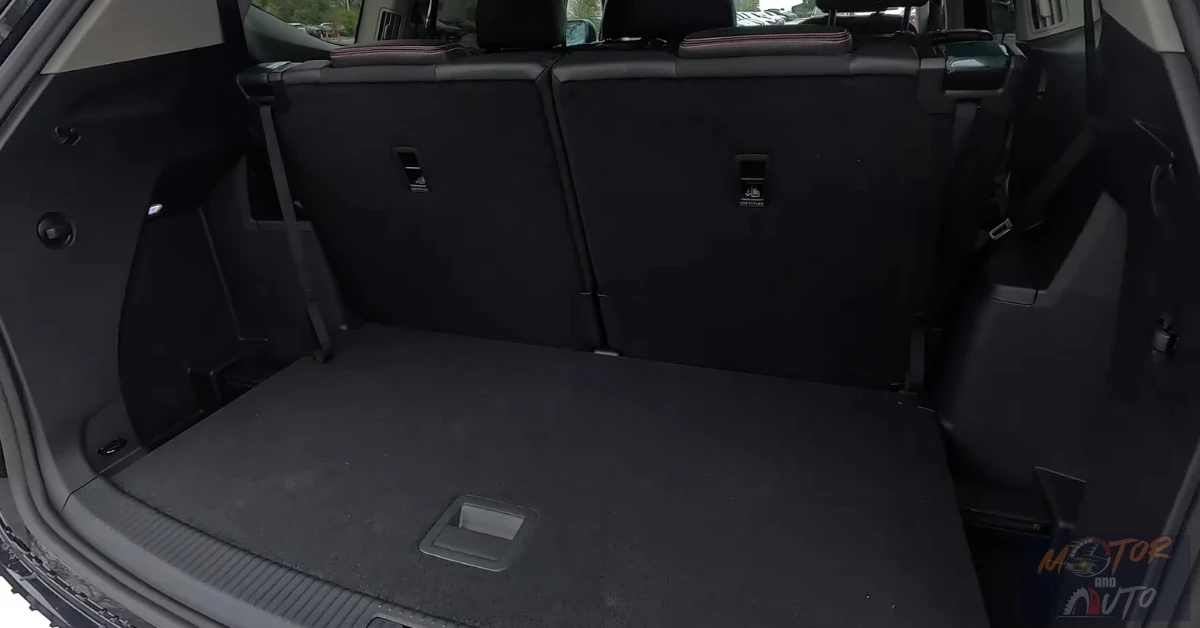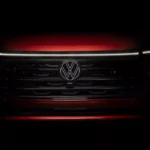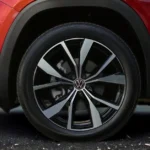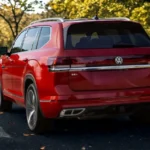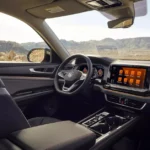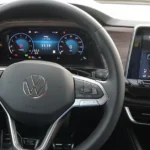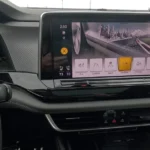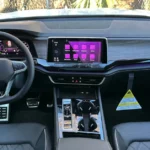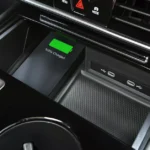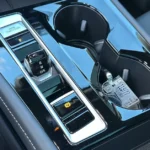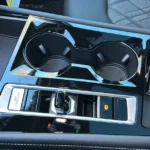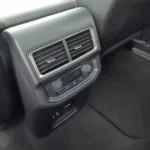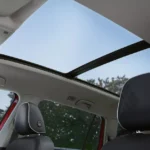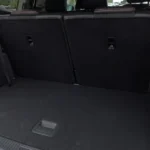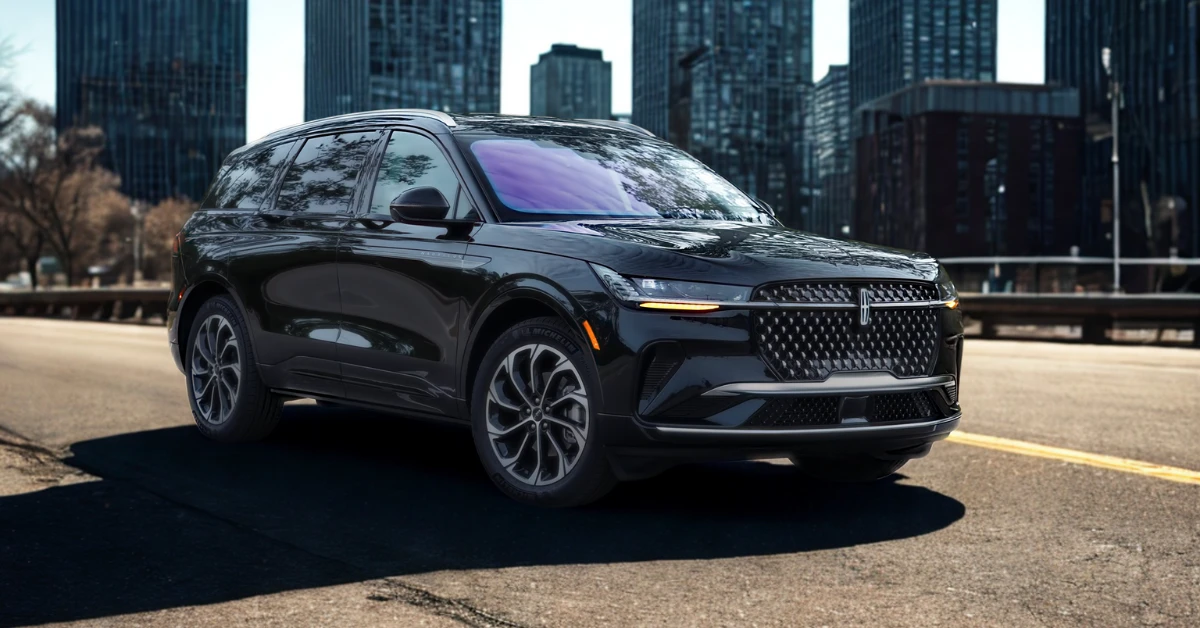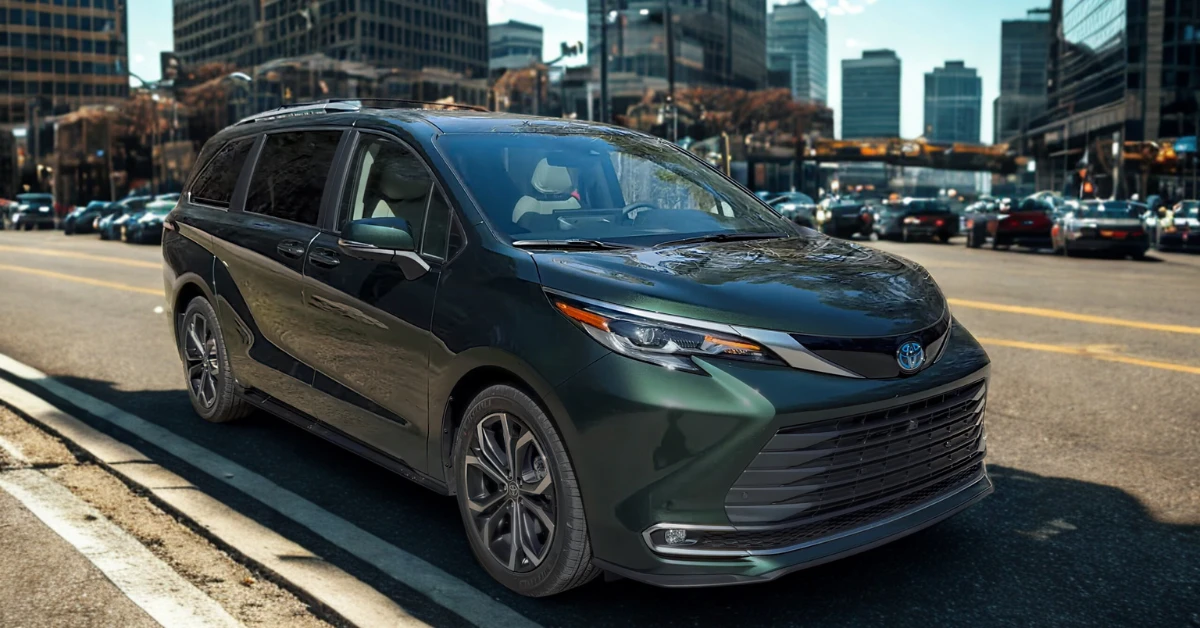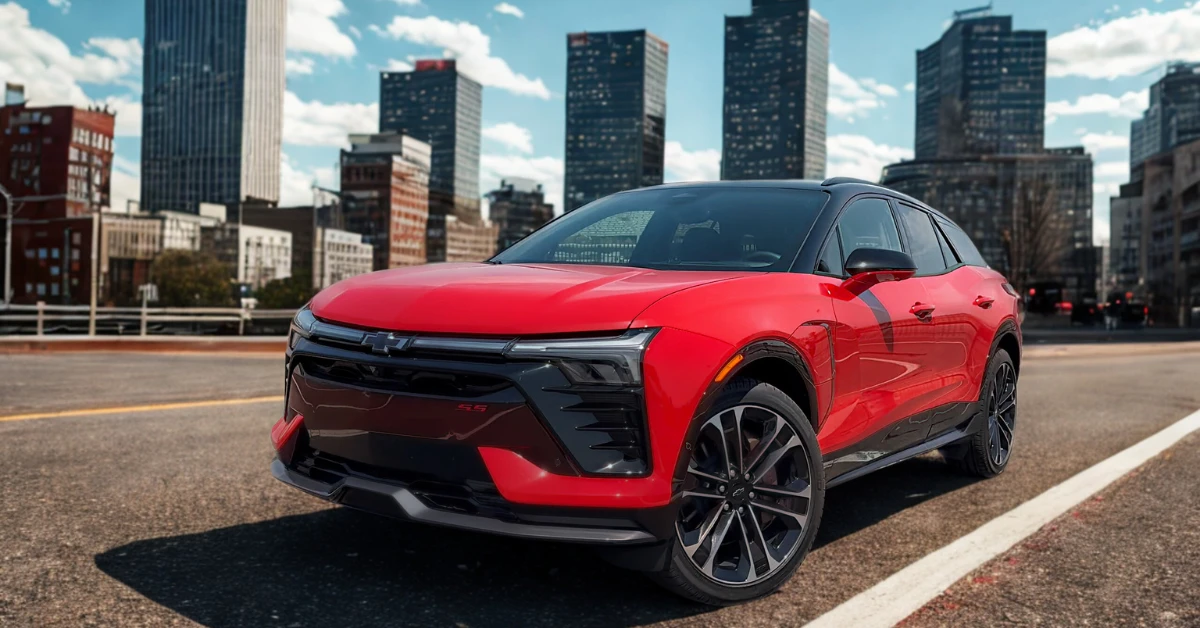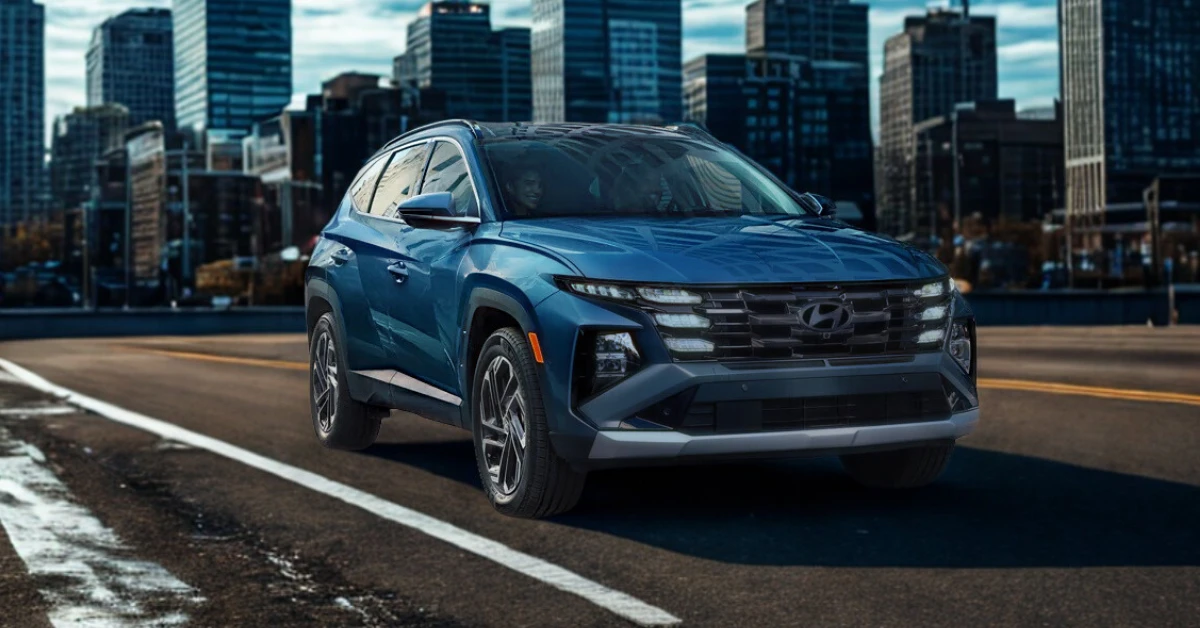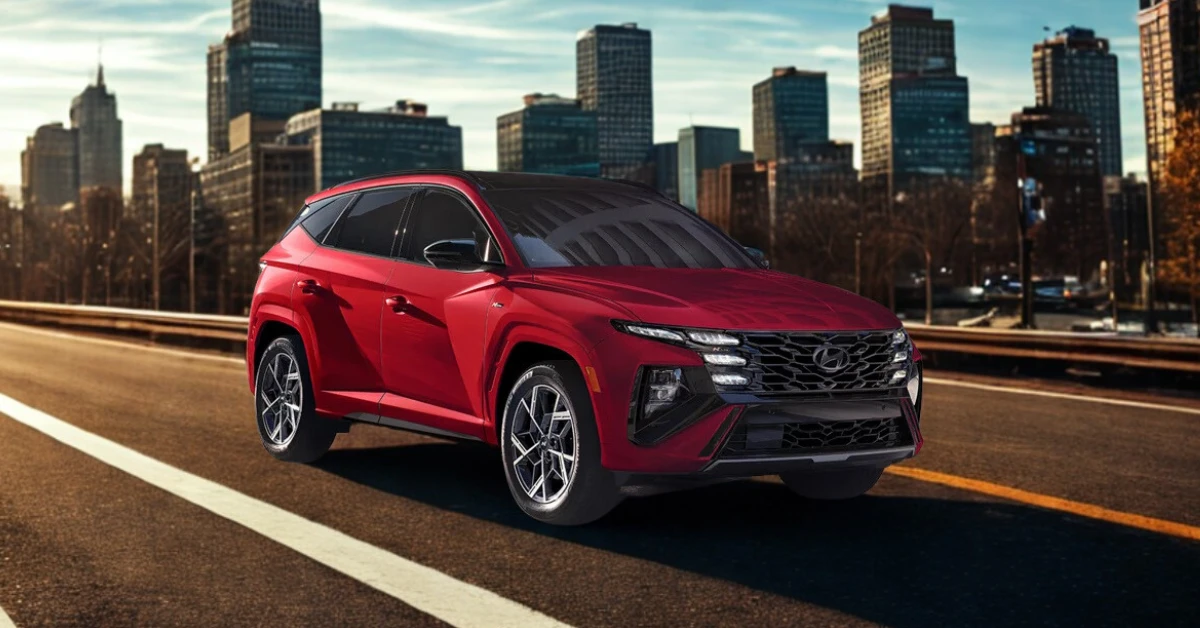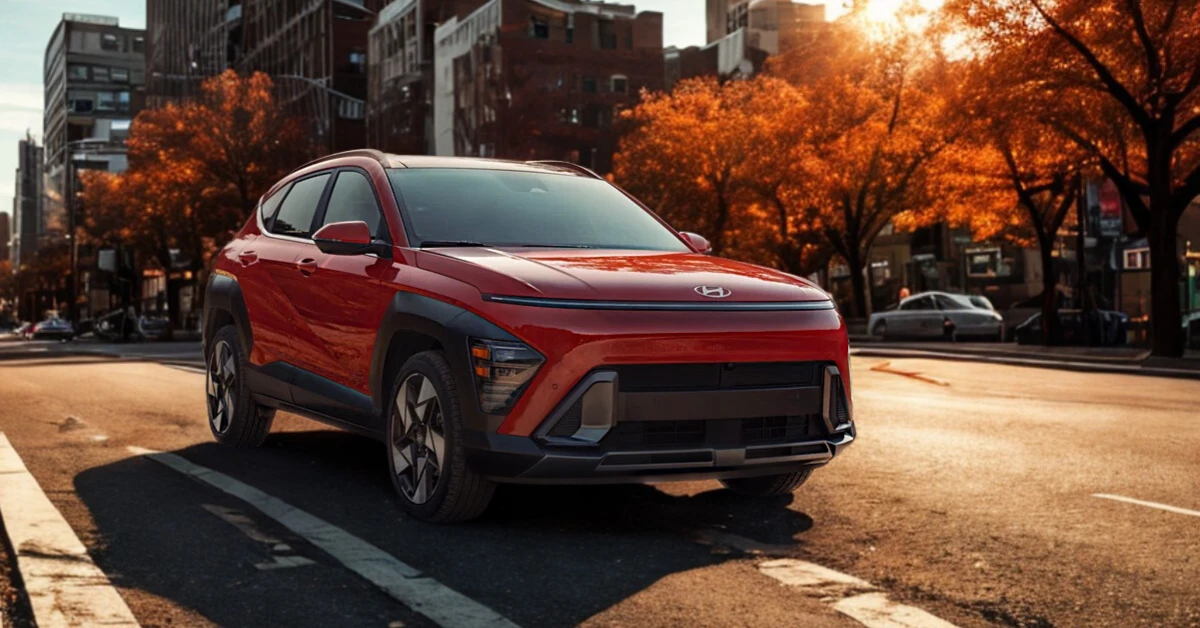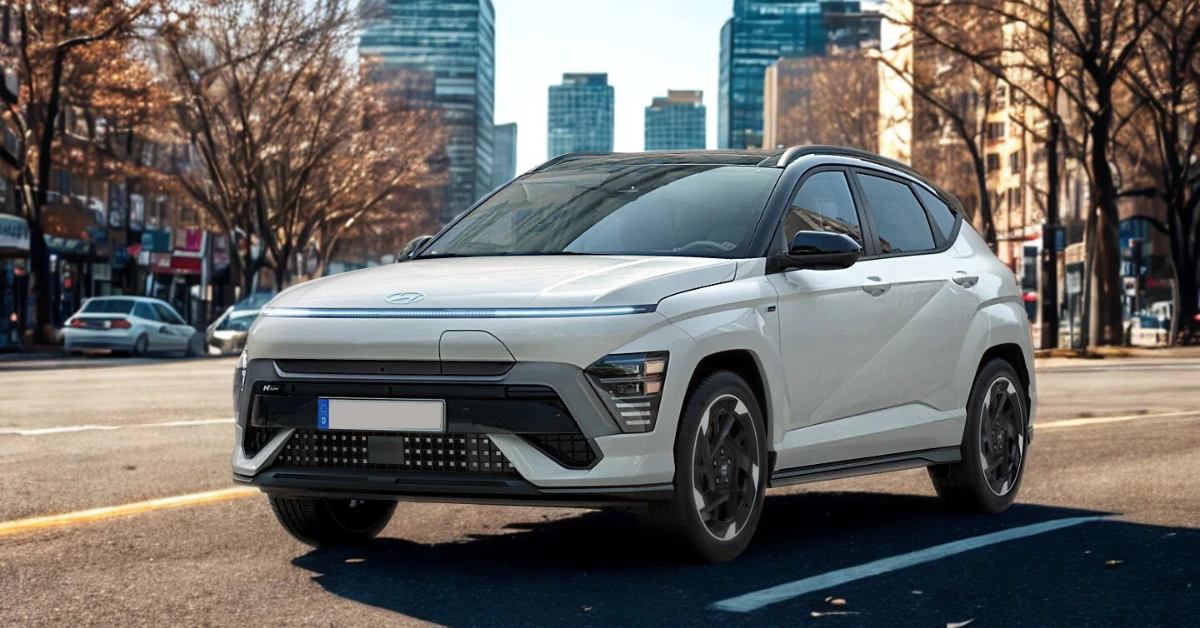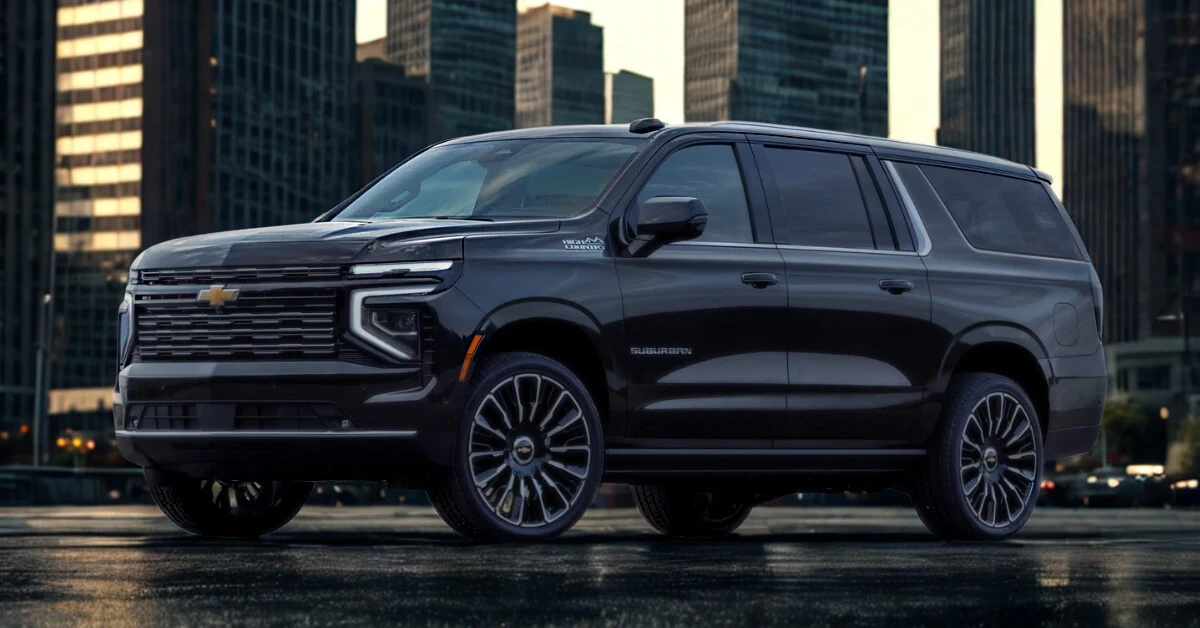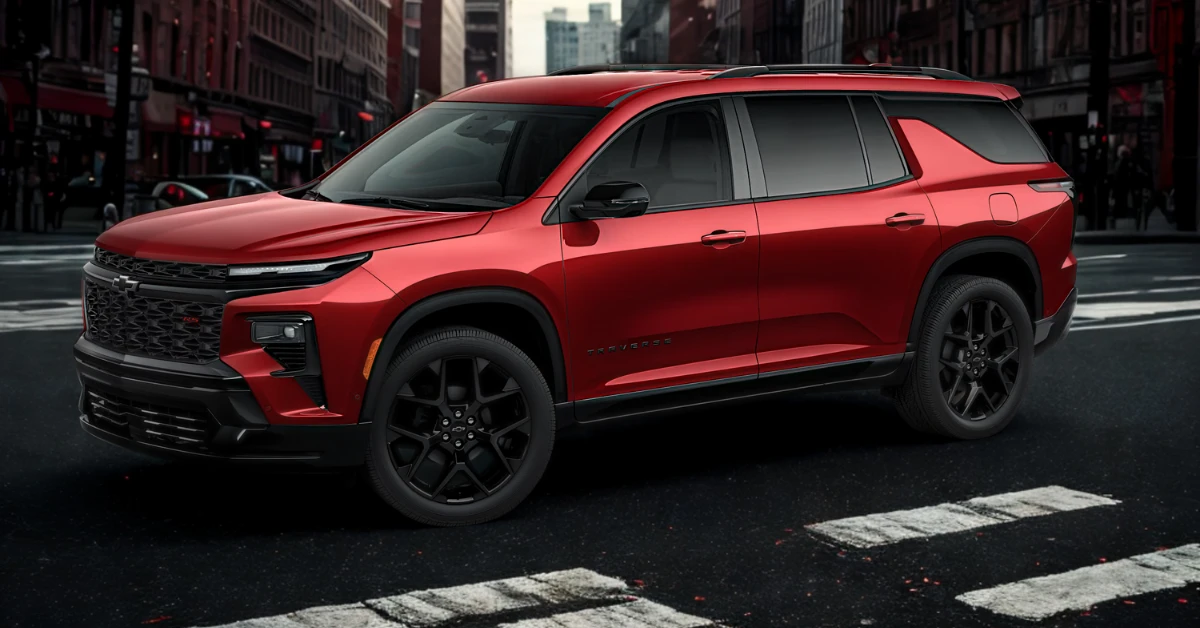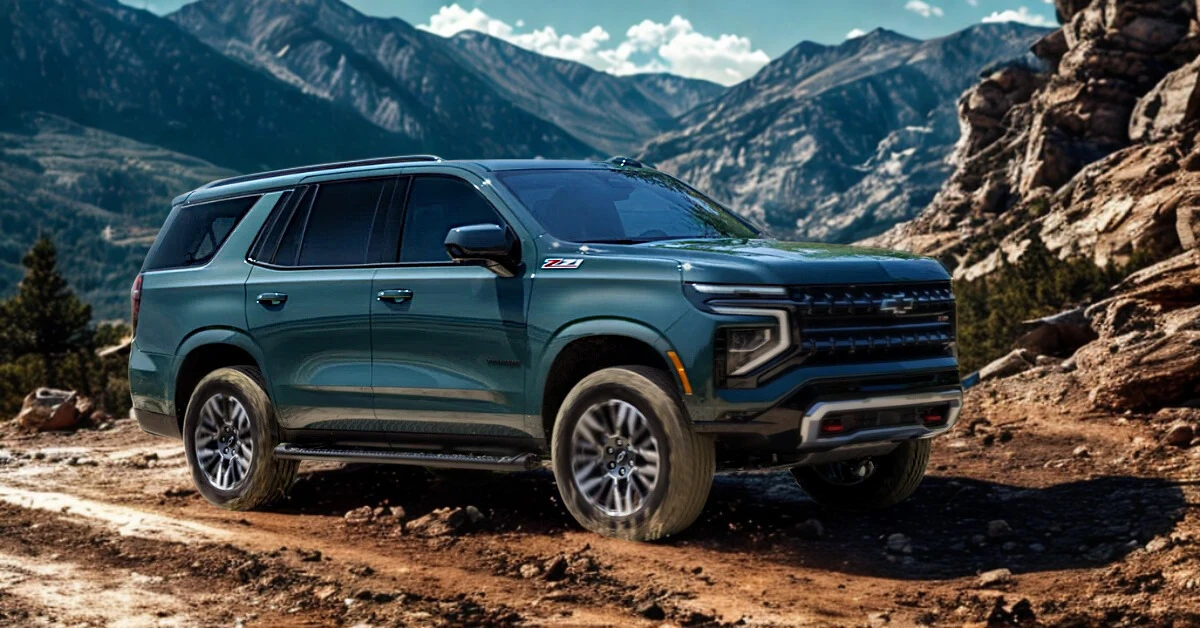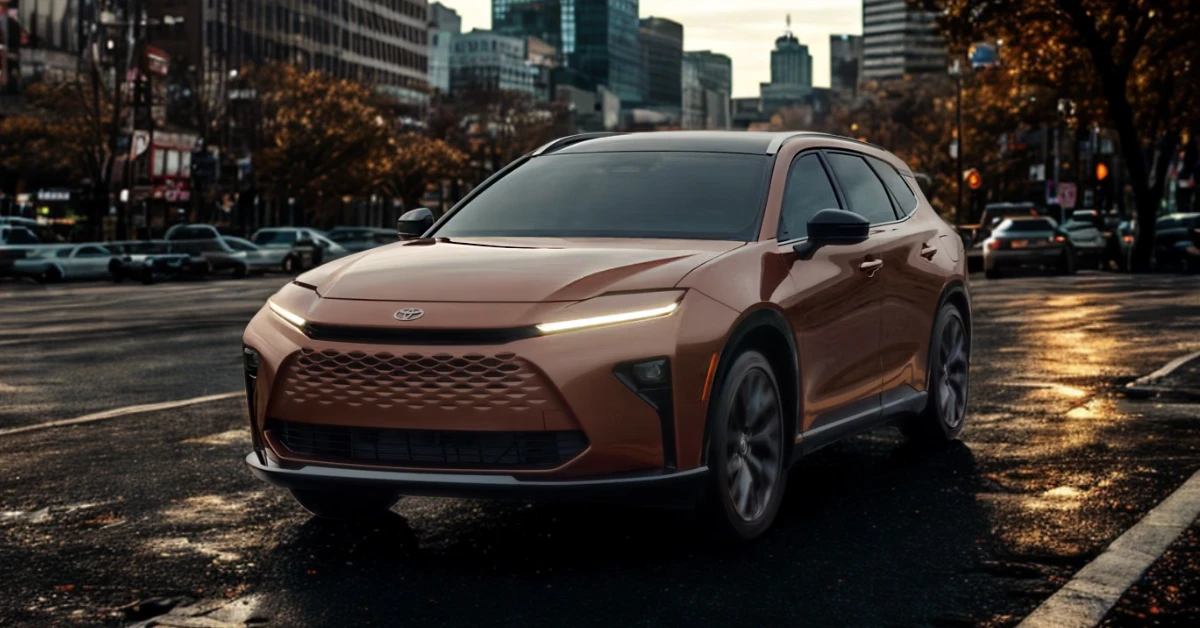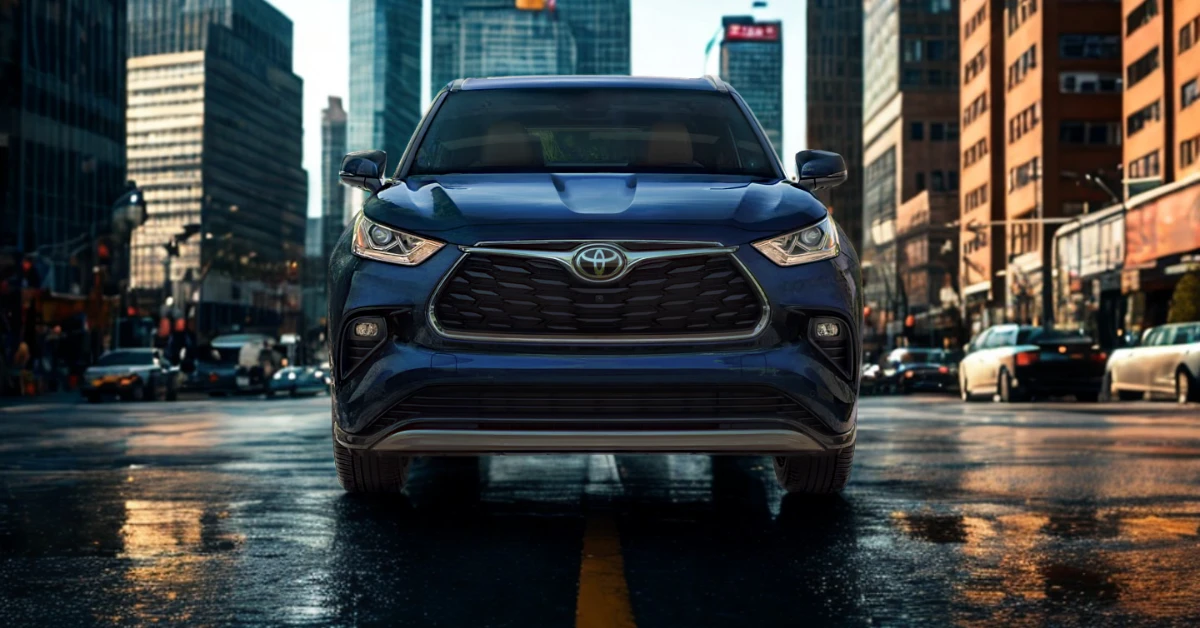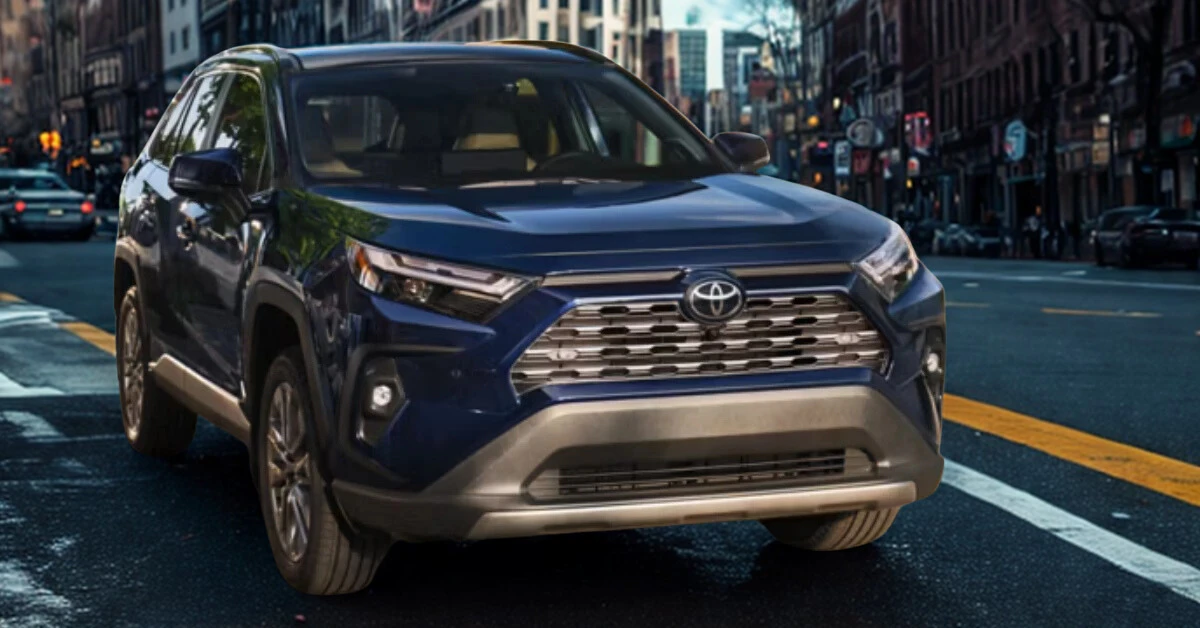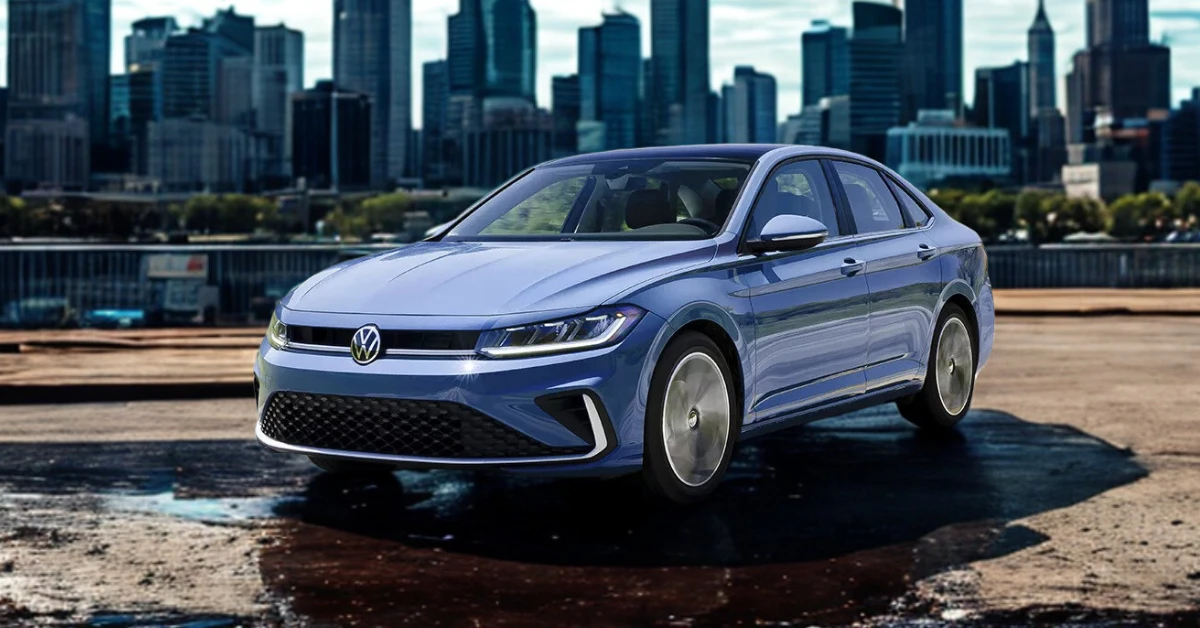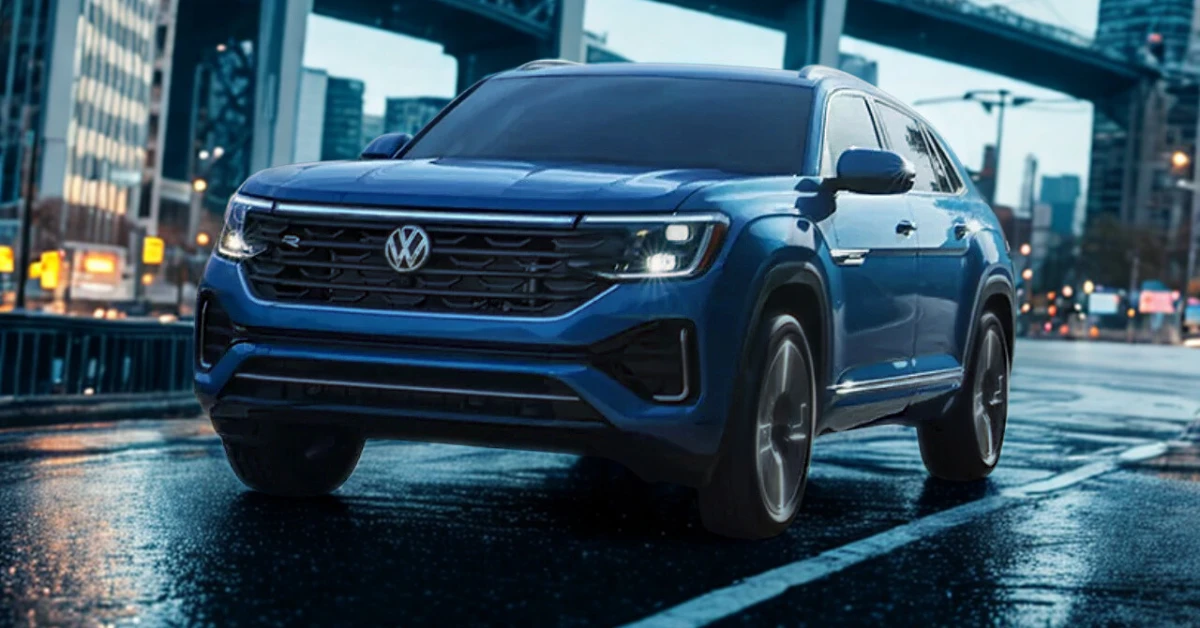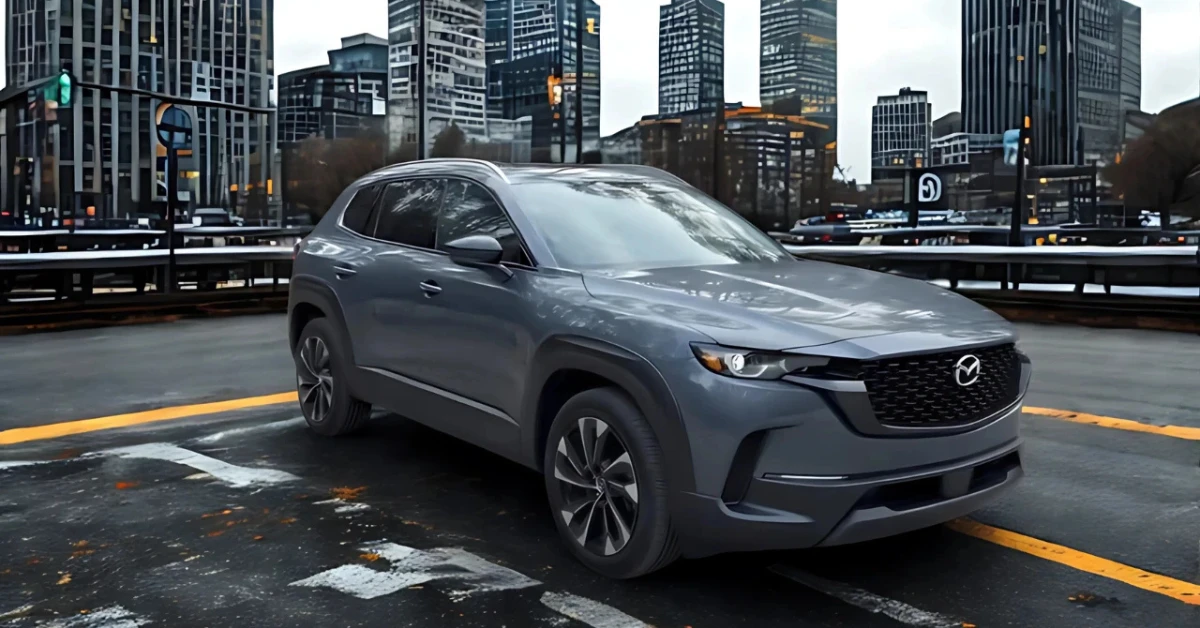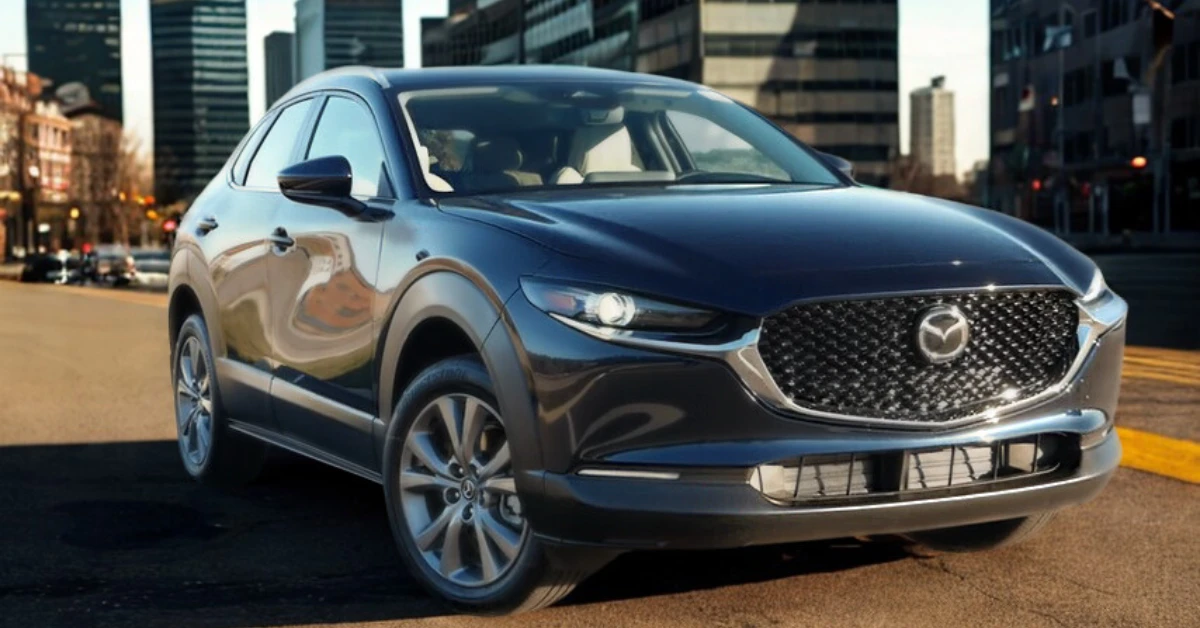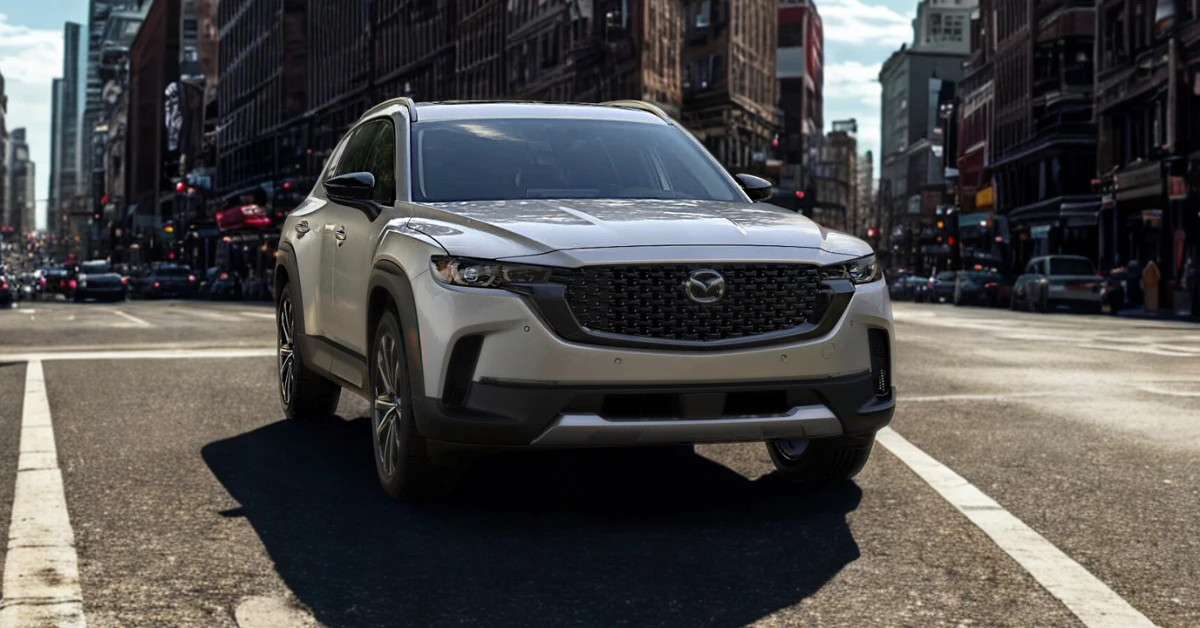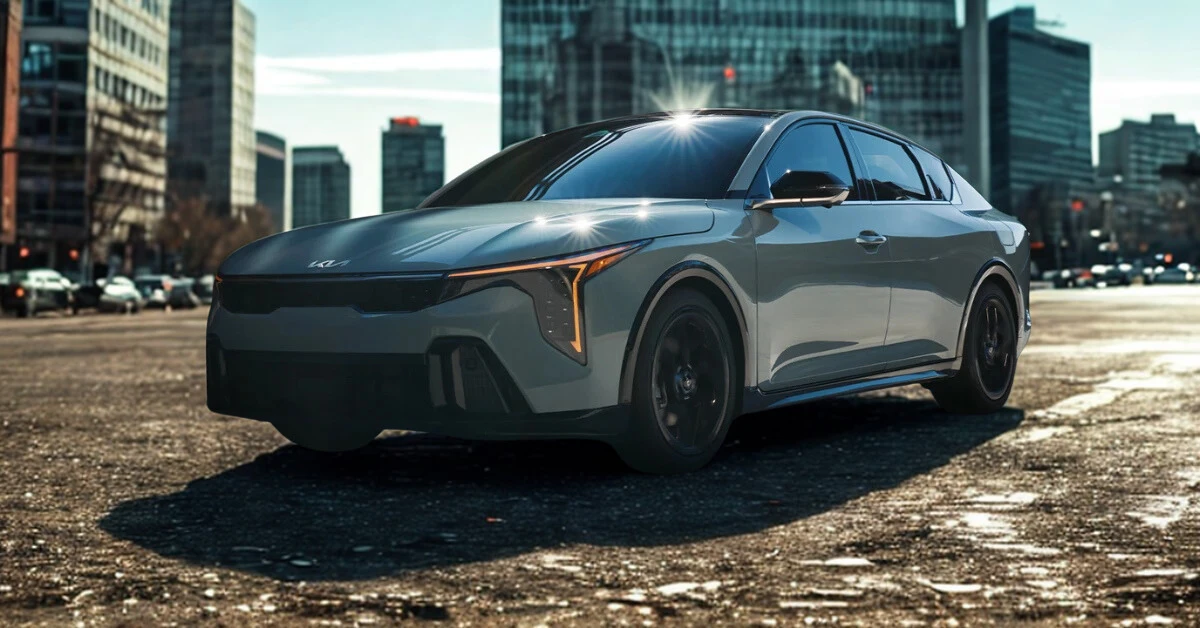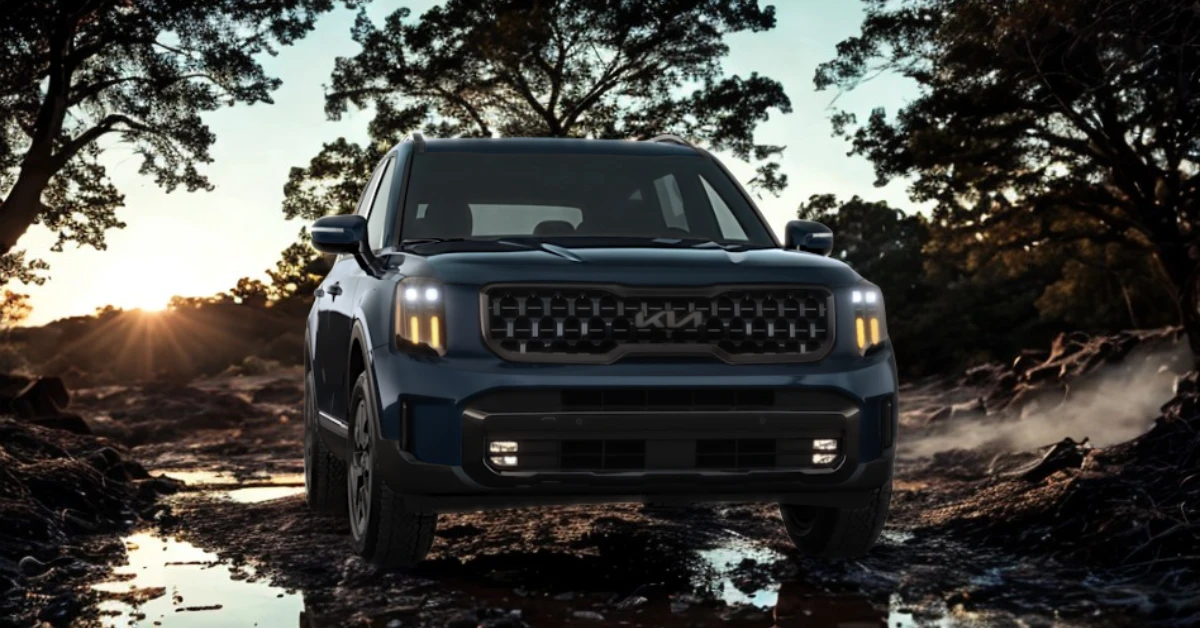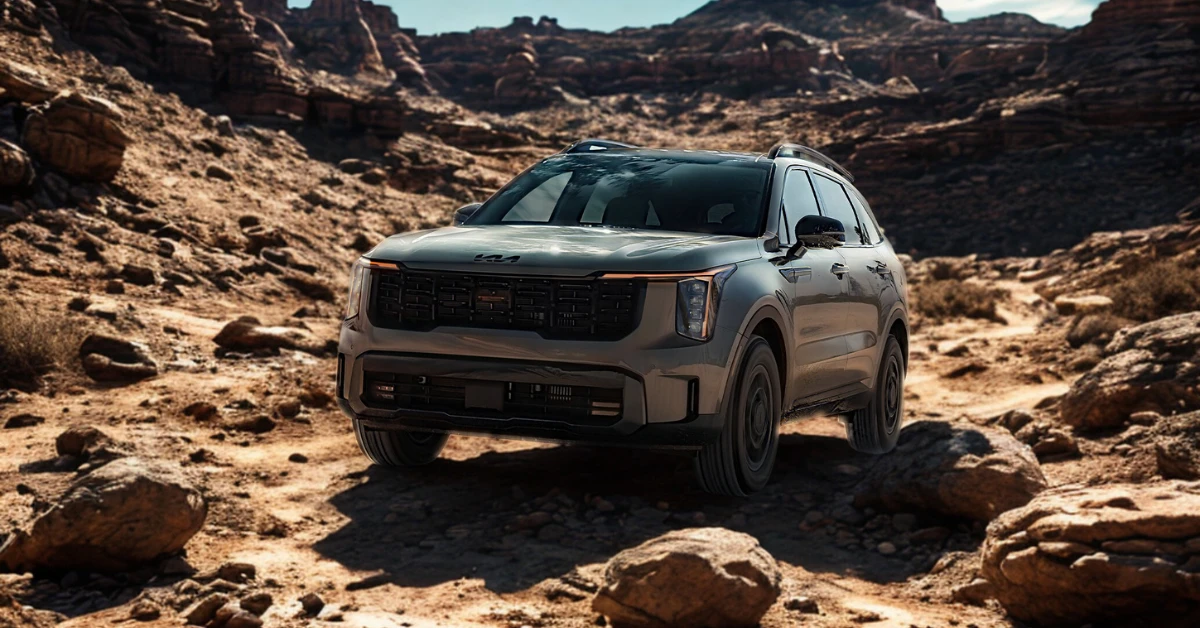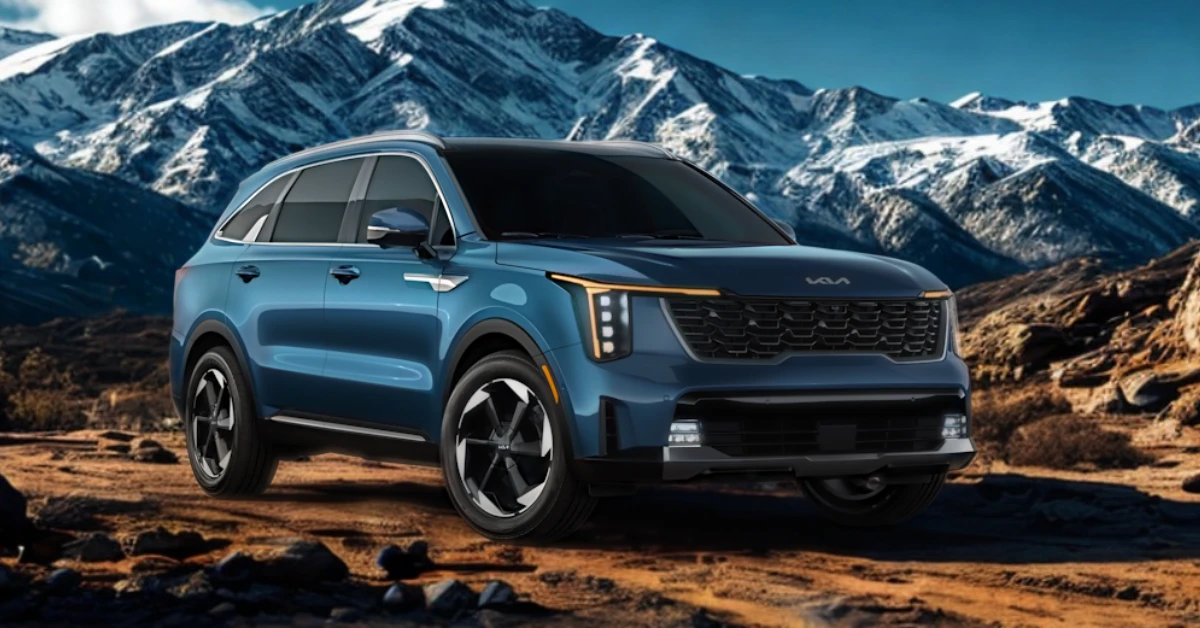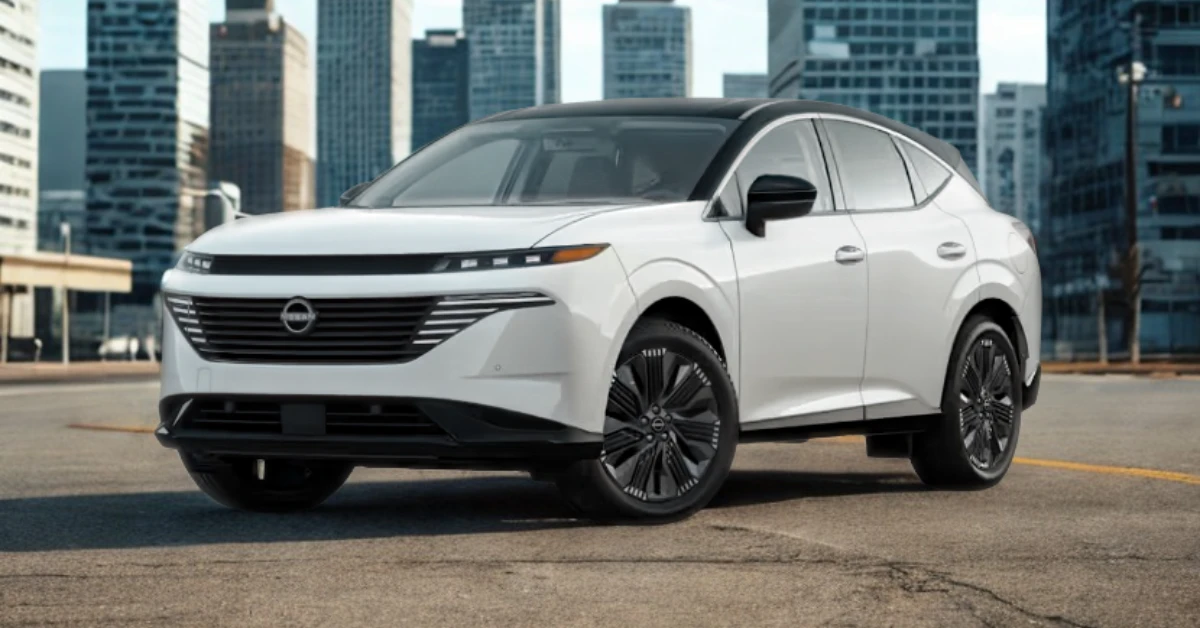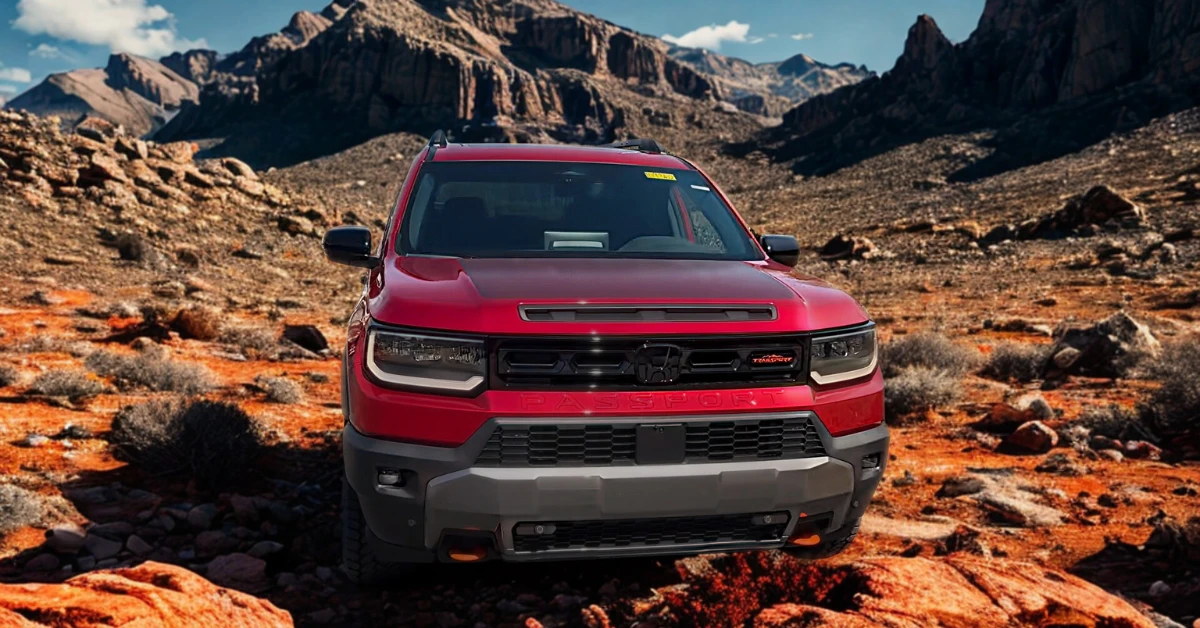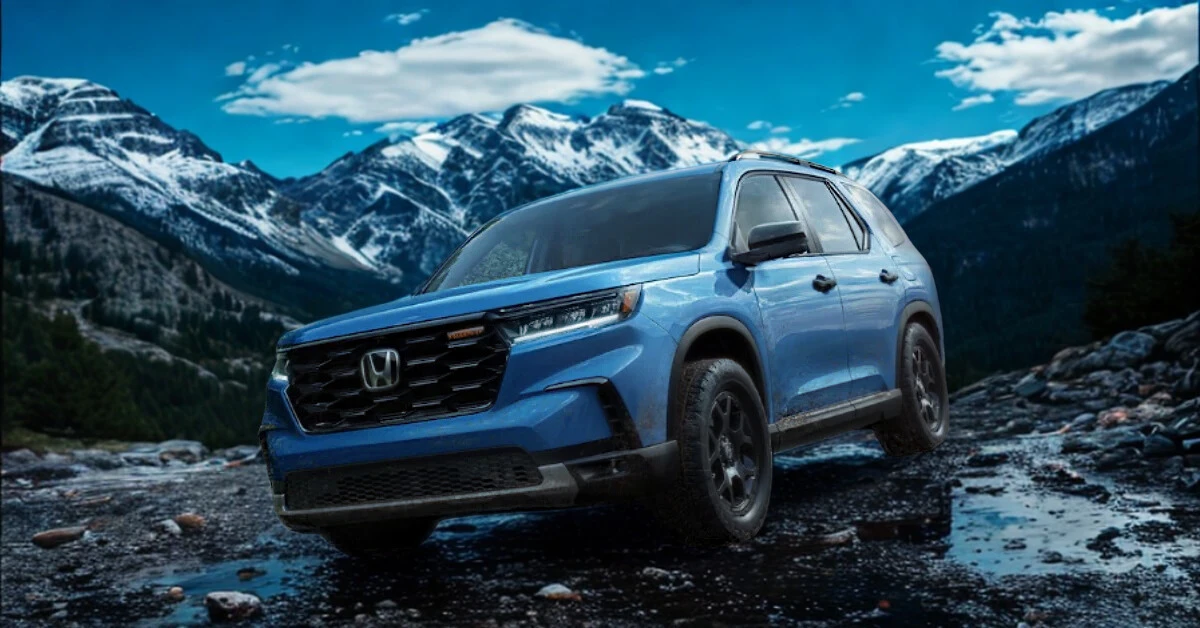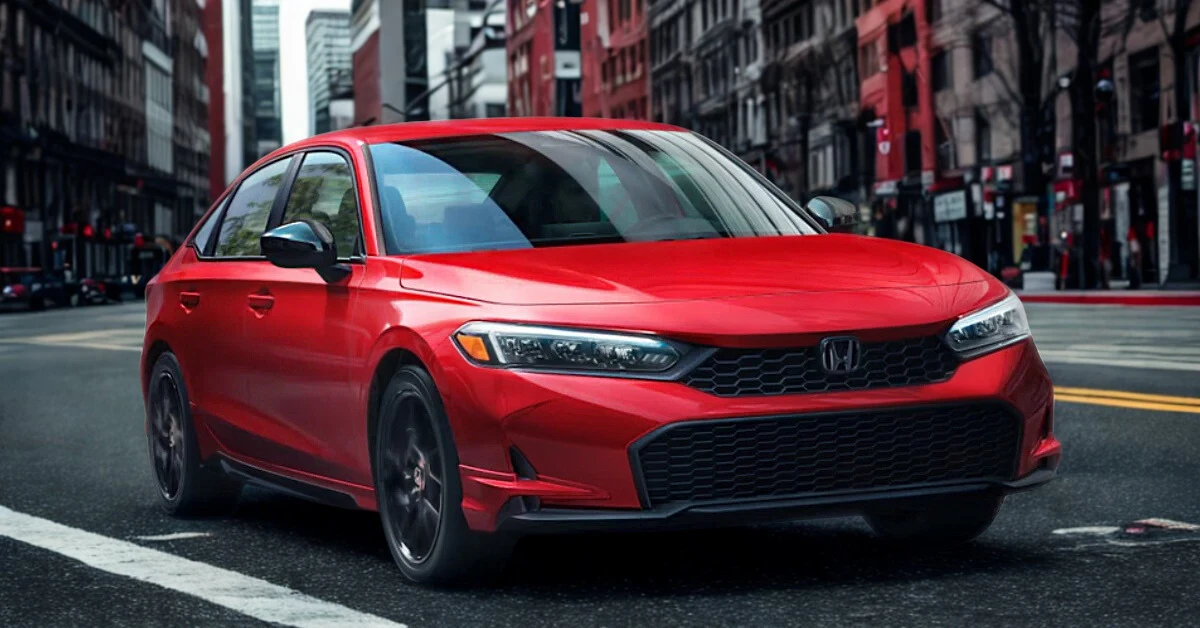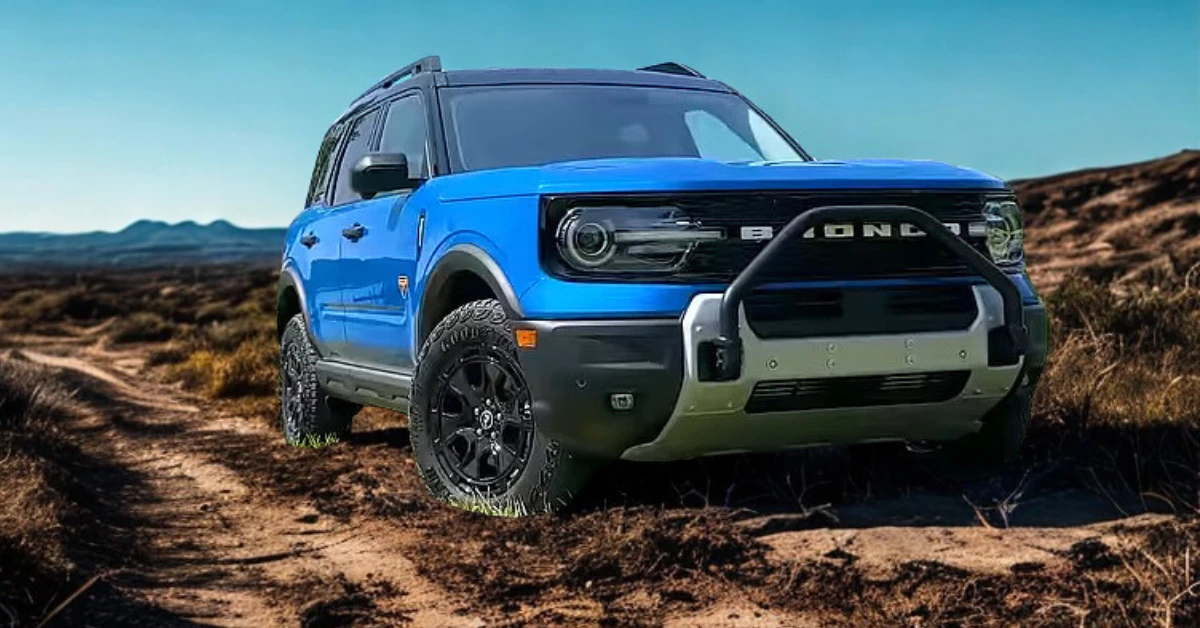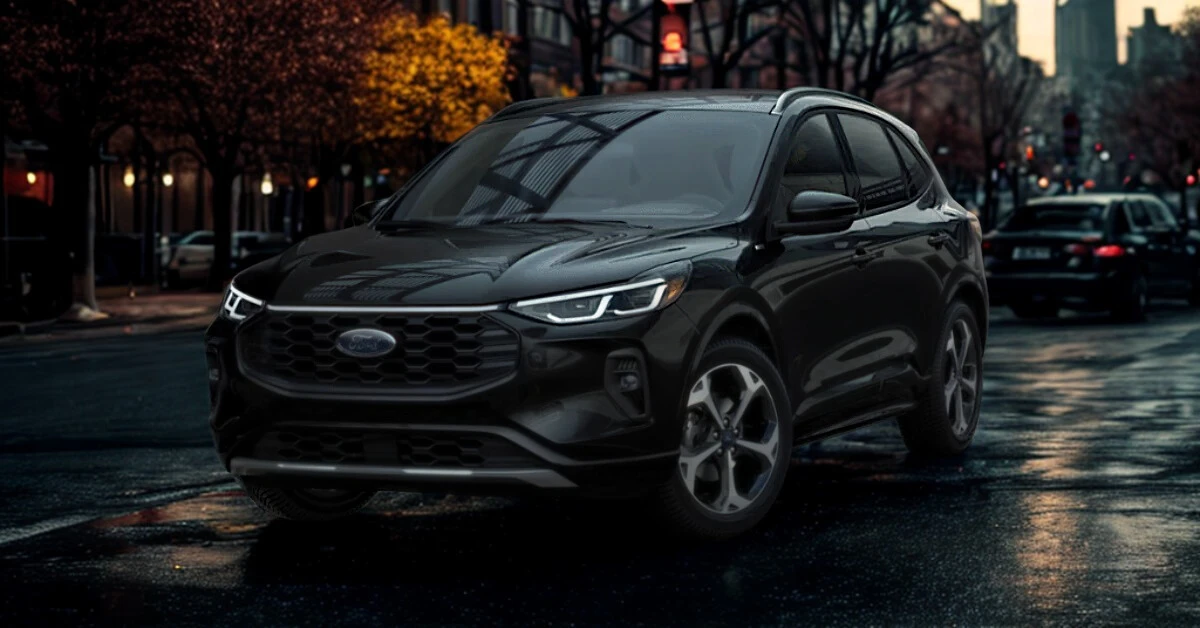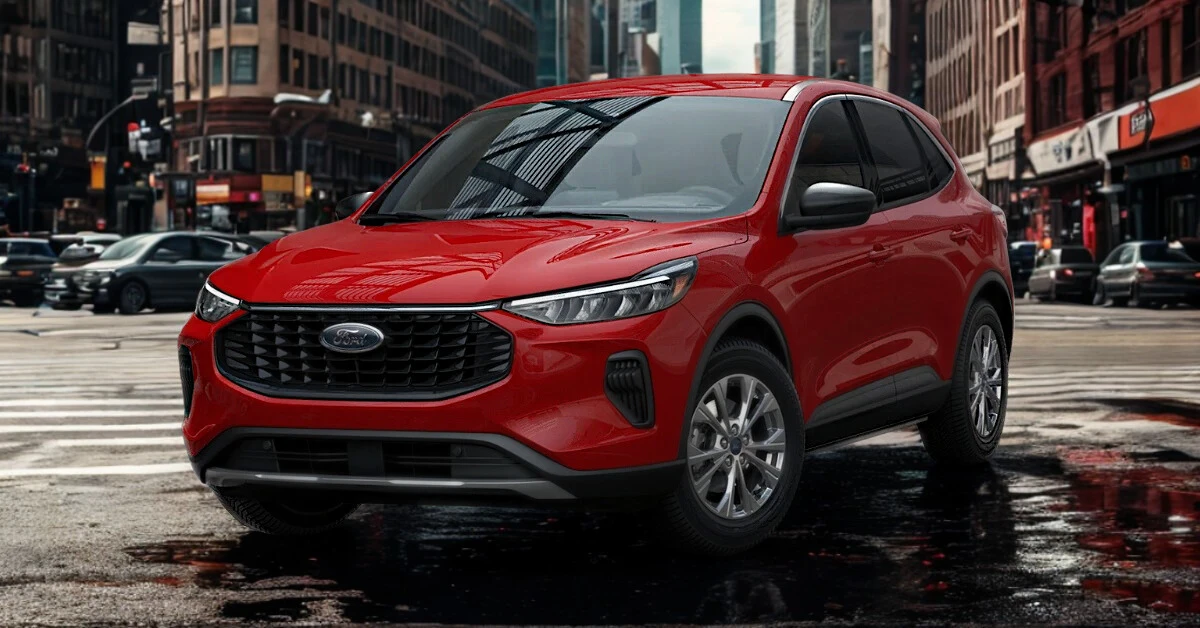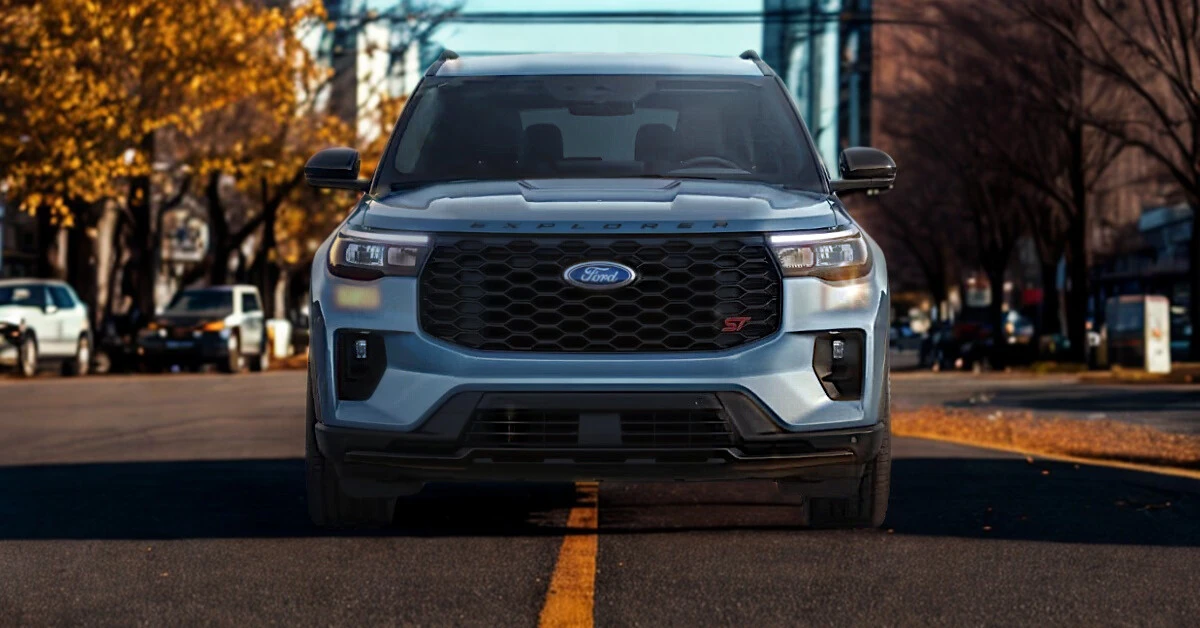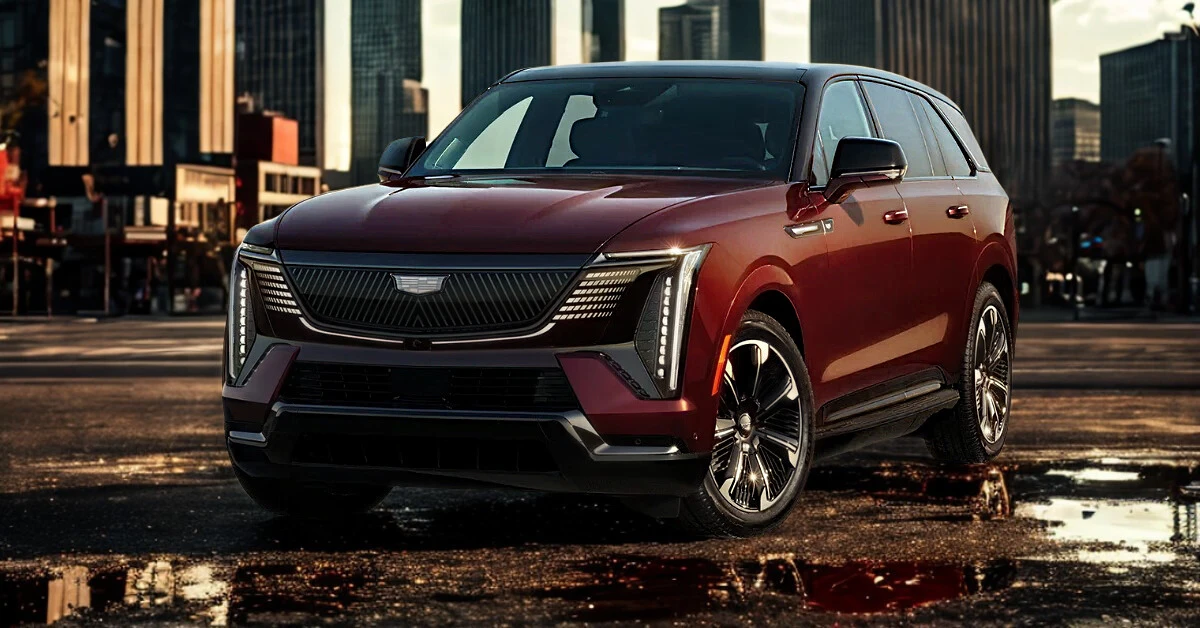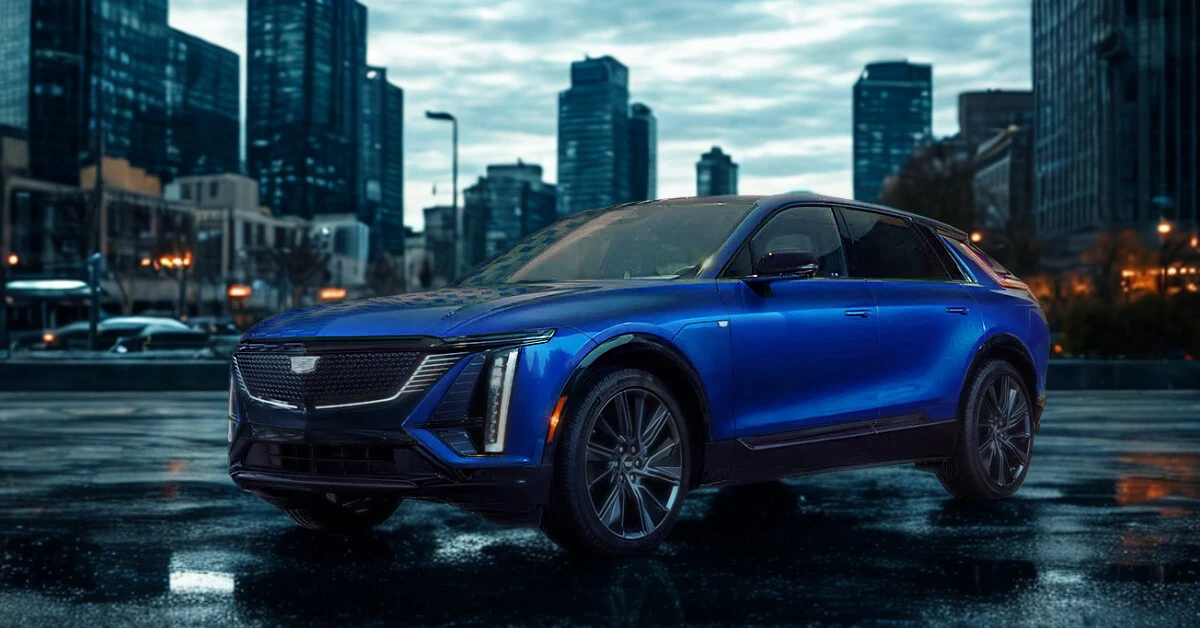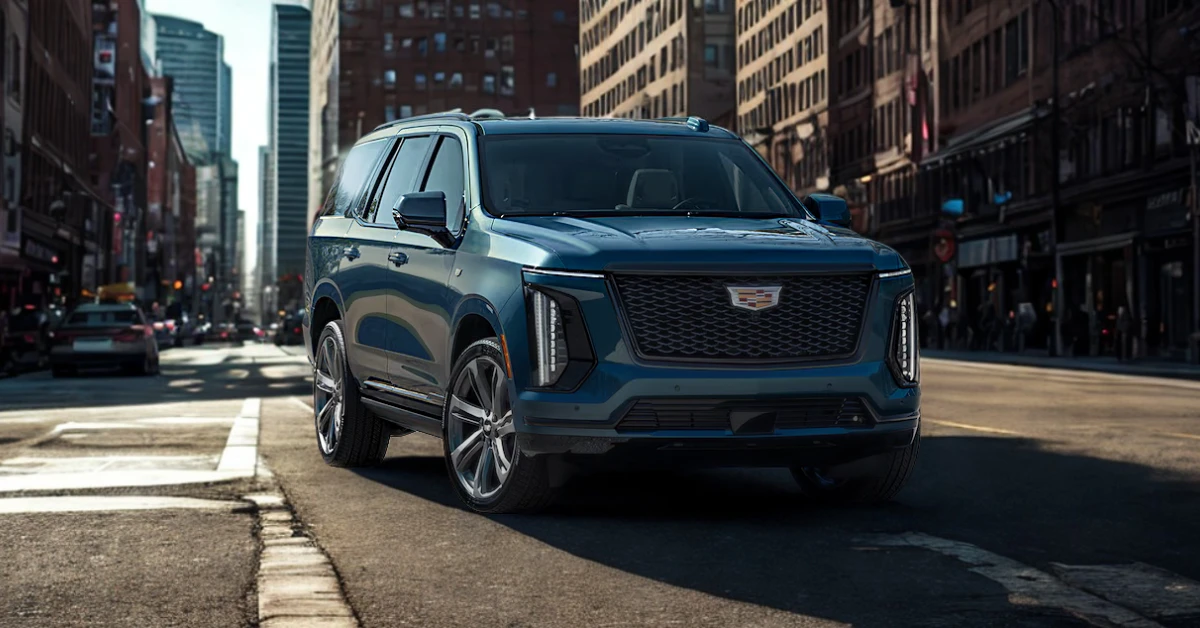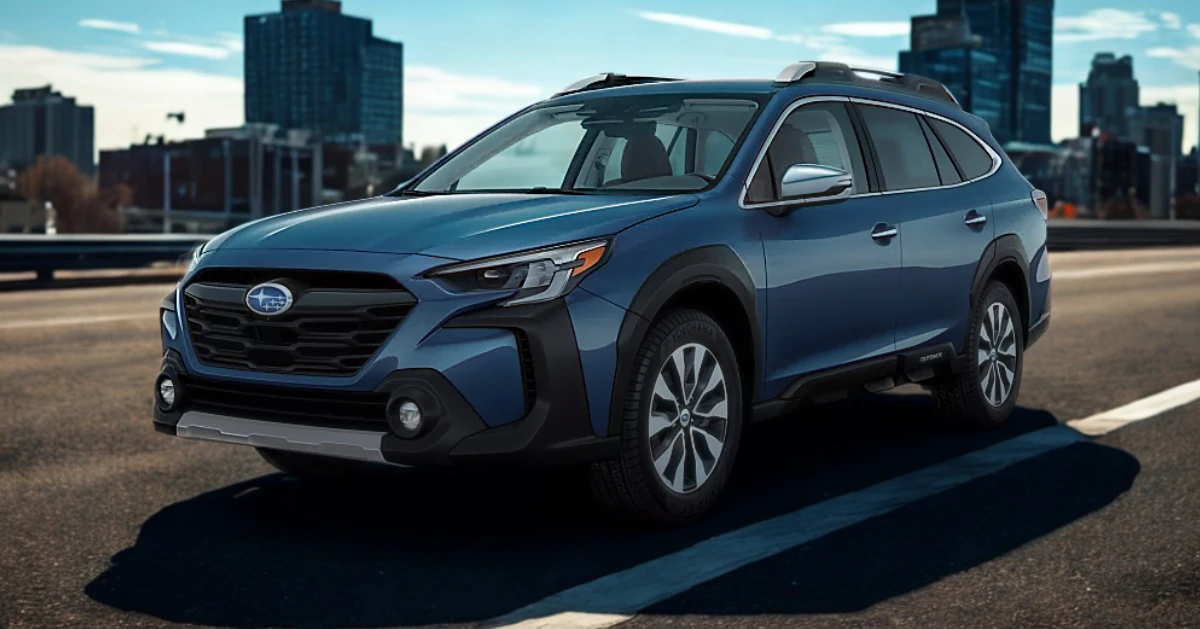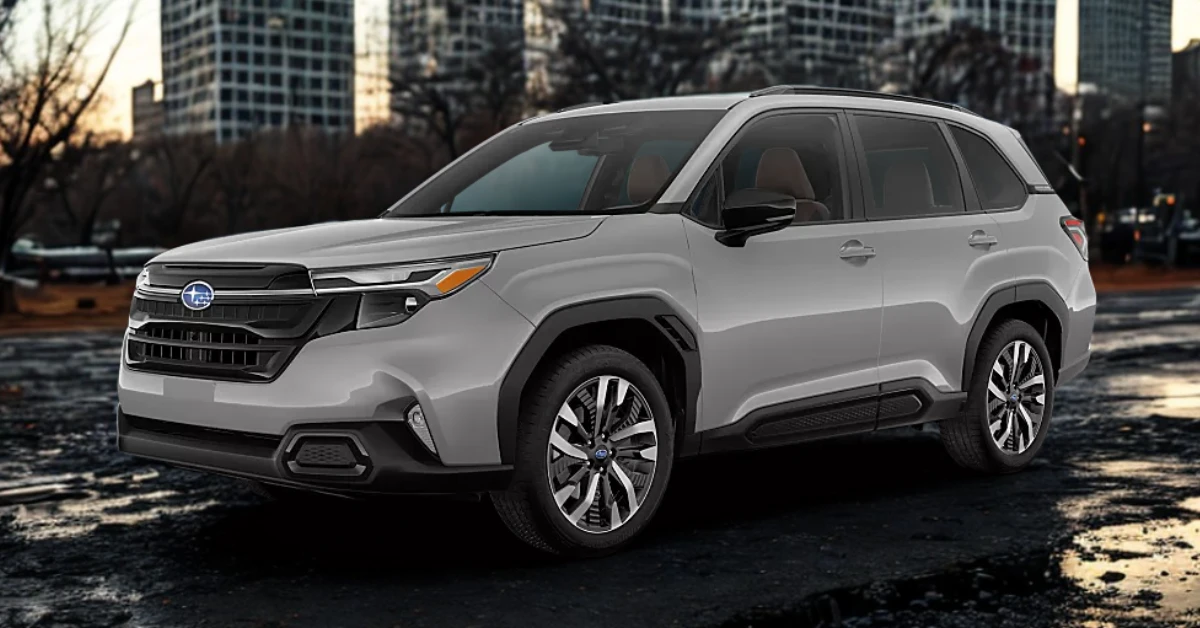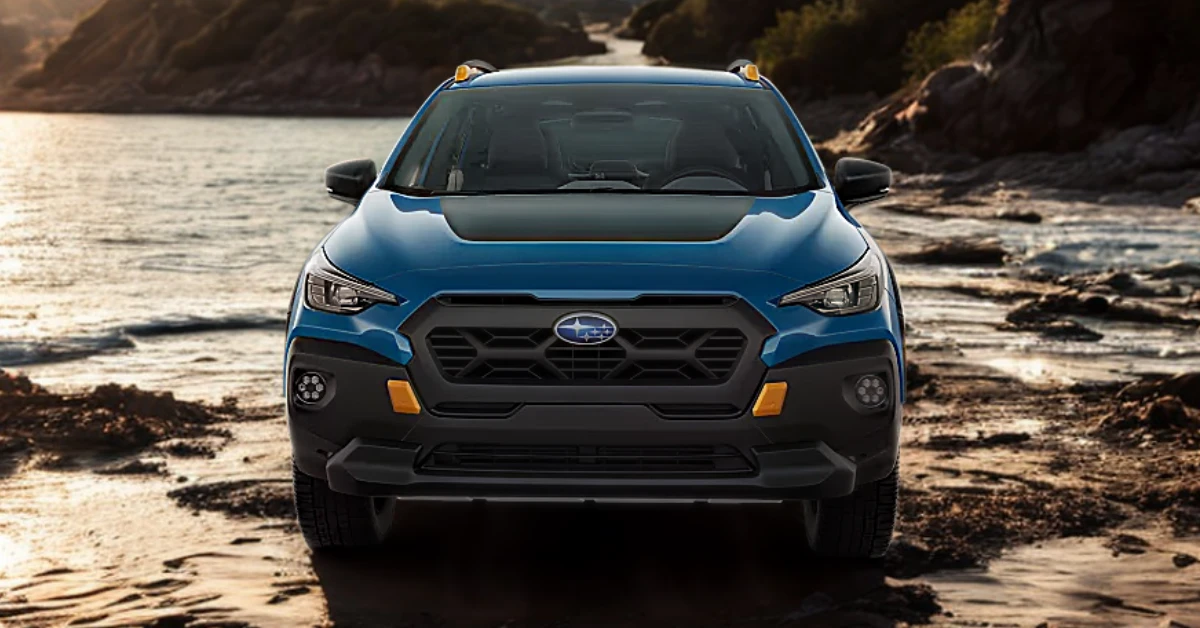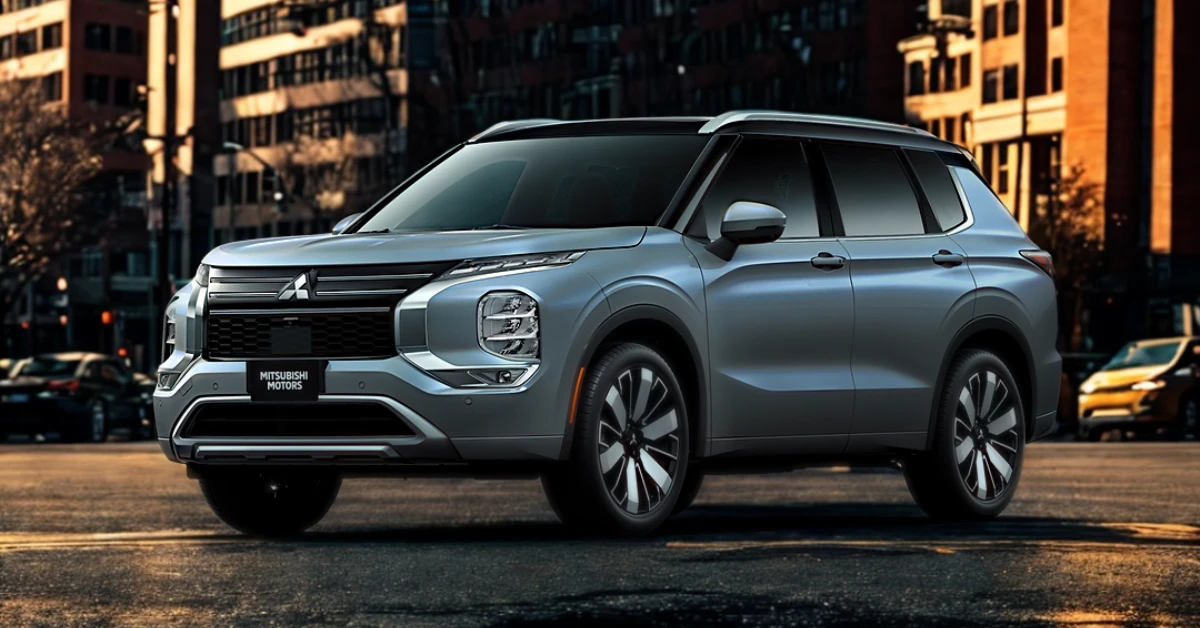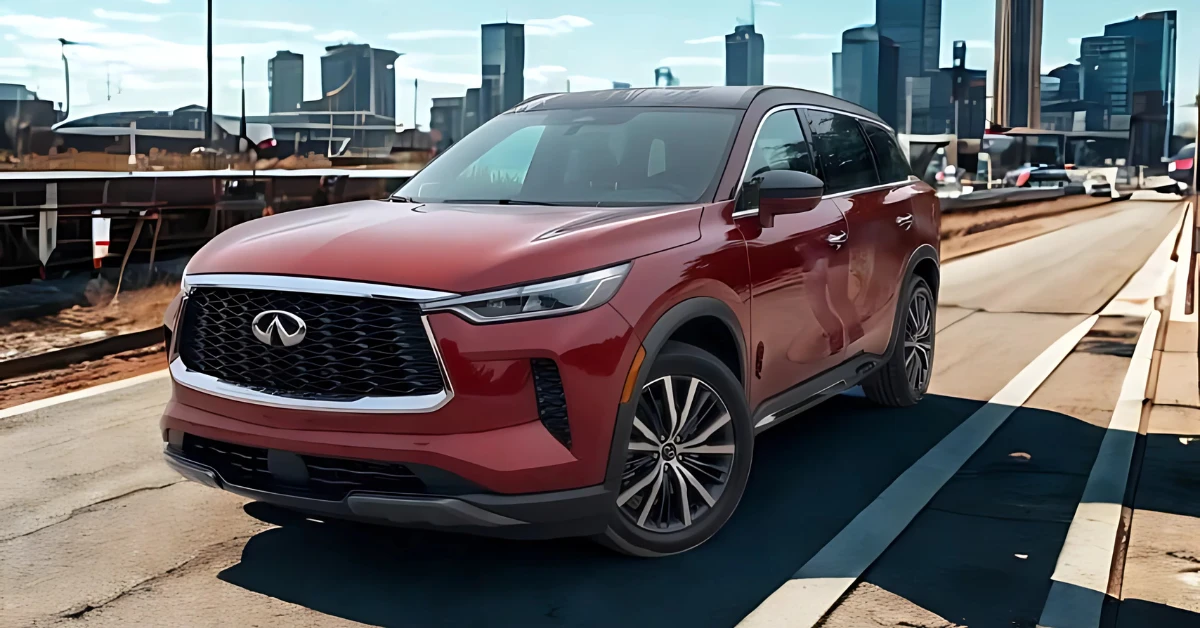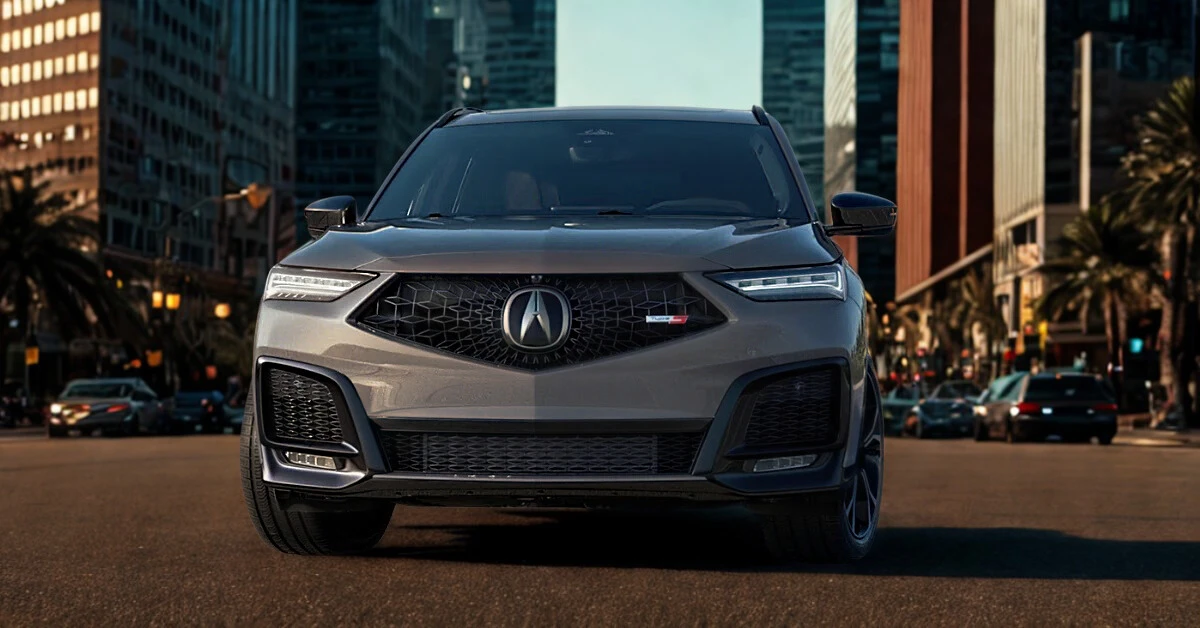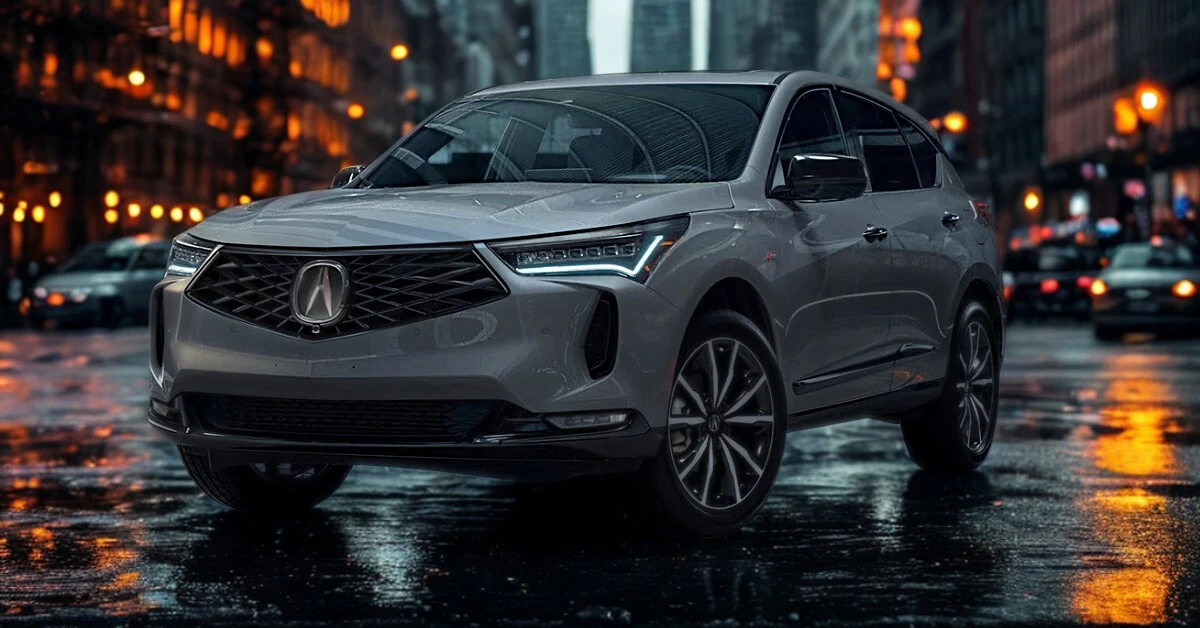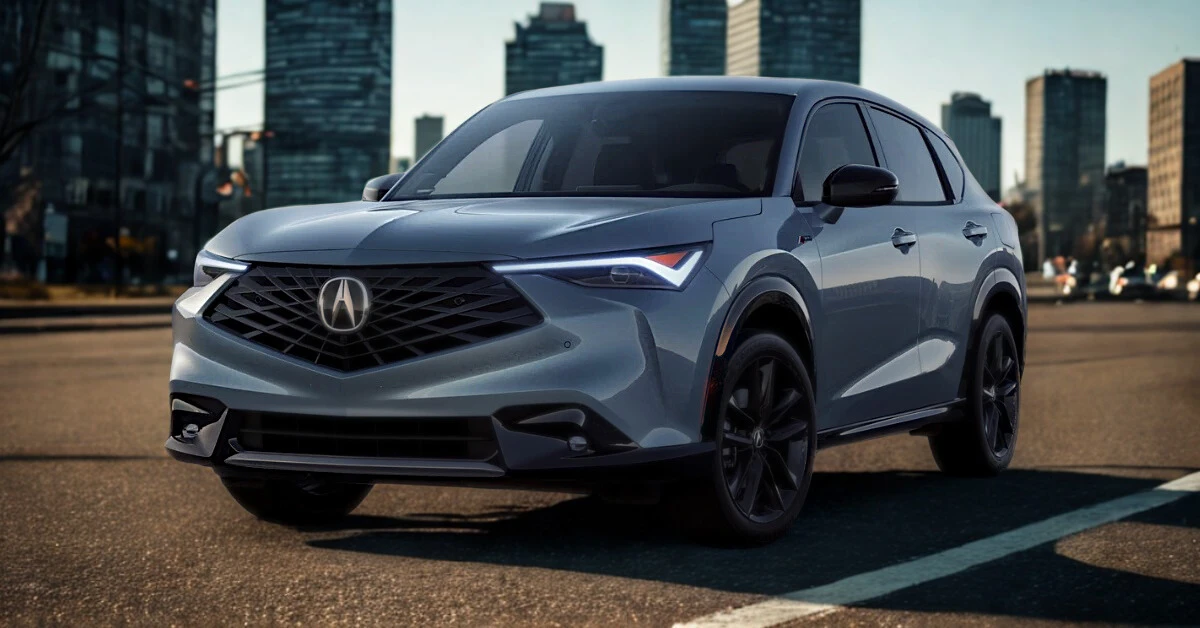2025 Volkswagen Atlas Specifications
- POWERTRAINS
- TRIMS
- COLORS
- DIMENSIONS
| Specification | SE FWD | SE w/Technology FWD | SE 4MOTION | SE w/Technology 4MOTION | Peak Edition 4MOTION | SEL 4MOTION | SEL Premium R-Line 4MOTION |
|---|---|---|---|---|---|---|---|
| Base Price | $39,625 | $43,730 | $41,525 | $45,630 | $48,080 | $49,625 | $54,630 |
| Engine Type | Intercooled Turbo Premium Unleaded I-4 | Intercooled Turbo Premium Unleaded I-4 | Intercooled Turbo Premium Unleaded I-4 | Intercooled Turbo Premium Unleaded I-4 | Intercooled Turbo Premium Unleaded I-4 | Intercooled Turbo Premium Unleaded I-4 | Intercooled Turbo Premium Unleaded I-4 |
| Displacement | 2.0L/121 cu. in. | 2.0L/121 cu. in. | 2.0L/121 cu. in. | 2.0L/121 cu. in. | 2.0L/121 cu. in. | 2.0L/121 cu. in. | 2.0L/121 cu. in. |
| Fuel System | Gasoline Direct Injection | Gasoline Direct Injection | Gasoline Direct Injection | Gasoline Direct Injection | Gasoline Direct Injection | Gasoline Direct Injection | Gasoline Direct Injection |
| Horsepower | 269 @ 5500 rpm | 269 @ 5500 rpm | 269 @ 5500 rpm | 269 @ 5500 rpm | 269 @ 5500 rpm | 269 @ 5500 rpm | 269 @ 5500 rpm |
| Torque | 273 lb-ft @ 1600 rpm | 273 lb-ft @ 1600 rpm | 273 lb-ft @ 1600 rpm | 273 lb-ft @ 1600 rpm | 273 lb-ft @ 1600 rpm | 273 lb-ft @ 1600 rpm | 273 lb-ft @ 1600 rpm |
| Transmission | 8-Speed Automatic w/Tiptronic | 8-Speed Automatic w/Tiptronic | 8-Speed Automatic w/Tiptronic | 8-Speed Automatic w/Tiptronic | 8-Speed Automatic w/Tiptronic | 8-Speed Automatic w/Tiptronic | 8-Speed Automatic w/Tiptronic |
| Drive Type | Front-Wheel Drive | Front-Wheel Drive | All-Wheel Drive (4MOTION) | All-Wheel Drive (4MOTION) | All-Wheel Drive (4MOTION) | All-Wheel Drive (4MOTION) | All-Wheel Drive (4MOTION) |
| Fuel Economy (city/hwy/combined) | 20/26/22 mpg | 20/26/22 mpg | 19/26/21 mpg | 19/26/21 mpg | 18/25/20 mpg | 18/25/21 mpg | 18/25/21 mpg |
| EPA Classification | Small SUV 2WD | Small SUV 2WD | Small SUV 4WD | Small SUV 4WD | Small SUV 4WD | Small SUV 4WD | Small SUV 4WD |
| EPA Greenhouse Gas Score | 5.0 | 5.0 | 4.0 | 4.0 | 4.0 | 4.0 | 4.0 |
| CO₂ Emissions (tons/year) | 8.0 | 8.0 | 8.3 | 8.3 | 8.8 | 8.4 | 8.4 |
| Fuel Tank Capacity | 18.6 gal. | 18.6 gal. | 18.6 gal. | 18.6 gal. | 18.6 gal. | 18.6 gal. | 18.6 gal. |
| Range (city/hwy) | 372.0/483.6 miles | 372.0/483.6 miles | 353.4/483.6 miles | 353.4/483.6 miles | 334.8/465.0 miles | 334.8/465.0 miles | 334.8/465.0 miles |
| Max Towing Capacity | 2,000 lbs | 5,000 lbs | 2,000 lbs | 5,000 lbs | 5,000 lbs | 5,000 lbs | 5,000 lbs |
| Curb Weight | 4,317 lbs | 4,317 lbs | 4,491 lbs | 4,491 lbs | 4,601 lbs | 4,643 lbs | 4,643 lbs |
| Suspension (Front/Rear) | Strut / Multi-Link | Strut / Multi-Link | Strut / Multi-Link | Strut / Multi-Link | Strut / Multi-Link | Strut / Multi-Link | Strut / Multi-Link |
| Special Features | Start-Stop System | Start-Stop System, Trailer Package | Start-Stop System, Hill Descent Control | Start-Stop System, Trailer Package, Hill Descent Control | Start-Stop System, Trailer Package, Hill Descent Control, Panoramic Sunroof | Start-Stop System, Trailer Package, Hill Descent Control, Panoramic Sunroof | Start-Stop System, Trailer Package, Hill Descent Control, Panoramic Sunroof, Aerial View Camera System |
Interior Features
| Feature | SE FWD | SE w/Technology FWD | SE 4MOTION | SE w/Technology 4MOTION | Peak Edition 4MOTION | SEL 4MOTION | SEL Premium R-Line 4MOTION |
|---|---|---|---|---|---|---|---|
| Seating Capacity | 7 | 7 | 7 | 7 | 7 | 7 | 7 |
| Seating Material | Perforated V-Tex Leatherette | Perforated V-Tex Leatherette | Perforated V-Tex Leatherette | Perforated V-Tex Leatherette | Perforated V-Tex Leatherette | Perforated Vienna Leather | Perforated Vienna Leather w/Diamond-Pattern Stitching |
| Driver’s Seat | Power Adjustable w/Lumbar | Power Adjustable w/Lumbar | Power Adjustable w/Lumbar | Power Adjustable w/Lumbar | Power Adjustable w/Lumbar | Power Adjustable w/Lumbar, Memory | Power Adjustable w/4-Way Lumbar, Massage, Memory |
| Passenger Seat | Manual Adjustable | Manual Adjustable | Manual Adjustable | Manual Adjustable | Manual Adjustable | Power Adjustable | Power Adjustable w/Massage |
| Heated Front Seats | Standard | Standard | Standard | Standard | Standard | Standard | Standard |
| Ventilated Front Seats | Standard | Standard | Standard | Standard | Standard | Standard | Standard |
| Heated 2nd Row Seats | Not Standard | Not Standard | Not Standard | Not Standard | Not Standard | Standard | Standard |
| Heated Steering Wheel | Standard | Standard | Standard | Standard | Standard | Standard | Standard (Sport Design) |
| Climate Control | Dual Zone Automatic | Dual Zone Automatic | Dual Zone Automatic | Dual Zone Automatic | Dual Zone Automatic | Dual Zone Automatic | Dual Zone Automatic |
| Rear HVAC | Separate Controls | Separate Controls | Separate Controls | Separate Controls | Separate Controls | Separate Controls | Separate Controls |
| 2nd Row Sunshades | Not Standard | Standard | Not Standard | Standard | Standard | Standard | Standard |
| Cargo Space Behind 3rd Row | 20.6 cu. ft. | 20.6 cu. ft. | 20.6 cu. ft. | 20.6 cu. ft. | 20.6 cu. ft. | 20.6 cu. ft. | 20.6 cu. ft. |
| Cargo Space Behind 2nd Row | 55.5 cu. ft. | 55.5 cu. ft. | 55.5 cu. ft. | 55.5 cu. ft. | 55.5 cu. ft. | 55.5 cu. ft. | 55.5 cu. ft. |
| Cargo Space Behind 1st Row | 96.8 cu. ft. | 96.8 cu. ft. | 96.8 cu. ft. | 96.8 cu. ft. | 96.8 cu. ft. | 96.8 cu. ft. | 96.8 cu. ft. |
Technology
| Feature | SE FWD | SE w/Technology FWD | SE 4MOTION | SE w/Technology 4MOTION | Peak Edition 4MOTION | SEL 4MOTION | SEL Premium R-Line 4MOTION |
|---|---|---|---|---|---|---|---|
| Infotainment | 12″ Touchscreen MIB3 | 12″ Touchscreen MIB3 | 12″ Touchscreen MIB3 | 12″ Touchscreen MIB3 | 12″ Touchscreen MIB3 | 12″ Touchscreen MIB3 w/Navigation | 12″ Touchscreen MIB3 w/Navigation |
| Smartphone Integration | Wireless Apple CarPlay & Android Auto | Wireless Apple CarPlay & Android Auto | Wireless Apple CarPlay & Android Auto | Wireless Apple CarPlay & Android Auto | Wireless Apple CarPlay & Android Auto | Wireless Apple CarPlay & Android Auto | Wireless Apple CarPlay & Android Auto |
| Audio System | 6-speaker | 6-speaker | 6-speaker | 6-speaker | 6-speaker | 6-speaker | harman/kardon Premium Sound System |
| SiriusXM | 3-month trial | 3-month trial | 3-month trial | 3-month trial | 3-month trial | 3-month trial | 3-month trial |
| Wireless Phone Charger | Standard | Standard | Standard | Standard | Standard | Standard | Standard |
| Digital Cockpit | Standard | Standard | Standard | Standard | Standard | Standard | Standard |
| Head-Up Display | Not Standard | Not Standard | Not Standard | Not Standard | Not Standard | Standard | Standard |
| Remote Start | Not Standard | Standard | Not Standard | Standard | Standard | Standard | Standard |
| Proximity Key Entry | Standard | Standard | Standard | Standard | Standard | Standard | Standard |
| Push Button Start | Standard | Standard | Standard | Standard | Standard | Standard | Standard |
| Auto-Dimming Mirror | Standard | Standard | Standard | Standard | Standard | Standard | Standard |
| AC Power Outlets | Not Standard | 1 (120V) | Not Standard | 1 (120V) | 1 (120V) | 1 (120V) | 1 (120V) |
| USB-C Ports | Standard | Standard | Standard | Standard | Standard | Standard | Standard |
Safety & Driver Assistance
| Feature | SE FWD | SE w/Technology FWD | SE 4MOTION | SE w/Technology 4MOTION | Peak Edition 4MOTION | SEL 4MOTION | SEL Premium R-Line 4MOTION |
|---|---|---|---|---|---|---|---|
| Travel Assist | Standard | Standard | Standard | Standard | Standard | Standard | Standard |
| Adaptive Cruise Control | Standard w/Traffic Stop-Go | Standard w/Traffic Stop-Go | Standard w/Traffic Stop-Go | Standard w/Traffic Stop-Go | Standard w/Traffic Stop-Go | Standard w/Traffic Stop-Go | Standard w/Traffic Stop-Go |
| Lane Assist | Standard | Standard | Standard | Standard | Standard | Standard | Standard |
| Front Assist | Standard | Standard | Standard | Standard | Standard | Standard | Standard |
| Blind Spot Monitor | Standard | Standard | Standard | Standard | Standard | Standard | Standard |
| Rear Traffic Alert | Standard | Standard | Standard | Standard | Standard | Standard | Standard |
| Parking Sensors | Not Standard | Front & Rear | Not Standard | Front & Rear | Front & Rear | Front & Rear | Front & Rear w/Park Assist |
| 360° Camera System | Not Standard | Not Standard | Not Standard | Not Standard | Not Standard | Not Standard | Standard (Aerial View) |
| Driver Monitoring Alert | Standard | Standard | Standard | Standard | Standard | Standard | Standard |
| Airbags | Dual Front, Side Curtain 1st/2nd/3rd Row | Dual Front, Side Curtain 1st/2nd/3rd Row | Dual Front, Side Curtain 1st/2nd/3rd Row | Dual Front, Side Curtain 1st/2nd/3rd Row | Dual Front, Side Curtain 1st/2nd/3rd Row | Dual Front, Side Curtain 1st/2nd/3rd Row | Dual Front, Side Curtain 1st/2nd/3rd Row |
| Back-Up Camera | Standard | Standard | Standard | Standard | Standard | Standard | Standard |
Off-Road Features
| Feature | SE FWD | SE w/Technology FWD | SE 4MOTION | SE w/Technology 4MOTION | Peak Edition 4MOTION | SEL 4MOTION | SEL Premium R-Line 4MOTION |
|---|---|---|---|---|---|---|---|
| 4MOTION All-Wheel Drive | Not Available | Not Available | Standard | Standard | Standard | Standard | Standard |
| Hill Descent Control | Not Available | Not Available | Standard | Standard | Standard | Standard | Standard |
| Driver Selectable Mode | Standard | Standard | Standard | Standard | Standard | Standard | Standard |
| Permanent Locking Hubs | Not Available | Not Available | Standard | Standard | Standard | Standard | Standard |
| Towing Equipment | Not Standard | Class III Hitch & Wiring | Not Standard | Class III Hitch & Wiring | Class III Hitch & Wiring | Class III Hitch & Wiring | Class III Hitch & Wiring |
| Raised Ride Height | No | No | No | No | Yes | No | Yes |
Exterior Features
| Feature | SE FWD | SE w/Technology FWD | SE 4MOTION | SE w/Technology 4MOTION | Peak Edition 4MOTION | SEL 4MOTION | SEL Premium R-Line 4MOTION |
|---|---|---|---|---|---|---|---|
| Wheels | 18″ 2-Tone Machined Alloy | 20″ 2-Tone Machined Alloy | 18″ 2-Tone Machined Alloy | 20″ 2-Tone Machined Alloy | 18″ Black Painted 5-Spoke Alloy | 20″ 2-Tone Machined Alloy | 21″ 2-Tone Machined Alloy |
| Tires | P245/60HR18 All-Season | P255/50HR20 All-Season | P245/60HR18 All-Season | P255/50HR20 All-Season | P245/60HR18 All-Season All-Terrain | P255/50HR20 All-Season | P265/45HR21 All-Season |
| Spare Tire | Compact | Compact | Compact | Compact | Compact | Compact | Compact |
| Panoramic Sunroof | Not Standard | Not Standard | Not Standard | Not Standard | Standard | Standard | Standard |
| Power Liftgate | Not Standard | Standard | Not Standard | Standard | Standard | Standard | Standard |
| Easy Open Proximity Cargo Access | Not Standard | Standard | Not Standard | Standard | Standard | Standard | Standard |
| LED Headlights | Standard | Standard | Standard | Standard | Standard | Standard | Standard |
| Fog Lights | Standard | Standard | Standard | Standard | Standard | Standard | Standard |
| Power Side Mirrors | Heated | Heated | Heated | Heated | Heated (Black) | Heated | Heated w/Power Folding |
| Roof Rails | Not Specified | Not Specified | Not Specified | Not Specified | Not Specified | Not Specified | Not Specified |
| Rain-Sensing Wipers | Standard | Standard | Standard | Standard | Standard | Standard w/Heated Jets | Standard w/Heated Jets |
| Door Handles | Body-Colored | Body-Colored | Body-Colored | Body-Colored | Body-Colored | Body-Colored | Body-Colored |
Warranty & Maintenance
| Feature | SE FWD | SE w/Technology FWD | SE 4MOTION | SE w/Technology 4MOTION | Peak Edition 4MOTION | SEL 4MOTION | SEL Premium R-Line 4MOTION |
|---|---|---|---|---|---|---|---|
| Basic | 4 Years/50,000 Miles | 4 Years/50,000 Miles | 4 Years/50,000 Miles | 4 Years/50,000 Miles | 4 Years/50,000 Miles | 4 Years/50,000 Miles | 4 Years/50,000 Miles |
| Drivetrain | 4 Years/50,000 Miles | 4 Years/50,000 Miles | 4 Years/50,000 Miles | 4 Years/50,000 Miles | 4 Years/50,000 Miles | 4 Years/50,000 Miles | 4 Years/50,000 Miles |
| Corrosion | 7 Years/100,000 Miles | 7 Years/100,000 Miles | 7 Years/100,000 Miles | 7 Years/100,000 Miles | 7 Years/100,000 Miles | 7 Years/100,000 Miles | 7 Years/100,000 Miles |
| Roadside Assistance | 3 Years/36,000 Miles | 3 Years/36,000 Miles | 3 Years/36,000 Miles | 3 Years/36,000 Miles | 3 Years/36,000 Miles | 3 Years/36,000 Miles | 3 Years/36,000 Miles |
| Maintenance | 2 Years/20,000 Miles | 2 Years/20,000 Miles | 2 Years/20,000 Miles | 2 Years/20,000 Miles | 2 Years/20,000 Miles | 2 Years/20,000 Miles | 2 Years/20,000 Miles |
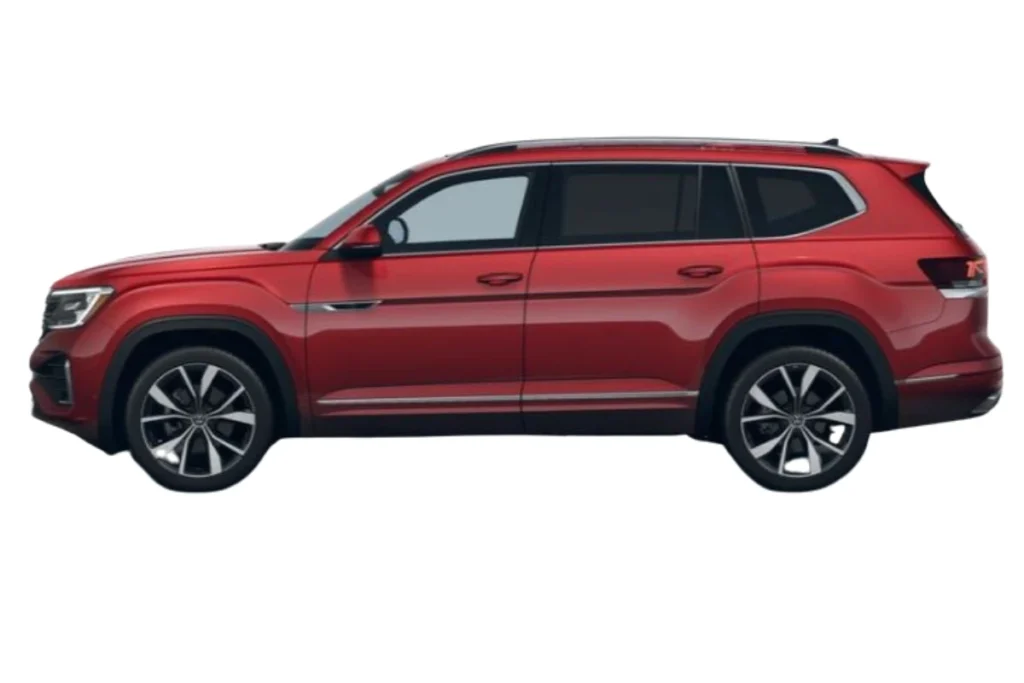
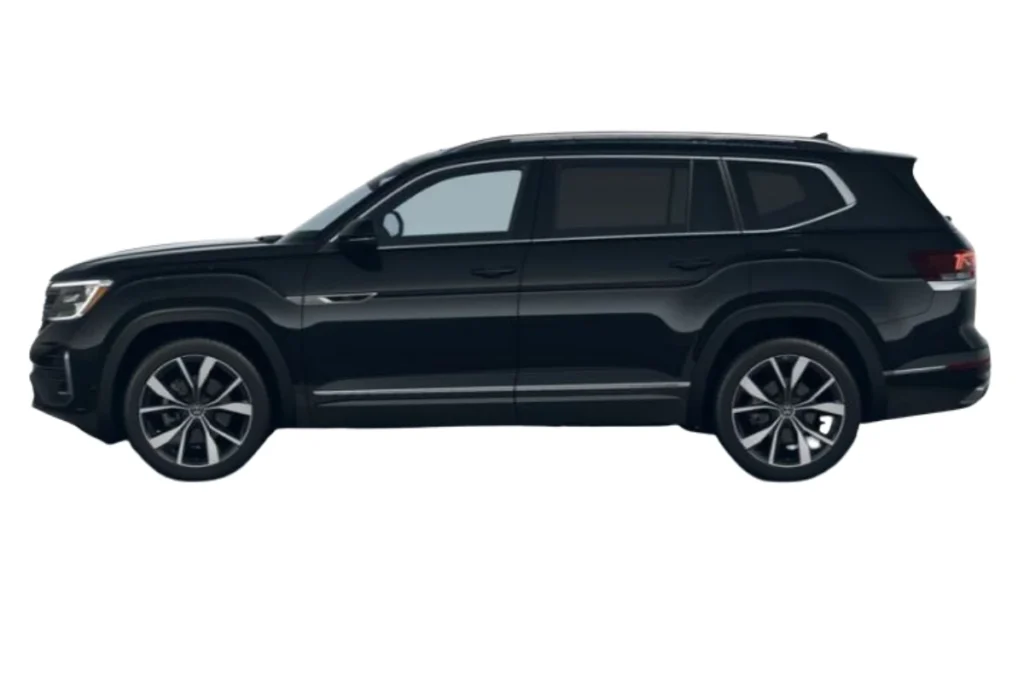

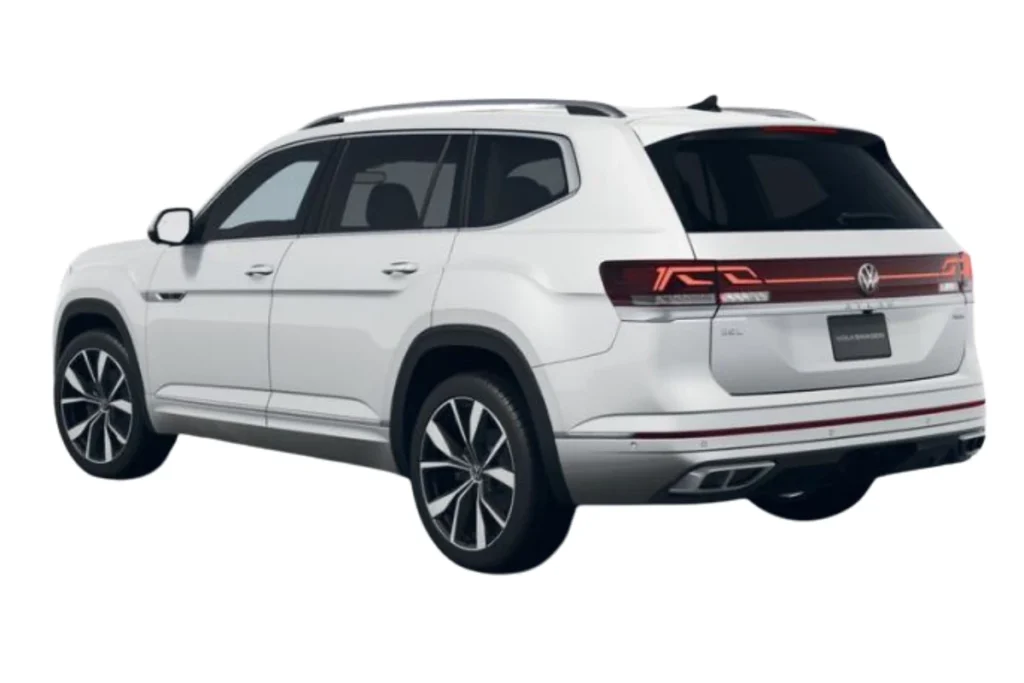
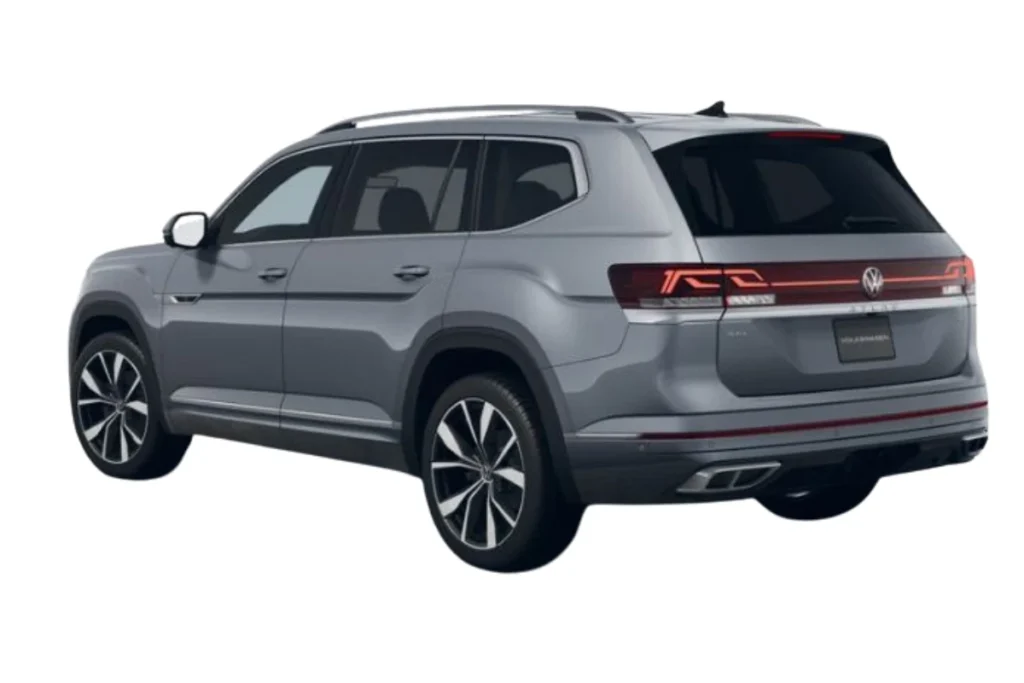

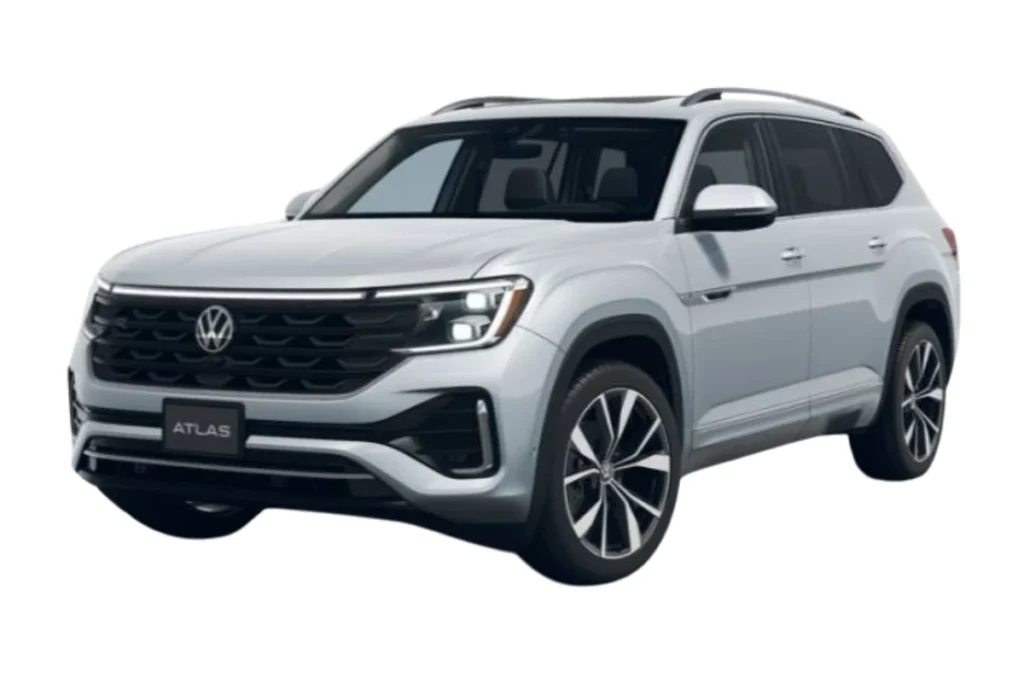
Exterior Dimensions
| Dimension | SE FWD | SE w/Technology FWD | SE 4MOTION | SE w/Technology 4MOTION | Peak Edition 4MOTION | SEL 4MOTION | SEL Premium R-Line 4MOTION |
|---|---|---|---|---|---|---|---|
| Wheelbase | 117.3 in | 117.3 in | 117.3 in | 117.3 in | 117.3 in | 117.3 in | 117.3 in |
| Overall Length | 200.7 in | 200.7 in | 200.7 in | 200.7 in | 200.7 in | 200.7 in | 200.7 in |
| Overall Width (without mirrors) | 78.3 in | 78.3 in | 78.3 in | 78.3 in | 78.3 in | 78.3 in | 78.3 in |
| Overall Height | 70.1 in | 70.1 in | 70.1 in | 70.1 in | 70.4 in | 70.1 in | 70.4 in |
| Front Track Width | 67.0 in | 67.0 in | 67.0 in | 67.0 in | 67.0 in | 67.0 in | 67.0 in |
| Rear Track Width | 67.6 in | 67.6 in | 67.6 in | 67.6 in | 67.6 in | 67.6 in | 67.6 in |
Interior Dimensions
| Dimension | SE FWD | SE w/Technology FWD | SE 4MOTION | SE w/Technology 4MOTION | Peak Edition 4MOTION | SEL 4MOTION | SEL Premium R-Line 4MOTION |
|---|---|---|---|---|---|---|---|
| Passenger Capacity | 7 | 7 | 7 | 7 | 7 | 7 | 7 |
| Total Passenger Volume | 154.0 cu ft | 154.0 cu ft | 154.0 cu ft | 154.0 cu ft | 154.0 cu ft | 154.0 cu ft | 154.0 cu ft |
| Front Head Room | 41.3 in | 41.3 in | 41.3 in | 41.3 in | 41.3 in | 41.3 in | 41.3 in |
| Front Leg Room | 41.7 in | 41.7 in | 41.7 in | 41.7 in | 41.7 in | 41.7 in | 41.7 in |
| Front Shoulder Room | 61.5 in | 61.5 in | 61.5 in | 61.5 in | 61.5 in | 61.5 in | 61.5 in |
| Front Hip Room | 58.2 in | 58.2 in | 58.2 in | 58.2 in | 58.2 in | 58.2 in | 58.2 in |
| Second Row Head Room | 40.4 in | 40.4 in | 40.4 in | 40.4 in | 40.4 in | 40.4 in | 40.4 in |
| Second Row Leg Room | 37.6 in | 37.6 in | 37.6 in | 37.6 in | 37.6 in | 37.6 in | 37.6 in |
| Second Row Shoulder Room | 60.8 in | 60.8 in | 60.8 in | 60.8 in | 60.8 in | 60.8 in | 60.8 in |
| Second Row Hip Room | 58.0 in | 58.0 in | 58.0 in | 58.0 in | 58.0 in | 58.0 in | 58.0 in |
| Third Row Head Room | 38.3 in | 38.3 in | 38.3 in | 38.3 in | 38.3 in | 38.3 in | 38.3 in |
| Third Row Leg Room | 33.7 in | 33.7 in | 33.7 in | 33.7 in | 33.7 in | 33.7 in | 33.7 in |
| Third Row Shoulder Room | 54.9 in | 54.9 in | 54.9 in | 54.9 in | 54.9 in | 54.9 in | 54.9 in |
| Third Row Hip Room | 45.1 in | 45.1 in | 45.1 in | 45.1 in | 45.1 in | 45.1 in | 45.1 in |
Cargo Dimensions
| Dimension | SE FWD | SE w/Technology FWD | SE 4MOTION | SE w/Technology 4MOTION | Peak Edition 4MOTION | SEL 4MOTION | SEL Premium R-Line 4MOTION |
|---|---|---|---|---|---|---|---|
| Cargo Space Behind Front Row | 96.8 cu ft | 96.8 cu ft | 96.8 cu ft | 96.8 cu ft | 96.8 cu ft | 96.8 cu ft | 96.8 cu ft |
| Cargo Space Behind Second Row | 55.5 cu ft | 55.5 cu ft | 55.5 cu ft | 55.5 cu ft | 55.5 cu ft | 55.5 cu ft | 55.5 cu ft |
| Cargo Space Behind Third Row | 20.6 cu ft | 20.6 cu ft | 20.6 cu ft | 20.6 cu ft | 20.6 cu ft | 20.6 cu ft | 20.6 cu ft |
Weight & Capacity
| Dimension | SE FWD | SE w/Technology FWD | SE 4MOTION | SE w/Technology 4MOTION | Peak Edition 4MOTION | SEL 4MOTION | SEL Premium R-Line 4MOTION |
|---|---|---|---|---|---|---|---|
| Base Curb Weight | 4,317 lbs | 4,317 lbs | 4,491 lbs | 4,491 lbs | 4,601 lbs | 4,643 lbs | 4,643 lbs |
| Fuel Tank Capacity | 18.6 gal | 18.6 gal | 18.6 gal | 18.6 gal | 18.6 gal | 18.6 gal | 18.6 gal |
| Maximum Towing Capacity | 2,000 lbs | 5,000 lbs | 2,000 lbs | 5,000 lbs | 5,000 lbs | 5,000 lbs | 5,000 lbs |
Wheels & Tires
| Dimension | SE FWD | SE w/Technology FWD | SE 4MOTION | SE w/Technology 4MOTION | Peak Edition 4MOTION | SEL 4MOTION | SEL Premium R-Line 4MOTION |
|---|---|---|---|---|---|---|---|
| Front Wheel Size | 18 x 8 in | 20 x 8 in | 18 x 8 in | 20 x 8 in | 18 x 8 in | 20 x 8 in | 21 x 9 in |
| Rear Wheel Size | 18 x 8 in | 20 x 8 in | 18 x 8 in | 20 x 8 in | 18 x 8 in | 20 x 8 in | 21 x 9 in |
| Front Tire Size | P245/60HR18 | P255/50HR20 | P245/60HR18 | P255/50HR20 | P245/60HR18 | P255/50HR20 | P265/45HR21 |
| Rear Tire Size | P245/60HR18 | P255/50HR20 | P245/60HR18 | P255/50HR20 | P245/60HR18 | P255/50HR20 | P265/45HR21 |
| Spare Tire | Compact | Compact | Compact | Compact | Compact | Compact | Compact |
Steering & Brakes
| Dimension | SE FWD | SE w/Technology FWD | SE 4MOTION | SE w/Technology 4MOTION | Peak Edition 4MOTION | SEL 4MOTION | SEL Premium R-Line 4MOTION |
|---|---|---|---|---|---|---|---|
| Steering Type | Rack-Pinion | Rack-Pinion | Rack-Pinion | Rack-Pinion | Rack-Pinion | Rack-Pinion | Rack-Pinion |
| Front Brake Rotors | 13.2 in | 13.2 in | 13.2 in | 13.2 in | 13.2 in | 13.2 in | 13.2 in |
| Rear Brake Rotors | 12.2 in | 12.2 in | 12.2 in | 12.2 in | 12.2 in | 12.2 in | 12.2 in |
Turning & Maneuverability
| Dimension | SE FWD | SE w/Technology FWD | SE 4MOTION | SE w/Technology 4MOTION | Peak Edition 4MOTION | SEL 4MOTION | SEL Premium R-Line 4MOTION |
|---|---|---|---|---|---|---|---|
| Turning Diameter (curb to curb) | 40.5 ft | 40.5 ft | 40.5 ft | 40.5 ft | 40.5 ft | 40.5 ft | 40.5 ft |
2025 Volkswagen Atlas Overview:
The 2025 Volkswagen Atlas is kind of like a modern take on the classic family station wagon—think three rows of seating, plenty of room for up to seven passengers, all wrapped in an exterior that’s nice-looking, though maybe a bit on the conservative side. After getting a pretty big makeover for 2024, the Atlas is stepping into 2025 with some subtle upgrades that really polish this practical family ride. It shines when it comes to passenger and cargo space, making it one of the roomiest three-row SUVs out there. But hey, it’s not without tough competition; other brands are really upping their game with style and features.
In this crowded three-row SUV market, the Atlas has some serious rivals. For instance, the Kia Telluride and Hyundai Palisade come with a more upscale vibe and better warranties, while the Mazda CX-90 gives you a more thrilling driving experience with that premium feel. Then there’s the Toyota Grand Highlander, which offers hybrid options along with Toyota’s well-known reliability. And if you’re into off-roading, the Jeep Grand Cherokee L is a solid choice for families who love adventure. Let’s not forget the Honda Pilot, which adds to the mix with its strong reputation for reliability and good resale value.
What sets the 2025 Atlas apart? Well, it boasts impressive interior space, especially in the third row where many competitors just can’t keep up. The cabin is all about function, with a straightforward layout that might not be as flashy as some rivals but definitely shines in terms of usability. Now, all Atlas models come equipped with a 269-hp turbocharged 2.0-liter four-cylinder engine and an eight-speed automatic transmission. This replaces the previous V6 option, giving you a more responsive driving experience while still keeping that 5,000-pound towing capacity when properly set up.
Some cool updates for 2025 include an upgraded wireless charging system that’s standard across the board, plus some luxe features in the SEL Premium R-Line model—think fancy headrest upholstery, adjustable lumbar support, and even a massaging function for the front seats. Oh, and there are three new colors to choose from: Mountain Lake Blue, Avocado Green, and Pure Grey. Plus, most models with an active VW Car-Net subscription will have a voice assistant powered by ChatGPT, which is pretty neat and brings some cutting-edge tech into the Atlas lineup.
When it comes to pricing, the Atlas is pretty competitive. It starts at $39,625 for the base SE model and can go up to $54,630 for the high-end SEL Premium R-Line. There’s also a Peak Edition available on the SE with Technology trim, which adds some off-road-inspired style and standard all-wheel drive for those who want a more rugged look, although it doesn’t really change the off-road capabilities beyond what the standard 4Motion system offers on other trims.
So, if you’re in the market for a family SUV and you value space, comfort, and practicality over flashy designs or sporty performance, the 2025 Volkswagen Atlas is definitely worth a look. It’s a solid choice that checks a lot of boxes for today’s families.
Engine Options and Performance Specs:
The 2025 Volkswagen Atlas rolls out with just one powertrain option across all its trims: a 2.0-liter turbocharged four-cylinder engine. This engine cranks out 269 horsepower at 5,500 rpm and 273 pound-feet of torque starting at a low 1,600 rpm. So, goodbye to the old 3.6-liter VR6 engine from 2023 and earlier models. The new turbo engine, while slightly less powerful than the V6’s 276 hp, actually offers enhanced throttle response. You’ll feel that torque kick in when you’re driving—especially when you’re starting from a stop or trying to pass someone on the highway.
Now, this turbocharged four-cylinder is matched with an eight-speed automatic transmission. They’ve tweaked it to work better with the engine’s power delivery. In fact, in our acceleration tests, the 2025 Atlas zipped to 60 mph in just 7.3 seconds. That’s actually faster than the V6 version we tested back in 2018. It completed the quarter-mile in 15.4 seconds, hitting a speed of 92 mph at the finish line. If you really push it, the Atlas hits a top speed of 117 mph, though, let’s be honest, these numbers won’t break any records. Still, they show pretty solid acceleration for a vehicle this size and purpose.
As for the drivetrain, front-wheel drive is standard on the SE and SE with Technology trims. If you want all-wheel drive, Volkswagen’s 4Motion system is an option, though it comes standard on higher trims like the Peak Edition SE with Technology, SEL, and SEL Premium R-Line. The all-wheel-drive system mostly runs in front-wheel drive mode to save on fuel but can switch power to the back wheels when you need extra grip. Plus, it has different drive modes—like Snow, Off-Road, and Custom Off-Road—that tweak throttle response, how the transmission behaves, and how power is distributed based on the road conditions.
If you’re into towing, a properly equipped Atlas can haul up to 5,000 pounds with a trailer that has brakes. That’s right up there with competitors like the Toyota 4Runner and Subaru Ascent. Just a heads-up: the SE with Technology trims and above come with a standard trailer hitch, but the base SE trims will need an aftermarket hitch and can only manage a maximum of 2,000 pounds. It’s pretty impressive that the towing capacity hasn’t changed from the previous V6 models, especially given the switch to a smaller turbo engine.
The transmission generally shifts smoothly and intelligently for most driving situations. There’s even a Sport mode for those times when you want a little more excitement—it holds gears longer and gives you snappier downshifts. And if you’re feeling hands-on, there are paddle shifters on the steering wheel for manual gear selection. When you’re accelerating with partial throttle, you can feel the engine’s torque giving you a nice push, making the Atlas feel more robust than its horsepower numbers might imply. Overall, whether you’re navigating city streets or cruising down the highway, this powertrain delivers a responsive performance with minimal turbo lag, leaving you feeling confident behind the wheel.
Closer Look at the Volkswagen Atlas Brakes:
The braking system in the 2025 Volkswagen Atlas is designed to give you reliable stopping power, which is just what you need in a family-friendly three-row SUV. Up front, you’ve got 13.2-inch vented discs, and in the back, there are 12.2-inch vented discs. This setup helps with heat dissipation when you’re doing a lot of stopping. When they tested it out, the all-wheel-drive Atlas managed to stop from 70 mph in 170 feet. It’s decent—maybe not the absolute best in its class, but it’s competitive enough. The brake pedal feels solid, with just the right amount of resistance, making it easy to get smooth stops during your daily drives.
The initial response of the brakes is well-tuned, which is great because you don’t want them to feel too jumpy or sensitive—that can make it tricky to stop smoothly. This contributes to a comfortable driving experience overall, letting you slow down gracefully as you approach traffic lights or stop signs. And it’s got some cool electronic features too. For instance, there’s automatic brake drying, which lightly applies the brakes when it’s wet out, keeping the rotors dry and performance up to par. Plus, it has electronic brake-force distribution, which adjusts how much braking power goes to the front and rear wheels depending on how heavy the vehicle is and the driving conditions.
Now, if you’re parking, the Atlas has an electronic parking brake that kicks in automatically when you turn off the car. It also releases when you hit the gas with your seatbelt on. Some higher trims even have an auto-hold feature that keeps the brake pressure when you’re stopped, so you can take your foot off the pedal at long red lights. However, it’s worth mentioning that not all trims have a brake hold function, which would have been nice to see as it would keep the brake pressure without you needing to keep your foot on it.
In emergency situations, the Atlas handles itself well, staying stable with minimal nose dive, which is definitely reassuring when you need to stop quickly. The standard anti-lock system and electronic stability control work together to help you maintain control even on slippery roads. And, you’ve got a forward collision warning system with autonomous emergency braking, which is standard on every trim. It can hit the brakes for you if it senses a possible collision with a car or pedestrian ahead. This feature works whether you’re in the city or on the highway, and it could help lessen the impact or even prevent an accident altogether.
For families with little ones, there’s a thoughtful feature that applies a bit of brake pressure when the vehicle is in Park and a door is opened. This helps keep the Atlas from rolling if a child accidentally shifts the transmission. This kind of attention to safety shows that Volkswagen really puts families first in its design. All in all, while the Atlas might not be the sportiest in terms of braking performance, it definitely offers reliable and consistent stops that are perfect for family travel.
Steering and Suspension Performance on Various Terrains:
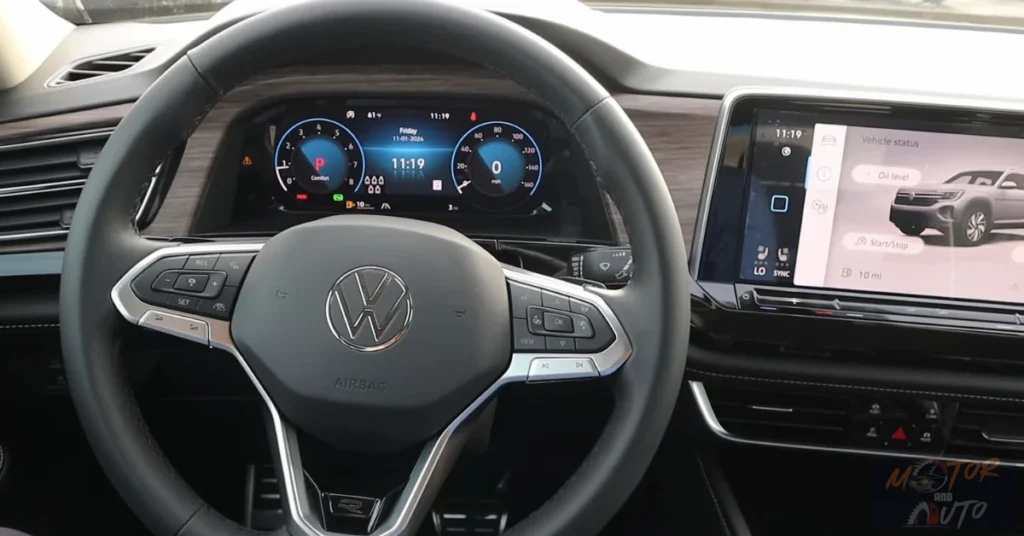
The 2025 Volkswagen Atlas has a suspension system that includes struts up front and a multilink independent setup in the rear, which finds that sweet spot between comfort and handling. This setup is all about ensuring a smooth ride and soaking up bumps, which is just what you’d want in a family-friendly, three-row SUV. When you hit those bumpy roads or uneven pavement, the suspension does a good job of keeping the cabin quiet, even when you’re rolling on the larger 21-inch wheels available on the SEL Premium R-Line trim. On the highway, it rides smoothly, and in the city, it’s surprisingly nimble, handling potholes and rough spots without much fuss.
Now, let’s talk about the steering. It’s responsive and reliable, offering just the right amount of feedback for a vehicle in this category. The electric power steering gives a nice light feel when you’re going slow, which makes parking and navigating tight spaces a breeze, despite the Atlas being a pretty big rig. As you pick up speed, the steering feels more weighted, which helps with stability on the freeway. Sure, it might not have that engaging, sporty feel that you’d find in a sports car, but it gives the predictable, no-nonsense response that families typically look for. The steering ratio is just right—not too many turns from lock to lock, and it doesn’t feel overly twitchy either.
When you really push the Atlas into corners, you’ll notice some body roll. I mean, it’s a tall vehicle with a comfort-focused suspension, so that’s kinda expected. It can feel a little awkward and not super sharp when you’re taking on winding roads, especially compared to sportier rivals like the Mazda CX-90. Still, for everyday driving, it holds its ground pretty well, and the stability control system steps in smoothly when needed to keep you on track. The tweaks made for the 2024 and 2025 models haven’t turned the Atlas into a sports machine or anything, but they do strengthen its image as a comfy cruiser.
If you’re looking at the Peak Edition, which comes with 18-inch wheels and all-terrain tires instead of the 20-inch ones on the SE with Technology trim, the ride has its own little quirks. Those taller sidewalls give you a bit more cushion over rough patches, but the all-terrain tread can make things a tad noisier on the highway. And just a heads up—despite how rugged it looks, the Peak Edition doesn’t get any suspension upgrades or extra ground clearance compared to other Atlas models. It still has that standard 6.3 inches of clearance, which is actually lower than a lot of competitors geared for off-roading.
For folks wanting to customize their driving experience, the Atlas has several drive modes that adjust everything from steering effort to throttle response and transmission behavior. In Sport mode, the steering gets a little heavier and more responsive, while Comfort mode is all about that lighter touch for easier driving. There’s also a Custom mode, where you can mix and match settings to get the perfect combo for your style, like sportier steering with a more relaxed powertrain or the other way around. Overall, while the Atlas might not get the adrenaline pumping for driving enthusiasts, its steering and suspension do exactly what most family SUV buyers want: a comfortable ride that’s easy to handle, especially given its size.
Tires and Traction:
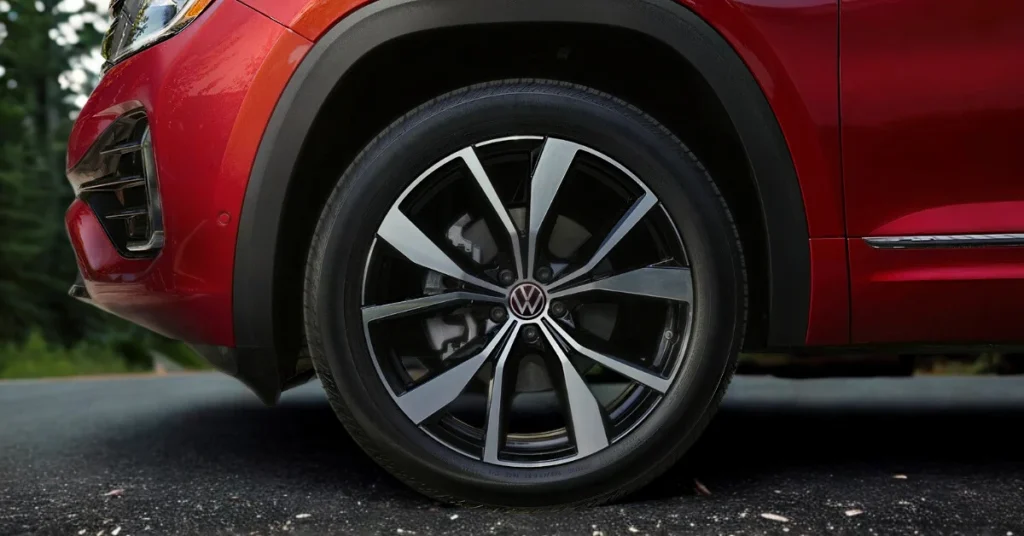
The 2025 Volkswagen Atlas brings a lot to the table when it comes to tire options, and they’ve got something for every trim level. You see, it’s all about finding that sweet spot between comfort, noise control, and being ready for any weather. For instance, the base SE trim rolls out with 18-inch alloy wheels wrapped in all-season tires. They do a decent job balancing ride comfort with performance throughout the year.
If you step up to the SE with Technology trim, you’ll find it’s got larger 20-inch alloy wheels fitted with 255/50R20 all-season tires. These not only look more imposing but also keep the ride quality quite reasonable. Sure, those bigger wheels and lower profile tires give you a bit snappier handling, but they might sacrifice some bump absorption. Thankfully, the Atlas’s suspension is well-tuned, which helps smooth out the ride a bit.
Then there’s the SEL Premium R-Line trim, which takes it up a notch with some eye-catching 21-inch two-tone machined alloy wheels, fitted with Bridgestone Alenza Sport A/S tires in a 265/45R21 size. These Bridgestone tires come with Enliten technology, which is supposed to cut down on rolling resistance and help fuel economy all while keeping the grip intact. And despite being low profile, surprisingly, they still deliver a comfy ride, thanks to the Atlas’s flexible suspension setup. In some performance tests, one of these Atlases scored 0.84g on a 300-foot skidpad, showing it can hold its own for a vehicle of this size.
Now, the Peak Edition, which is based on the SE with Technology, takes a bit of a different route. It’s got 18-inch wheels wrapped in 255/60R18 all-terrain tires. This setup gives it that rugged look and, in theory, a bit more capability for light off-roading. Those taller sidewalls do help cushion the ride over rougher terrain, but, just a heads up—they can make things a bit noisier when you hit the highway. You’ll find a mix of tire brands across the Atlas lineup too, with some examples rolling on Kumho Krugen HP71, Nexen Roadian GTX, and, of course, the Bridgestone Alenza Sport A/S.
Every Atlas model comes standard with tire pressure monitoring, which is pretty handy. You can see the current pressure for each tire right in the digital instrument cluster. This little feature is great for keeping you safe, boosting fuel efficiency, and extending tire life since it’ll alert you if any tire is under-inflated. Plus, the Atlas comes with a full-size spare tire and all the necessary tools stashed away under the cargo floor. That’s becoming a rare find these days since many manufacturers have opted for tire repair kits. But having that full-size spare is a nice touch—especially for families who might be heading out to remote areas or going on long road trips where finding a quick tire replacement could be a challenge.
Oh, and one thing to keep in mind: while the Peak Edition’s all-terrain tires might hint at some off-road prowess, the Atlas has a ground clearance of just 6.3 inches. That’s lower than what you get with many competitors that are more geared for off-roading, which kinda puts a cap on its true off-pavement abilities. So, really, those all-terrain tires are more about looks than any significant upgrade in functionality. For most folks looking at the Atlas, especially if comfort and all-weather capability are your priorities, the standard all-season tires on the other trims will do the trick nicely. And sure, the bigger wheels on the higher trims look great, but they don’t really mess with ride quality that much.
Inside the Volkswagen Atlas:
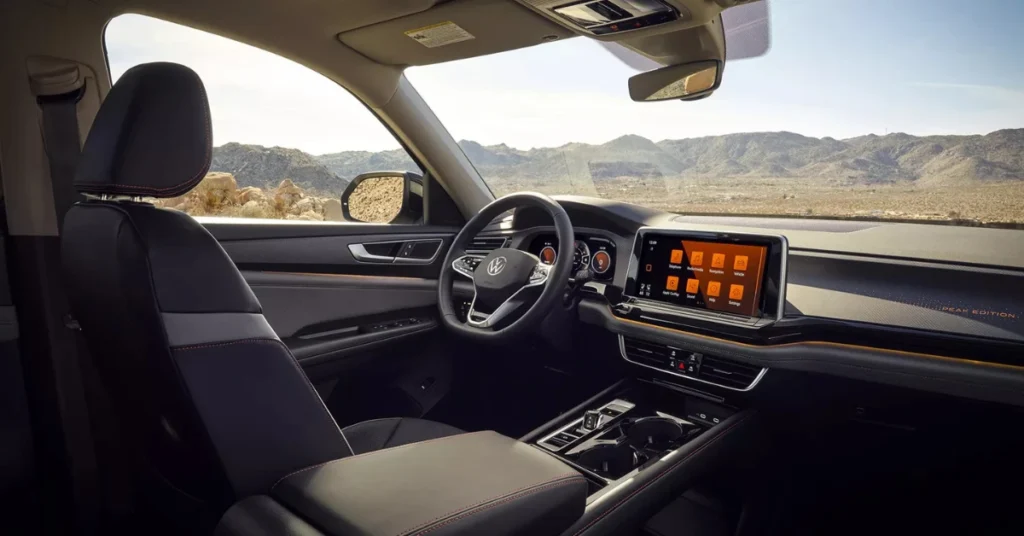
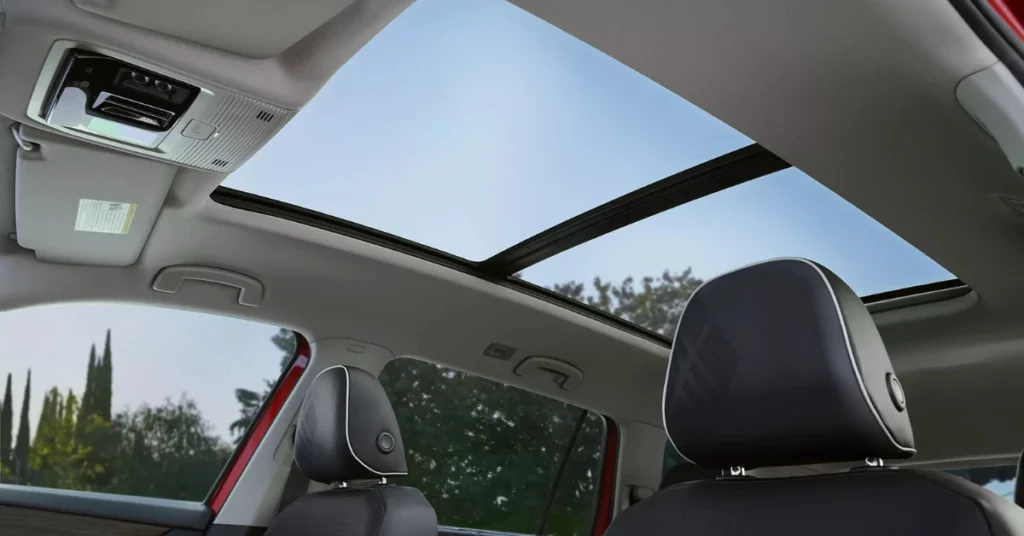


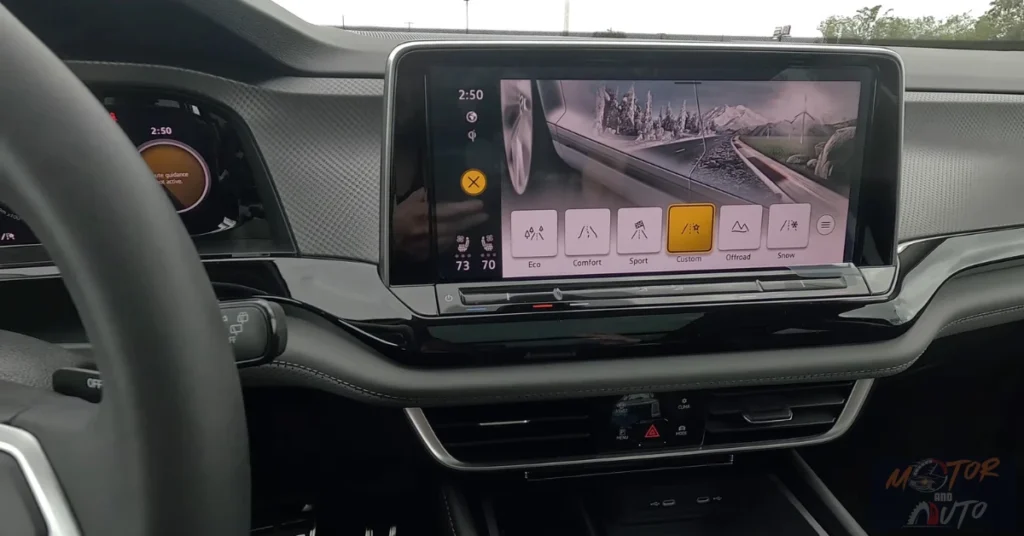
The 2025 Volkswagen Atlas interior finds that sweet spot between being practical and stylish. It’s got a clean, no-nonsense design that focuses more on usability than on flashy gimmicks. Just last year, Volkswagen made some significant updates to the Atlas’s interior—better materials and all that good stuff—and it looks like those improvements are sticking around for 2025.
So, about the dashboard: It’s laid out horizontally, which gives it this modern, minimalist vibe that highlights the car’s width. Right in the center is the standard 12.0-inch touchscreen infotainment system. It’s nicely integrated, not like some other cars where it just feels like an afterthought. Below the screen, there’s this sleek touch-sensitive panel for climate controls. Now, while it looks great, it’s not quite as user-friendly as the classic buttons and knobs that we’re used to.
The digital driving environment is enhanced by a standard 10.25-inch Digital Cockpit display that replaces traditional analog gauges with a fully reconfigurable screen. This display can show a variety of information, from traditional speedometer and tachometer arrangements to navigation maps, driver assistance status, trip information, or audio details. Drivers can customize the information displayed using steering wheel controls, creating a personalized information layout that best suits their preferences. On SEL and SEL Premium R-Line trims, a head-up display projects key information like current speed, navigation directions, and driver assistance status directly onto the windshield in the driver’s line of sight, reducing the need to look away from the road.
As for the materials inside the cabin, they’ve definitely stepped up their game, though there are still some competitors out there that feel a bit more premium. The upper dashboard is soft to the touch, and depending on the trim you choose, you might find some faux wood grain accents that run across the dash and doors, giving it a more upscale vibe. Honestly, that wood grain trim is surprisingly convincing in texture and look—even if it’s not the real deal. If you go for the SEL Premium R-Line trim, you’ll get even fancier features: think diamond-quilted Vienna leather upholstery with contrast stitching and an “R” badge on the steering wheel. It really amps up the luxurious feel.
You’ve got a few color options for the interior, like black, beige, and a unique “French Toast” choice on some trims. Plus, if you opt for the SEL and higher trims, you get ambient lighting that you can customize. It lights up the dashboard and door panels, and for models with this feature, it even extends to the digital instrument cluster. You can pick from a whole rainbow of colors—blue, green, red, or even pink! This little detail personalizes the space and adds a touch of modern flair to what’s otherwise a pretty restrained design.
Now, one thing that’s gotten mixed reviews is the piano black trim used throughout the interior, especially around the center console and climate controls. Sure, it looks slick when it’s clean, but man, it shows fingerprints and dust like nobody’s business. You’ll find yourself wiping it down pretty often to keep it looking sharp. As for the controls, they’re touch-sensitive and use swipe gestures to adjust things like volume and temperature. While that’s a cool idea, it can be a bit distracting to use while driving, especially compared to good old-fashioned knobs.
Moving on to what’s new in 2025, the SEL Premium R-Line trim gets some neat upgrades. You’ll find perforated headrest upholstery that matches the diamond-quilted pattern on the seats, plus four-way adjustable power lumbar support for better comfort. Oh, and check this out: it even comes with a massage function for the front seats! That feature, which Volkswagen borrowed from its luxury Audi brand, is pretty rare in a mainstream three-row SUV like this, so it really emphasizes the premium feel of this top-level trim. When you add in standard heated and ventilated front seats, heated rear seats, and a heated steering wheel, it’s clear that the SEL Premium R-Line is all about comfort and luxury—definitely justifying that higher price tag compared to the lower Atlas trims.
Exterior Design Impressions:


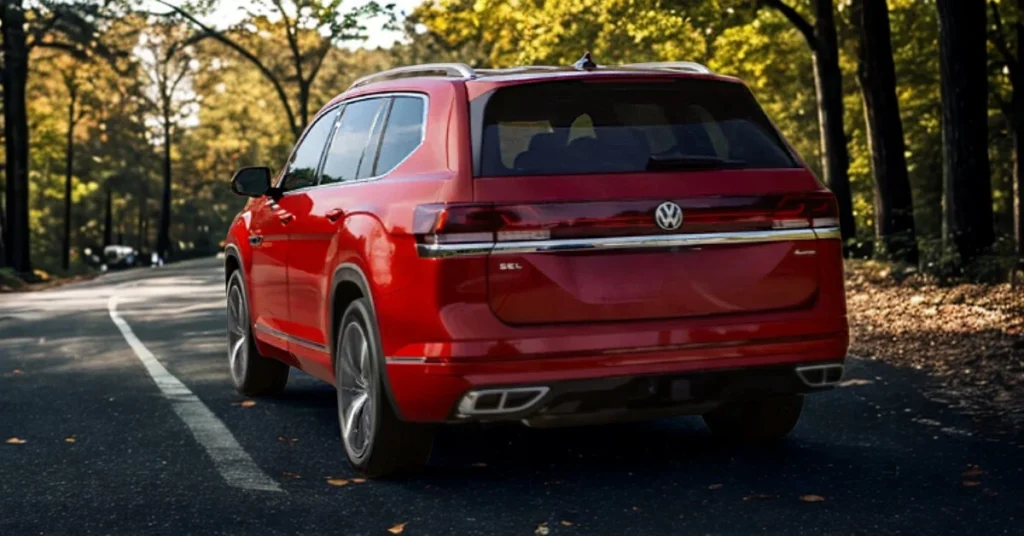
The 2025 Volkswagen Atlas has a sturdy, good-looking exterior that gives off a strong sense of solidity and presence—not just some flashy design gimmicks. The whole vibe is clean and angular, definitely giving off that German aesthetic, with a boxy shape that not only maximizes the interior space but also commands attention on the road. After its big refresh for the 2024 model year, the Atlas now sports a bold front end with a wide grille that blends right in with the headlights. There’s also this neat light bar stretching across the front, linking the headlights and creating a signature look that makes the Atlas super recognizable, especially when it’s dark out! This light bar comes standard on all trims except the base SE, and it really helps give the vehicle a modern feel.
Now, all trims come equipped with standard LED headlights that have adaptive front lighting—pretty impressive for this price range, since many competitors only offer that on their higher models. These adaptive headlights actually pivot when you turn, helping you see around those winding roads better. The front bumper has some chrome accents on most trims, and there’s a tougher-looking lower section that has these air intake designs. But heads up—some of these are just for show and don’t actually do any cooling. The Peak Edition, gets a special front-end look with matte black plastic and a cool X-design in the lower bumper that pushes its rugged, off-road vibe.
When you glance at the side, the Atlas has that classic SUV shape, boasting a long wheelbase of 117.3 inches, which contributes to its overall length of 200.7 inches. The upright greenhouse design keeps headroom consistent across all three rows and offers great visibility. Most models have chrome trim around the windows, and the greenhouse even tapers a bit toward the back to break up that boxy look. Depending on which trim you pick, you can get wheels ranging from 18 inches on the SE and Peak Edition up to 21 inches on the SEL Premium R-Line. Those bigger wheels really fill out the wheel arches and give it a grounded appearance.
As for the back end, it keeps that clean, simple design with a full-width LED light bar that mirrors the front’s lighting. The taillight assembly has an illuminated Volkswagen logo and Atlas badging, which looks pretty sharp at night. On the lower trims, you’ll find a single exhaust outlet, but the R-Line models come with these faux quad exhaust tips built into the rear bumper for a sportier vibe, even though they’re just for looks. Plus, there’s a roof-mounted spoiler that adds a slight sporty flair while helping with airflow over the rear window, which keeps it cleaner during bad weather.
And hey, for 2025, Volkswagen has added some fresh colors to the mix: Mountain Lake Blue, Avocado Green, and Pure Grey. The last two were exclusive to the Peak Edition before, but now they’re available on more trims. Speaking of the Peak Edition, it keeps its unique look with black accents, blacked-out badging, and dark silver roof rails that help it stand out from the rest of the Atlas lineup. The SEL Premium R-Line, on the other hand, gets the fanciest exterior treatment with unique bumpers, R-Line badging, and those exclusive 21-inch two-tone machined alloy wheels that give it a sporty, upscale look, fitting for the top tier of the Atlas range. Sure, the Atlas might not grab attention like some flashier competitors, but its clean and timeless design will likely stand the test of time, attracting buyers who prefer a more understated elegance over those trendy, flashy styles.
Comfort and Convenience Features
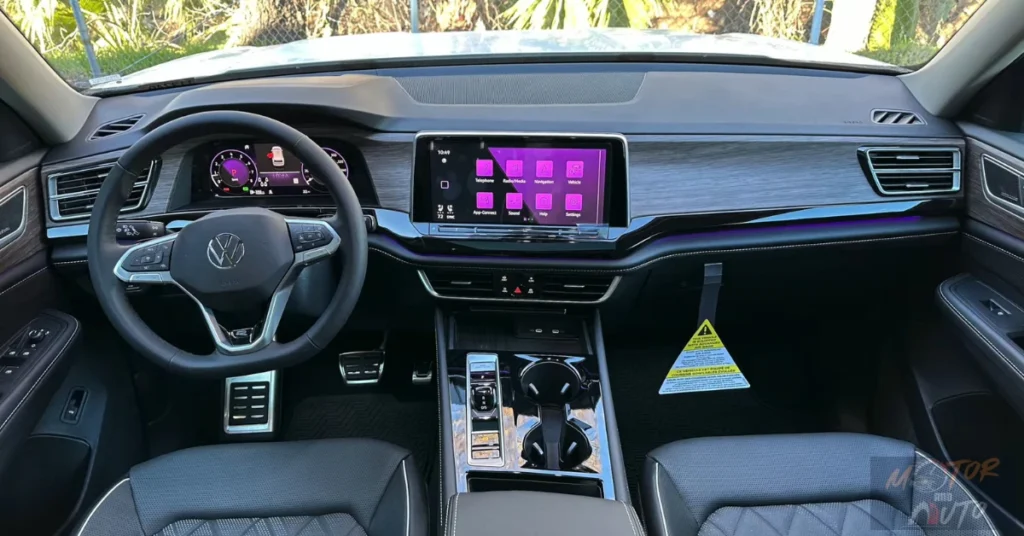
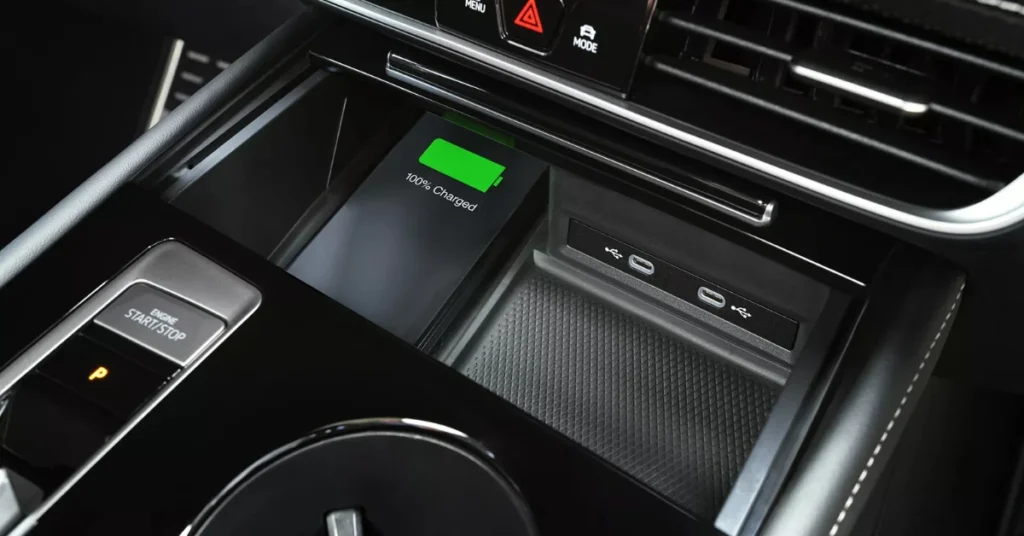
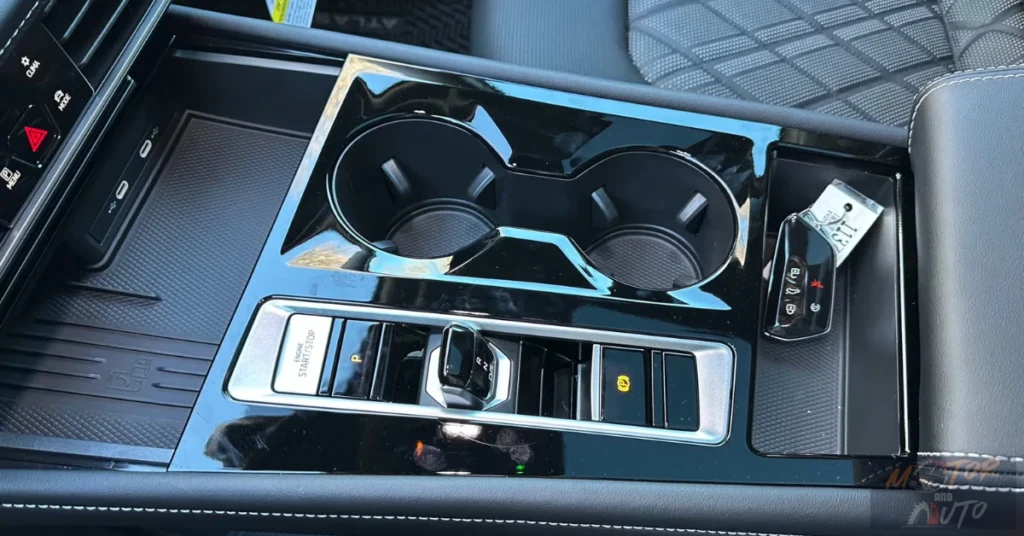
Starting off with the base SE trim, the front seats are upholstered in VTex leatherette and come with a 10-way power adjustment for the driver, plus heated surfaces as standard. If you decide to go for the higher trims, you get Vienna leather seating that not only heats but also cools. The SEL Premium R-Line takes it up a notch with diamond quilting, contrast stitching, and—get this—starting in 2025, a massage function for the front seats. A massage feature in a three-row SUV? That’s pretty uncommon and gives you a taste of the luxury you usually find in high-end vehicles. Plus, the front seats provide solid support for those long drives, and the elevated seating position means you’ve got great visibility all around.
Now, the second row can be set up in two ways: you can either go for a three-person bench seat—making room for seven passengers total—or opt for captain’s chairs, which brings the total down to six but boosts comfort for those in the back. The bench seat splits 60/40, and both setups can slide back and forth to balance legroom between the second and third rows. For instance, if the driver’s seat is adjusted for someone who’s 5’8″, a passenger who’s 5’9″ will still find around 10 inches of knee room, which really highlights how spacious the Atlas is inside. Plus, the second row reclines for extra comfort on those longer journeys, and if you’re in an SEL or higher trim, the outboard seats are heated too. Oh, and if you’re in the SE with Technology trim or above, there are manual rear window sunshades—definitely a nice touch to keep the sun out for those in the back.
Getting to the third row is pretty easy, thanks to a simple mechanism that allows the second-row seats to tilt and slide forward, even if you’ve got child seats in there. Unlike many rivals where the third row is basically just for kids, the Atlas is actually designed to fit adults comfortably too. You get about 34 inches of legroom and 38 inches of headroom back there, so even taller folks—like those close to 6 feet—shouldn’t feel too cramped. The third row also has its own USB-C charging ports, cup holders, and dedicated air vents to keep everyone comfortable. And if you don’t need the seats, they split 50/50 and can fold flat to give you more cargo space.
When it comes to climate control, the Atlas features a three-zone automatic system on most trims, letting the driver, front passenger, and rear passengers set their own temperatures. Rear controls are handy for second-row passengers, which is a nice perk. If you’re in the SE with Technology trim or higher, there’s even a household-style 115V power outlet in the second row, which is perfect for charging up laptops or gaming devices on those long road trips. Plus, you’ll find multiple USB-C ports scattered throughout the cabin—two in the front, two in the second row, and another two in the third row—so everyone can keep their devices powered up.
As for added convenience, there’s a hands-free power liftgate on the SE with Technology and higher trims, making it a breeze to access the cargo area when your hands are full. The panoramic sunroof, standard on the Peak Edition, SEL, and SEL Premium R-Line trims, stretches across almost the entire roof, flooding the interior with natural light and making it feel even more spacious. Oh, and every trim comes with a wireless charging pad for smartphones, which has been upgraded for 2025 to charge faster. The Atlas also provides plenty of storage options, like a roomy center console, large door pockets that can hold water bottles, and various small compartments for your personal items. And on the 2024 and 2025 models, the center console even has a pass-through storage area beneath the electronic shifter—super handy for stashing bags or other larger items that wouldn’t fit in regular storage bins.
Looking ahead to 2025, it’s exciting to see that most Atlas models featuring an active Car-Net subscription will integrate ChatGPT. Yup, that means we’re talking about some seriously advanced AI voice assistant capabilities right in your car. This system is designed to offer a more natural way to communicate than the usual voice command setups. So, passengers can ask complex questions, control various vehicle functions, or just get info by chatting casually rather than having to stick to specific command phrases. Sure, it’s still in the early days of being used in cars, but this AI integration hints at a future where in-car assistants will become smarter, understanding context and adapting to what each user prefers over time.
Now, if we dig into the SEL Premium R-Line trim, you’ll find a premium Harman Kardon sound system. It’s got 12 speakers placed all around the cabin, creating an immersive audio experience. The sound? Well, it’s all about balance—with crisp highs, clear mids, and good bass. Honestly, it’s one of the better audio setups you’ll find in the mainstream three-row SUV market. For those opting for lower trims, there’s a six-speaker system—maybe not as fancy, but it still does a decent job for everyday listening. Plus, all Atlas models come with SiriusXM satellite radio, giving you access to a broad range of entertainment and information that goes beyond the standard AM/FM stations.
The wireless charging pad comes standard on all trims and has been upgraded for 2025 to charge your devices faster. Volkswagen’s Car-Net connected services platform is pretty neat too. It offers a bunch of features like remote access to your vehicle—meaning you can lock or unlock the doors or even start the engine right from your phone. You also get vehicle health reports, automatic crash notifications, and help with locating a stolen vehicle. For those with higher trims, the Car-Net system can even provide parking information services, guiding drivers to available spots in certain areas. There’s also Last Mile Navigation, which sends walking directions to your phone for that last bit of your journey after you’ve parked. Of course, some of these connected features will need a subscription after the initial trial period, but they really show how Atlas is becoming part of the larger ecosystem of connected transport services that are shaping the modern driving experience.
Safety and Security:
No matter what trim level you get, you’ll find Volkswagen’s IQ.DRIVE suite of advanced driver assistance systems as standard. This includes a forward collision warning system with autonomous emergency braking, which is pretty neat because it can spot both vehicles and pedestrians. It works at city and highway speeds, which means it can actually help lessen the impact—maybe even stop a crash—if the driver doesn’t react to a hazard. Also, you get blind spot monitoring and rear cross-traffic alerts on every Atlas, giving you handy visual and audible warnings when something’s sneaking up on you from the sides, especially when you’re backing out of a parking spot.
Now, if you opt for the SEL trim or higher, you’ll also get lane-keeping assistance and adaptive cruise control with stop-and-go. Together, they create what’s called the Travel Assist semi-automated driving system. It’s designed to keep the car centered in its lane and adjust speed based on the traffic ahead. This can really help take the edge off during long drives. While it’s not fully hands-free, it definitely makes driving less tiring, as long as you’ve got an attentive driver behind the wheel. Honestly, it does a pretty good job of keeping the car in line, even on those gradual curves, and it adjusts speed smoothly with the flow of traffic.
As for airbags, the Atlas has you covered with a solid array. You’ve got front and side airbags for those in the front seats, plus side curtain airbags that stretch across all three rows, and even a driver’s knee airbag. It’s built with high-strength steel in important areas, creating a tough safety cage around the passengers while also having crumple zones designed to soak up impact energy in case of a collision. The safety engineering on the Atlas is impressive—last year’s model got a 5-star Overall Safety Rating from the National Highway Traffic Safety Administration (NHTSA), so you know it’s built right.
If you’re looking at the SE with Technology trim or higher, you’ll find parking sensors that give you both visual and audible alerts as you get closer to obstacles. Then, there’s the SEL Premium R-Line, which comes with a 360-degree camera system. This gives you a bird’s-eye view of your surroundings, which is super helpful for parking in tight spots. Plus, it has a nifty parking assistance feature that can steer the vehicle into parallel or perpendicular spaces while you just manage the accelerator and brakes. For families with teen drivers, the Atlas has some cool features like programmable speed alerts and geographic boundary notifications through the Car-Net connected services. This means parents can get notifications if the car goes over a certain speed or drives outside an area they set.
When it comes to security, you get an anti-theft alarm system with an immobilizer, which is a fancy way of saying that the engine won’t start unless you have the right key. And if you go for the SE with Technology or higher, there’s remote start capability, letting you heat or cool the cabin before you even step inside. The Atlas also includes Volkswagen’s Automatic Post-Collision Braking System, which kicks in after a collision is detected to help prevent any secondary impacts. All in all, this thorough focus on safety—mixing crash prevention tech, occupant protection features, and post-collision systems—really shows Volkswagen’s dedication to keeping everyone safe in the Atlas, no matter where the road takes you.
On the Road with the Volkswagen Atlas:
When you get behind the wheel of the 2025 Volkswagen Atlas, you’re in for a ride that leans heavily on comfort, confidence, and usability—not so much on sporty thrills. The seating position is elevated, giving you a fantastic view all around, which is super helpful for navigating those tight city streets, especially considering how big this vehicle is. The 2.0-liter turbocharged four-cylinder engine delivers acceleration that’s smooth and steady, with enough torque available right from the low end. So, when you’re merging onto highways or passing slower vehicles, it feels pretty responsive. Sure, if you’re a sports car fan, its acceleration numbers might not blow you away, but it does the job well. The transmission? It shifts seamlessly, staying mostly in the background, only making its presence known during those moments of aggressive acceleration when it keeps the engine in its sweet spot.
Noise levels from the road and wind: They’re kept in check at highway speeds, sitting around 56.4 decibels at 55 mph—pretty decent for the class. If you opt for the bigger 21-inch wheels, you might notice a bit more road noise compared to the 18-inch or 20-inch options, especially on rougher surfaces, though it’s a minor difference. And then there’s the Peak Edition, which has all-terrain tires that produce a slightly different sound, thanks to its more aggressive tread. Overall, the Atlas manages noise, vibration, and harshness (NVH) quite well, making conversations or listening to music enjoyable even on longer trips.
Now, let’s talk ride quality. This is where the Atlas shines. Its suspension is designed to soak up road imperfections without losing its cool. Even with those 21-inch wheels on the SEL Premium R-Line trim, it offers impressive comfort, keeping passengers insulated from all but the worst potholes. Of course, this focus on comfort means it’s not the sharpest handler out there; you might notice some body roll in corners and a hesitance to tackle winding roads aggressively. But hey, that’s what you want in a family-friendly three-row SUV, right? Comfort comes first here.
The 4Motion all-wheel-drive system—standard on the Peak Edition, SEL, and SEL Premium R-Line, and optional on the lower trims—works pretty seamlessly in everyday driving. It primarily powers the front wheels to save on fuel but can kick in power to the rear wheels when needed for better traction. Plus, you get to choose from different drive modes: Eco, Comfort, Sport, Custom, Off-Road, and Snow. Each one tweaks how the vehicle responds, from powertrain performance to steering feel. In Sport mode, the steering gets a bit heavier, and throttle response sharpens up, but don’t expect it to turn into a sports car—athletic vibes just aren’t its thing.
For daily commutes and family road trips—which is how most folks will use it—the Atlas really nails what buyers are after: a comfy, composed ride that’s easy to handle. The light steering at low speeds makes parking a breeze, even for a vehicle of this size. Plus, the brake pedal is nicely calibrated, allowing for smooth stops without any jolts. If you go for the higher trims, you get standard front and rear parking sensors, and there’s also a 360-degree camera system available on the SEL Premium R-Line, which makes tight parking spots a lot less stressful.
Now, fuel economy isn’t leading the pack, but it’s definitely better than the previous V6 Atlas models. Front-wheel-drive versions get about 20 mpg in the city and 27 mpg on the highway, and all-wheel-drive models come in at around 19 mpg city and 26 mpg highway. The Peak Edition has slightly lower numbers at 18 mpg city and 24 mpg highway. In real-world driving at 75 mph, an all-wheel-drive Atlas managed to return roughly 25 mpg, which is pretty much in line with what the EPA estimates. With a full tank, you can expect about 460 miles of driving range—great for road trips! Plus, the turbo engine runs on regular unleaded fuel, which helps keep costs down.
One thing that sets the Atlas apart from many of its car-based crossover competitors is its more substantial, truck-like feel. This gives it a commanding presence on the road that a lot of SUV buyers find appealing. It instills a sense of security and solidity. But don’t worry, it doesn’t suffer from the clunky handling or rough ride that can come with traditional body-on-frame SUVs. It strikes a nice balance, giving you the benefits of a larger vehicle while still being practical for everyday driving. The Peak Edition leans into that truck-like vibe a bit more with its rugged styling and all-terrain tires, though its driving dynamics are quite similar to other Atlas models, with just minor differences in ride quality and road noise.
The Atlas’s driver assistance systems, particularly on SEL and higher trims equipped with Travel Assist, reduce fatigue during highway journeys by maintaining lane position and following distance from vehicles ahead. While not a hands-free system, Travel Assist works smoothly and predictably when supervised by an attentive driver, intervening gently when needed rather than with abrupt corrections. The adaptive cruise control portion of this system handles stop-and-go traffic competently, bringing the vehicle to a complete stop when traffic ahead stops and resuming automatically when traffic begins moving again. The lane-keeping function centers the vehicle well even through gentle curves, though it will request driver intervention during sharper turns or if lane markings are unclear.
Volkswagen Atlas Rear Seat Comfort
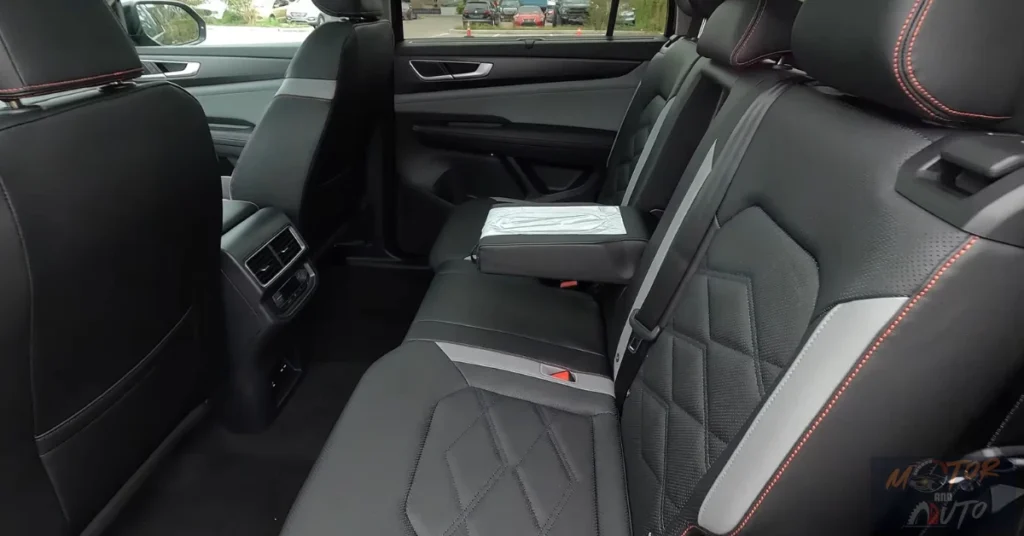
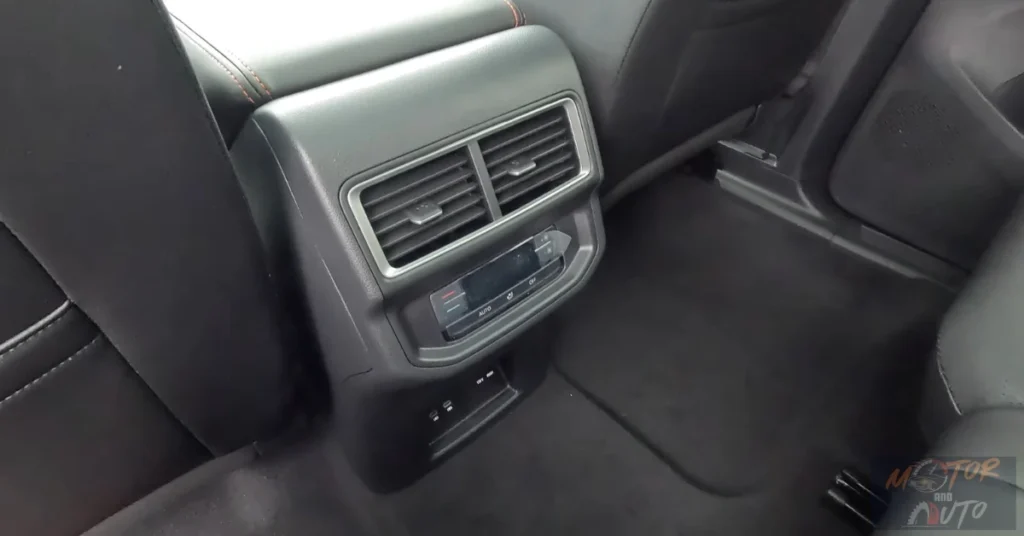
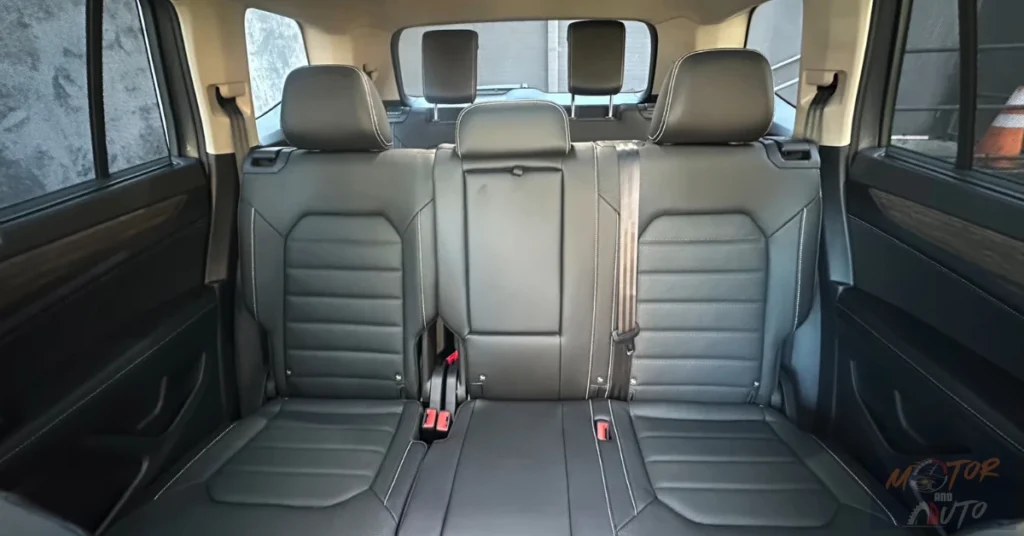
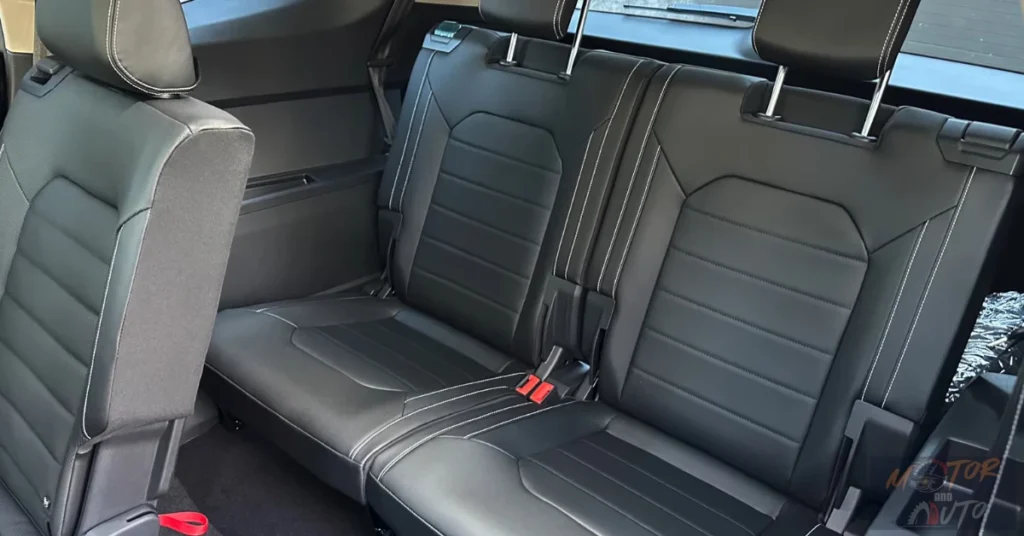
When you take a look at the rear seating in the 2025 Volkswagen Atlas, you can really see how it stands out from the crowd, especially with the roominess of the second and third rows. Now, the second row: It can be set up in a couple of ways: you can go for a 60/40 split-folding bench seat or, if you prefer, optional captain’s chairs. Sure, choosing the captain’s chairs means you’ll have a seating capacity drop from seven to six, but hey, it does offer a bit of a touch of luxury and makes it easier to get to the third row.
So, Volkswagen claims that the bench configuration gives you around 38 inches of legroom. But honestly, that seems a bit on the conservative side. A 5’9″ passenger sitting behind a 5’8″ driver still has about 10 inches of knee space left, which is impressive and just shows how spacious the Atlas really is.
The second-row seats are pretty flexible too. They can slide back and forth, which helps you balance legroom between folks in the second and third rows. Plus, those seatbacks recline quite a bit, letting everyone find their sweet spot for comfort on those long drives. And the floor is almost flat, with just a tiny hump in the middle, which makes that middle seat way more usable compared to other cars where the big transmission tunnel gets in the way. And with over 40 inches of headroom, even taller passengers can sit comfortably, hats and all.
Getting into the third row is a breeze, thanks to a simple mechanism that tilts and slides the second-row seats forward without much hassle. And you know what’s great? You can still use this feature with child safety seats in place (as long as the seats aren’t occupied). That’s a real game-changer for families who need to access the third row regularly instead of just once in a blue moon. If you go for the captain’s chairs, there’s even a center aisle that makes getting to the back row even easier, though you’ll lose out on one seat.
Speaking of the third row, it really deserves a shout-out. It’s surprisingly spacious for adults. With about 33.7 inches of legroom and 38 inches of headroom, according to what Volkswagen says, it can actually accommodate adult passengers without making them feel cramped, which isn’t the case in many other SUVs where the third row is more like a kids-only zone. Even if the second row is pushed all the way back, a 5’9″ person can still squeeze into the third row with around 1.5 inches of knee space – tight, but totally workable. Slide that second row forward a smidge, and it’s a lot more comfy for everyone.
Now, let’s talk about those nice little extras in both the second and third rows that make a difference. In the second row, you’ve got dedicated air vents (either in the center console or ceiling, depending on which trim you choose), so everyone can adjust the temperature without relying on the front. There are two USB-C ports to keep devices charged up, plus a household-style 115V outlet on the SE with Technology trim and higher—perfect for laptops or gaming gear. Oh, and the outboard second-row seats are heated on SEL trims and up.
As for the third row, passengers get their own USB-C ports on the left side, cup holders on both sides and air vents built right into the C-pillars to keep the air flowing. There are even reading lights that shine down on your lap instead of just general overhead light—nice touch!
Volkswagen really seems to get what families need with these rear seating areas. You’ve got multiple storage pockets, easy-to-clean materials on the lower trims, and manual window shades on the SE with Technology trim and above to block out that bright sunlight. All in all, the space and comfort you find in the Atlas, especially with that genuinely usable third row, make it a fantastic choice for families who often find themselves carting around multiple passengers or carpooling with others. Sure, some rivals might offer fancier materials or features in their second rows, but few can match the Atlas when it comes to combining space, comfort, and smart design throughout all those rear seating spots.
Bootspace and Practicality
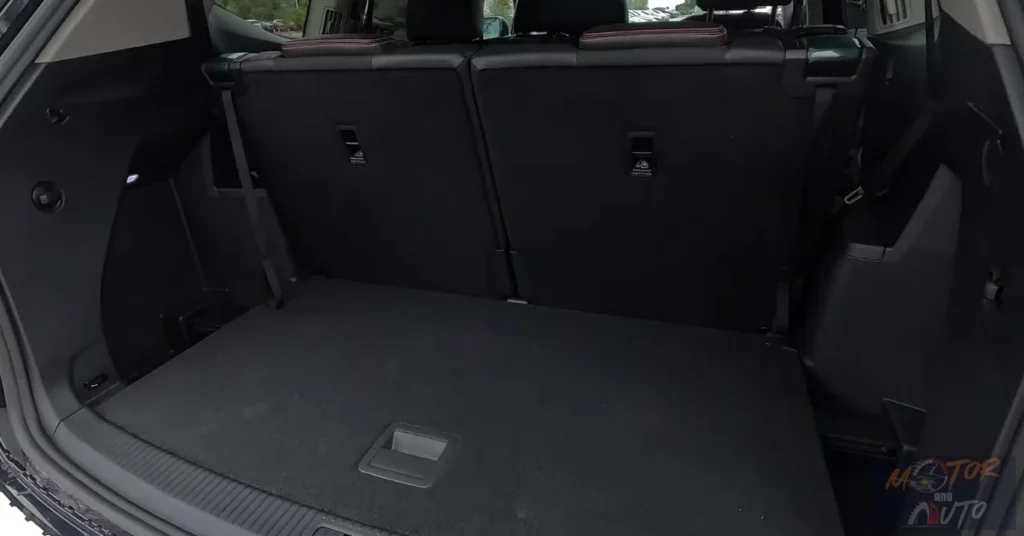
When it comes to the 2025 Volkswagen Atlas, you really can’t overlook its cargo capacity. It’s one of the biggest draws for families who lead busy lives. So, right behind that third row, you’ve got a solid 21 cubic feet of cargo space. That’s way more than what many other SUVs can offer in this kind of setup. This means, that when the Atlas is fully loaded with all seven passengers, there’s still room for everyone’s luggage—something you don’t see every day in a three-row SUV.
Now, if you need more room, folding down the 50/50-split third row opens things up to a whopping 56 cubic feet. That’s plenty of space for larger stuff like bikes, furniture, or all those bags when you’re heading out on vacation with up to five passengers. The best part is that the third-row seats fold flat super easily, thanks to some handy release straps. You just pull them, and boom! You’ve got a seamless cargo floor, making it a breeze to load up.
If you need to max out your cargo space, folding down both the second and third rows gives you an impressive 97 cubic feet. That’s practically cavernous—rivaling what some full-size SUVs provide. So, whether you’re tackling a big shopping spree, picking up home improvement supplies, or helping a friend move, the Atlas has you covered where many others might falter.
Let’s talk about the power liftgate, which comes standard on the SE with Technology trim and higher. It’s got this cool hands-free opening feature. Just wave your foot under the rear bumper when your key fob’s nearby, and voilà! Perfect for when your hands are full of groceries or whatever. Plus, it opens or closes in about six seconds—faster than a lot of competitors. Oh, and you can set the height of the liftgate, which is super handy for garages with low ceilings or if you’re on the shorter side and can’t quite reach a fully extended liftgate.
There are also some thoughtful storage features in the cargo area. You’ve got little compartments on both sides that keep smaller items secure so they don’t roll around. There’s even a 12-volt outlet on the driver’s side, great for powering up things like portable coolers or air compressors. And beneath the cargo floor, you’ve got more storage around the spare tire well—perfect for stashing emergency supplies or valuables you want to keep out of sight. And that cargo privacy cover? You can tuck it under the floor when you’re not using it, so it doesn’t eat up any cargo space.
Loading stuff into the Atlas is easier too, thanks to a low lift-over height of about 30 inches. That really cuts down the effort when you’re lifting heavy items. The cargo area is also wide, more than 46 inches at its narrowest point, which is great for fitting in wide items like flat-pack furniture. And with both the second and third rows down, you’ve got around 89 inches of cargo length—meaning you can fit items up to 7.5 feet long with the liftgate closed. All these generous dimensions, smart features, and flexible configurations make the Atlas a top pick for families needing to haul anything from sports gear to DIY supplies.
The Volkswagen Atlas Value Proposition: Is It Worth the Price?
The 2025 Volkswagen Atlas certainly makes a strong case in the crowded world of three-row SUVs. Pricing starts at about $39,625 for the base SE trim and climbs to around $54,630 for the fully loaded SEL Premium R-Line. This puts the Atlas in a solid position against competitors like the Kia Telluride, Honda Pilot, and Toyota Grand Highlander. So, is it worth the price tag? Well, there are several things to think about, especially when it comes to interior space.
First off, the Atlas shines with its roomy interior. The third row is one of the best in the segment, no doubt. Plus, it boasts impressive cargo capacity. This makes it a fantastic option for families needing that extra space—perfect for those who often find themselves using all three rows or require a lot of cargo room. Honestly, that practical benefit could be what convinces many buyers that the price is justified, especially when other SUVs fall short in this area.
Now, let’s talk about features. Even the base SE trim comes loaded with great stuff that might cost extra on other models. We’re talking LED headlights with adaptive front lighting, a hefty 12-inch infotainment touchscreen, and wireless Apple CarPlay and Android Auto. Not to mention, there’s a 10.25-inch digital instrument cluster, heated front seats, a heated steering wheel, and a whole suite of driver assistance tech. And for 2025, the upgraded wireless charging pad is a nice touch that boosts the value across all trims. If you move up to the higher trims, you’ll find even more luxurious features, like Vienna leather seats, ventilated front seats, heated rear seats, a panoramic sunroof, and ambient interior lighting—giving that upscale feel without the luxury price tag.
If you’re looking for a sweet spot in the lineup, the SE with Technology trim, coming in around $43,730, might be it. You get significant upgrades without the hefty price jump of the higher trims. This trim adds handy features like a hands-free power liftgate, remote start, rear window sunshades, tri-zone climate control, a household-style power outlet, and rear USB-C ports. Oh, and let’s not forget the trailer hitch, which is crucial for that full 5,000-pound towing capacity. If you want 4Motion all-wheel drive, you can add it for about $1,900, keeping the total under $46,000. That’s still pretty competitive in the market.
For folks who want a bit more flair without going all the way to the SEL Premium R-Line, there’s the Peak Edition variant built on the SE with Technology trim. It features standard all-wheel drive, some unique styling bits, and all-terrain tires for a rugged look. While it doesn’t really boost off-road capabilities (the ground clearance is still just 6.3 inches), it does give a more adventurous vibe. Priced at $48,080, it sits nicely between the SE with Technology and SEL trims.
About the SEL Premium R-Line: Sure, it’s pricey at $54,630, but it comes packed with features you don’t typically see in this class. There’s a new front seat massage function, borrowed from Volkswagen’s Audi brand, plus a high-end Harman Kardon audio system, fancy diamond-quilted leather seats, 21-inch alloy wheels, and a complete tech suite including a 360-degree camera. This trim doesn’t just compete with mainstream rivals; it also flirts with the entry-level luxury SUV market. For buyers who want those premium touches without the luxury badge price, this model could be quite tempting.
Now, when you’re thinking long-term, ownership costs for the Atlas are a bit of a mixed bag. Volkswagen’s warranty is decent—4 years/50,000 miles for the limited warranty. But the powertrain coverage is the same length, which isn’t as good as some competitors offering 5 years/60,000 miles or even up to 10 years/100,000 miles, like Kia and Hyundai. On a positive note, Volkswagen throws in 2 years/20,000 miles of complimentary scheduled maintenance, which is a nice perk that Toyota also provides, but others might not. The projected resale value after 5 years is around 51.8% of the original MSRP. That’s not quite as strong as what you’d see from Toyota or Honda, but it’s still respectable. And considering Volkswagen’s track record for reliability tends to be a bit lower than Japanese brands, the overall cost of ownership might be on the higher side compared to leaders like the Toyota Highlander or Honda Pilot.
Ultimately, whether the 2025 Volkswagen Atlas is worth its price depends on which attributes buyers prioritize most. For families who place a premium on interior space, particularly in the third row, along with cargo capacity, straightforward functionality, and a comfortable ride, the Atlas delivers exceptional value. The competitive standard feature set, thoughtful family-friendly design elements, and solid towing capability further strengthen its case. However, buyers who prioritize cutting-edge styling, best-in-class fuel economy, top-tier reliability ratings, or sporty handling may find better alignment with their preferences elsewhere in the segment. The Atlas represents a practical, spacious, and comfortable option that excels in family-oriented transportation without unnecessary flash or pretension – a proposition that many buyers will find worth the asking price, particularly in the sweet-spot SE with Technology trim with the optional 4Motion all-wheel drive system.


